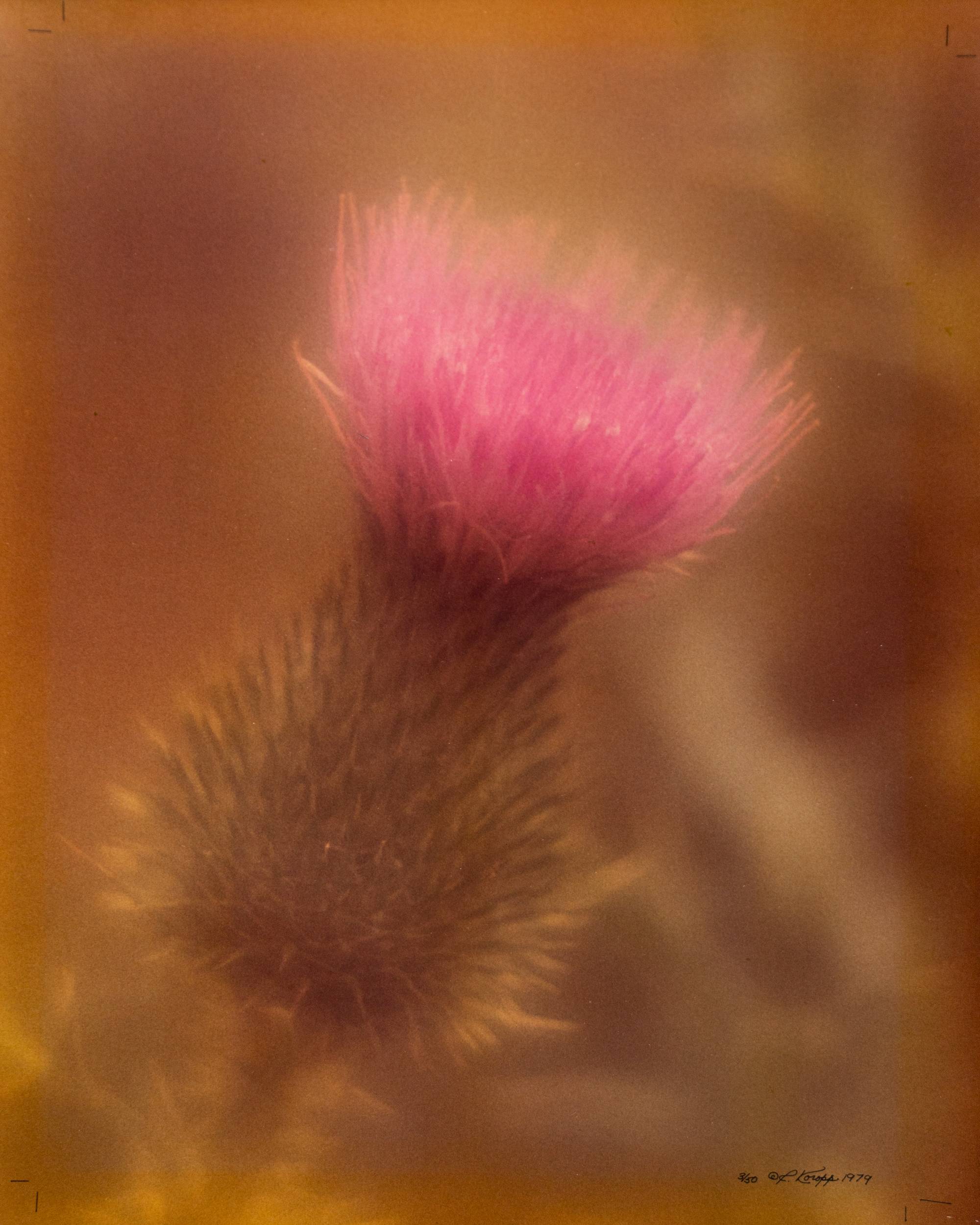Photography from the Collection
Photography has come a long way in its almost 200-year history from the camera developing from a plain box that took hours to create blurry images to the high-tech devices in today’s smartphones and digital cameras. When photography arrived in the United States in the early 19th century, it allowed ordinary people the ability to make and own images in a way that had previously only been available to the rich. Photographers suddenly became a part of the story of an emerging nation, documenting the country’s changing cultural and physical landscapes.
The GVSU Art Museum has a wide range of photography in the collection including early tin-types, daguerreotypes, and real photo postcards. It also includes more contemporary digital photography by local and international photographers exploring both color and black and white imagery.
Early Photography
Early cameras worked more like projectors, projecting a reversed image through a small opening onto an opposite surface, a natural phenomenon known as camera obscura or pinhole images. Such devices were used through the 16th century to study optics and astronomy when new lens technology allowed for brighter and sharper images.
This early technology could not become a photographic image until the use of light sensitive materials, such as bitumen, became part of the process. Many scientists played a role in the development of using light sensitive materials to record images that eventually led to the first photograph being developed by Nicéphore Niépce in 1826. It was made on a polished sheet of pewter covered in bitumen. The sheet was exposed to light for days, creating areas of unhardened bitumen that could be removed with a solvent, leaving behind an image, the first recorded photograph.
Daguerreotypes
Niépce suddenly died in 1833, leaving behind his notes to Louis Daguerre who became more interested in a silver-based photographic process. To make the image, a daguerreotypist polished a sheet of silver-plated copper to a mirror finish. They then treated it with chemicals to make the surface light sensitive. After it was exposed to light to capture the image, it was given a chemical bath to end its sensitivity to light, rinsed, dried and sealed behind a protective piece of glass.
This process created a mirror-like silver-surfaced plate that appears either positive or negative depending on the angle at which it is viewed. “Daguerreotypes” were introduced worldwide in 1839 as the first publicly available photographic process and was the primary photographic process until the late 1850s.
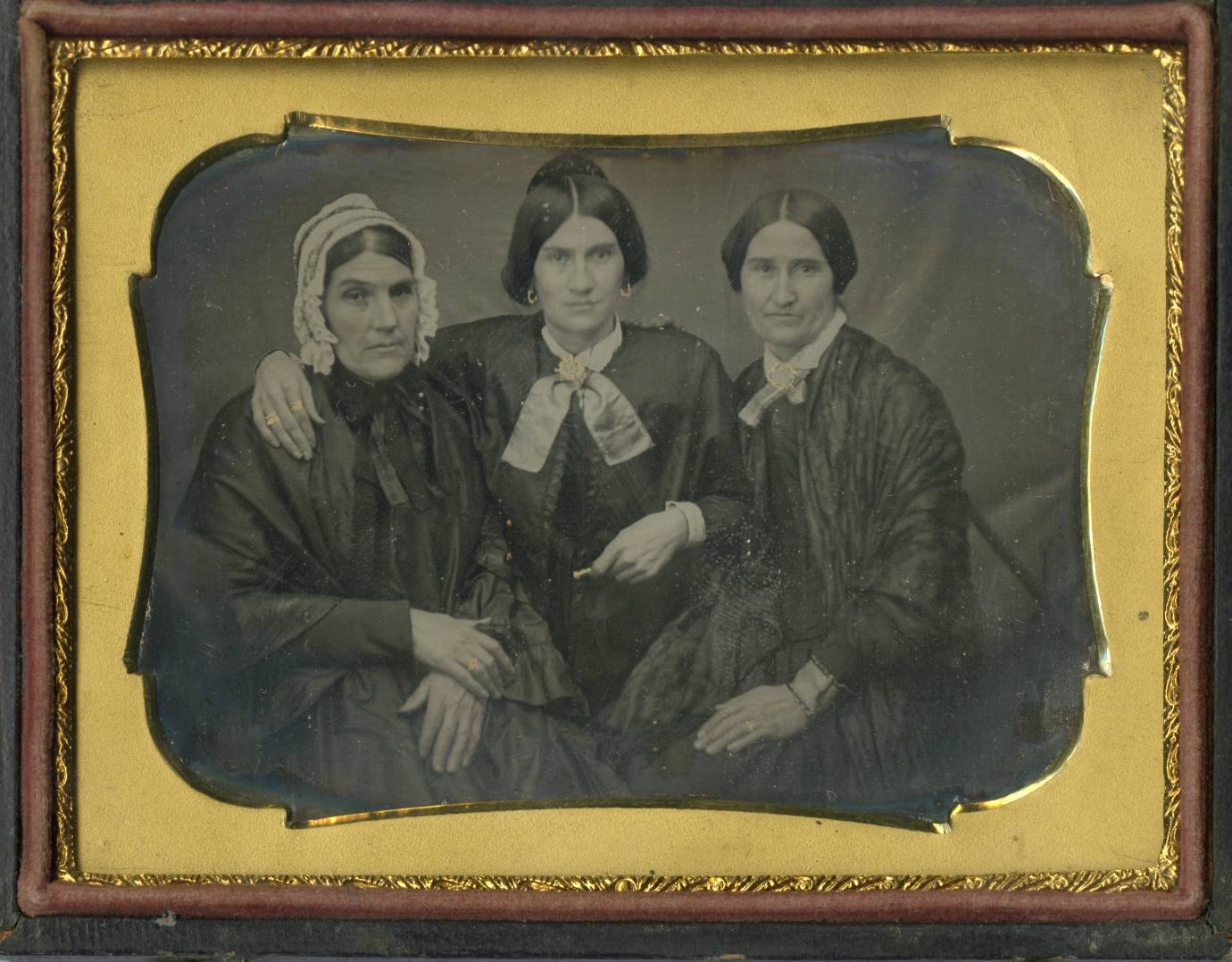
Artist Unknown, Untitled (Portrait of Three Women), circa 1860. 2021.33.24
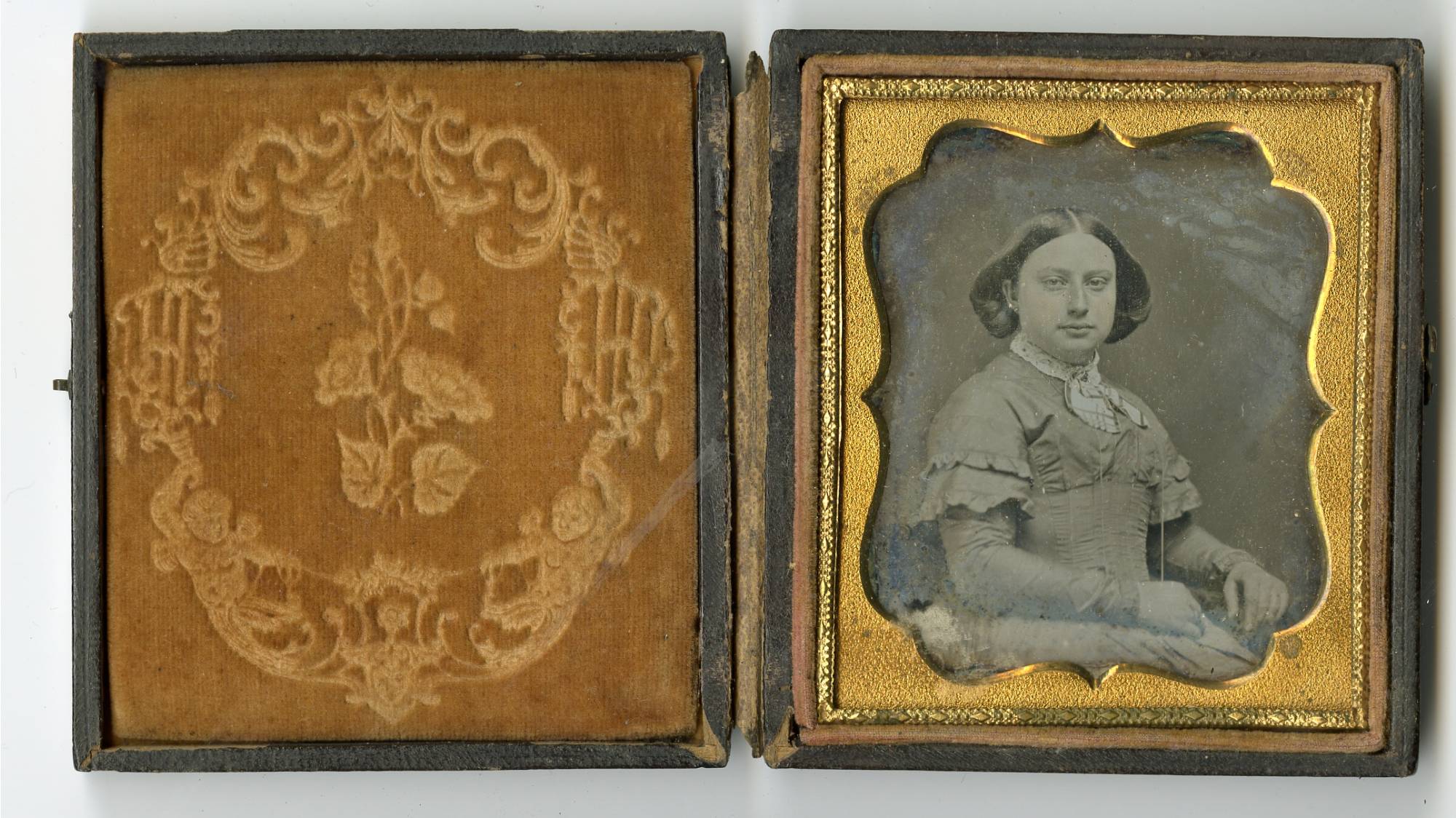
Artist Unknown, Untitled (Portrait of a Woman), circa 1865. 2020.1.204
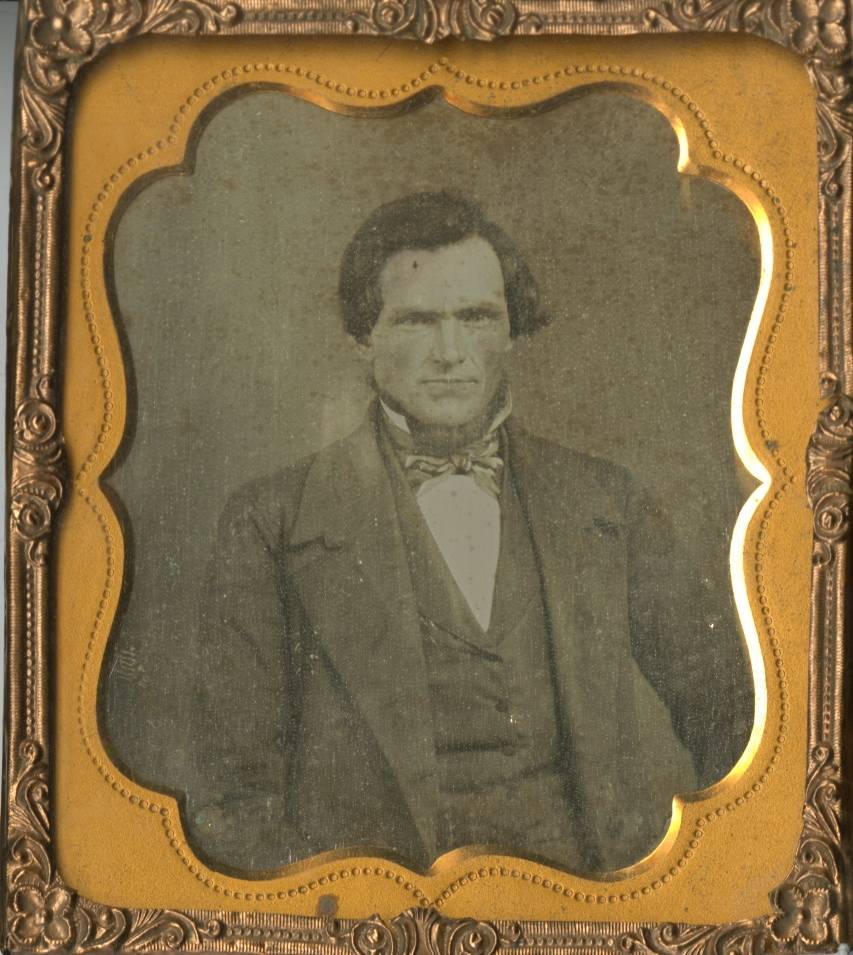
Artist Unknown, Untitled (Portrait of a Man), circa 1865. 2021.33.37
Ambrotypes
The ambrotype was the first positive image created on glass made by a variant of the wet plate collodion process. This process requires the photographic material to be coated, sensitized, exposed and developed within fifteen minutes. In order to do so, portable darkrooms were required for use outside or in the studio. This process was first invented by Frederick Scott Archer, but patented by James Ambrose Cutting in 1854. The ambrotype was less expensive and faster to create, and quickly replaced the daguerreotype process. Ambrotypes also no longer had the reflective background, making daguerreotype images difficult to see, but were more fragile and required cases to keep them protected.
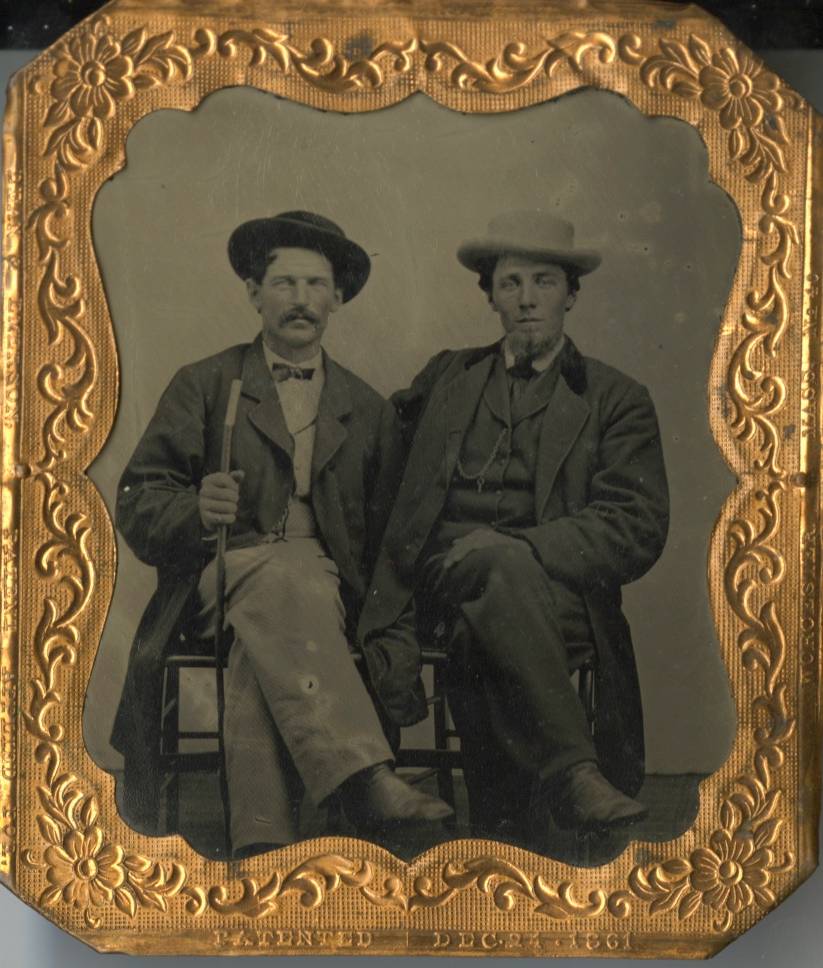
Artist Unknown, Untitled (Portrait of Two Men), circa 1880. 2021.33.29
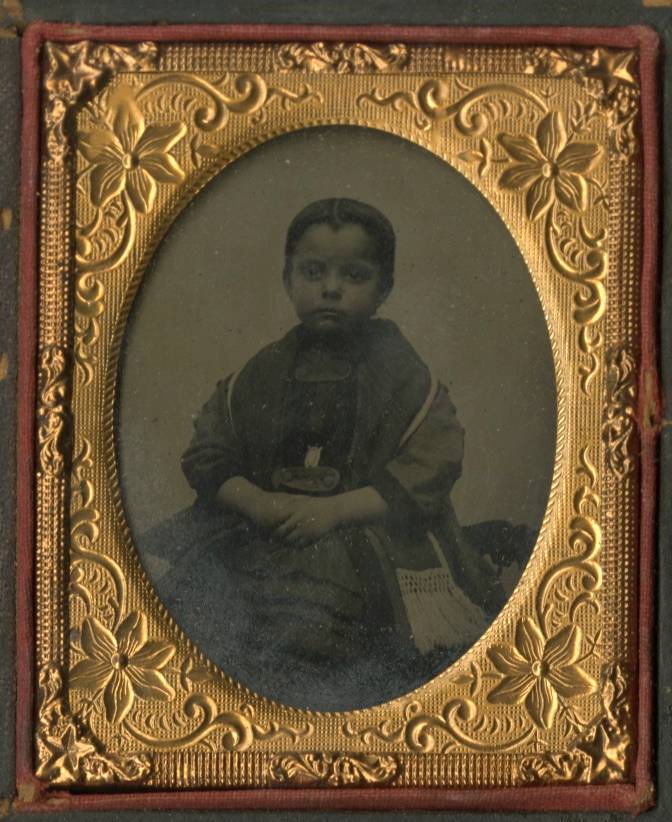
Artist Unknown, Untitled (Portrait of a Child), circa 1865. 2021.33.53
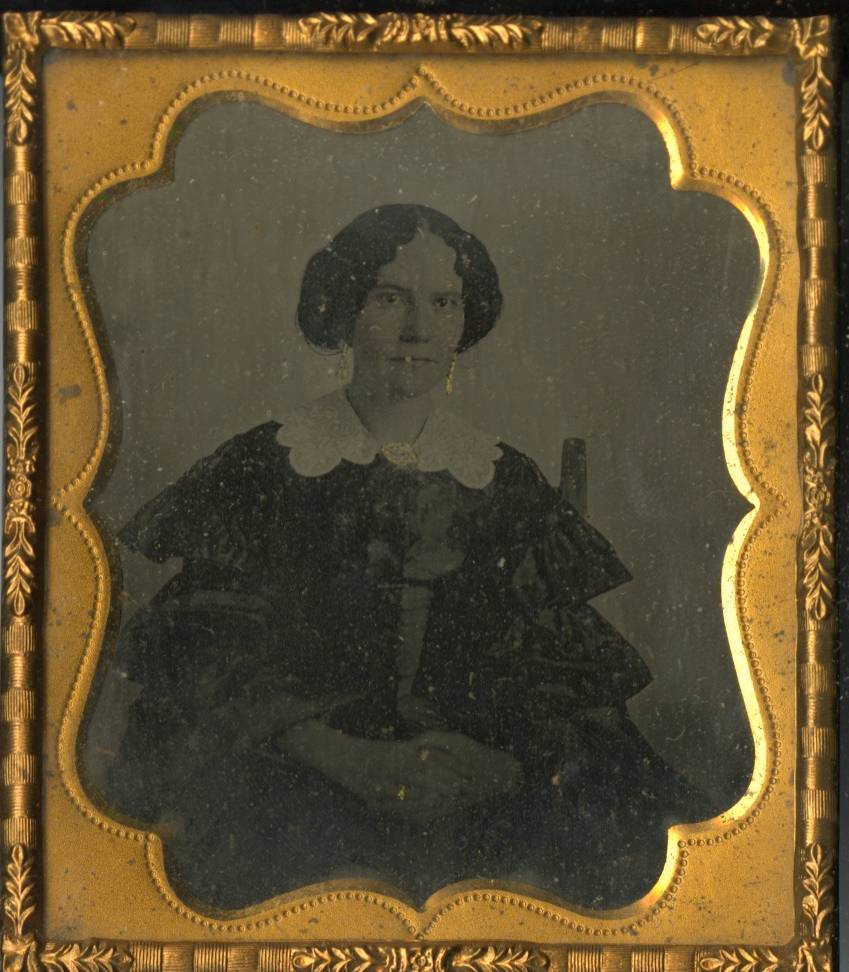
Artist Unknown, Untitled (Portrait of a Woman), circa 1865. 2021.33.23
Tintypes
The tintype was essentially a variant of the ambrotype, using a dry or wet collodion emulsion process, replacing the glass plate with a thin sheet of iron (tin was never actually used). Tintypes were very durable, inexpensive and relatively easy and quick to make. Like its predecessors, tintype portraits were at first created in formal photographic studio settings, but because the process was quicker, more resilient, and did not require a drying time, a tintype could be developed, fixed and handed to the customer only a few minutes after the picture was taken. This quicker process took the camera out of the studio and onto the streets of a quickly changing America. Photographs were no longer just for portraiture, but for documenting the world around the photographer.
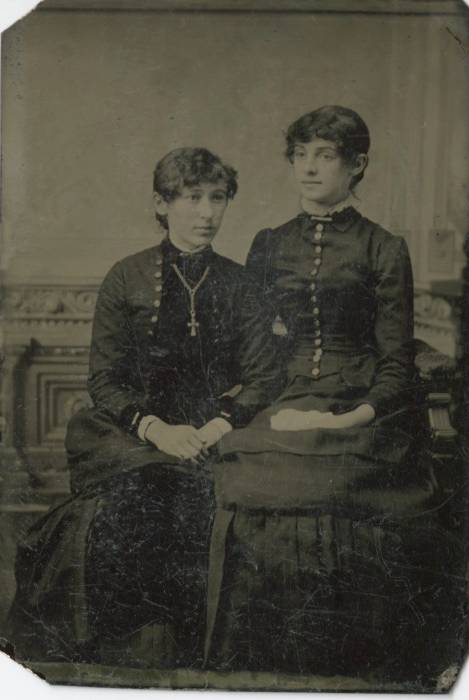
Artist Unknown, Portrait of Alice and Ida, circa 1875. 2020.1.516
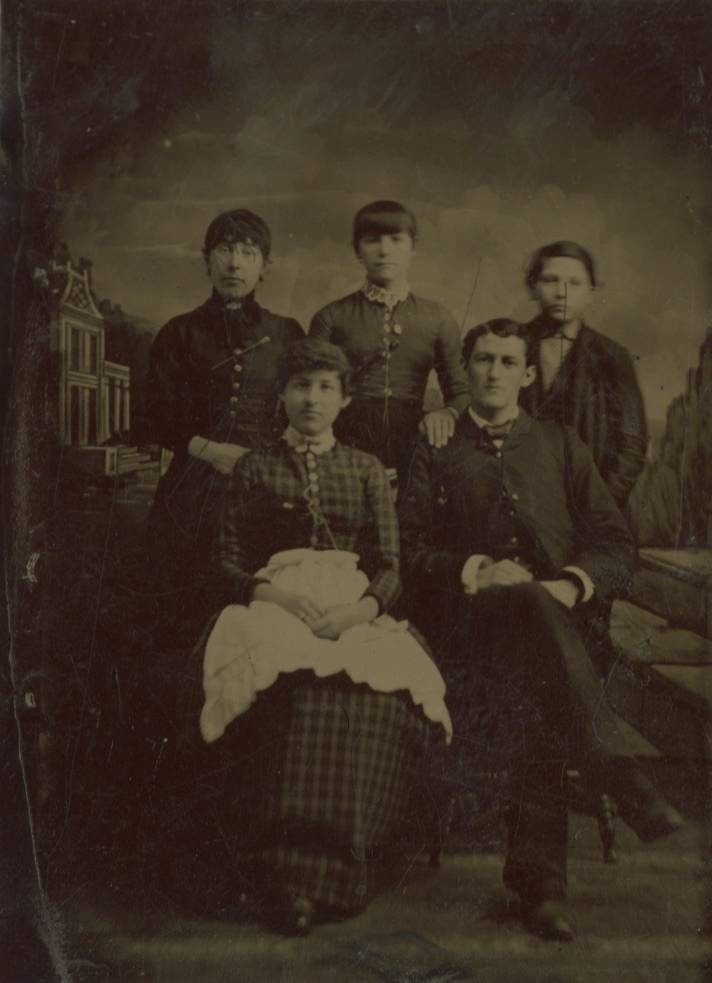
Artist Unknown, Untitled (Portrait of Five Young Adults), circa 1890. 2021.33.163
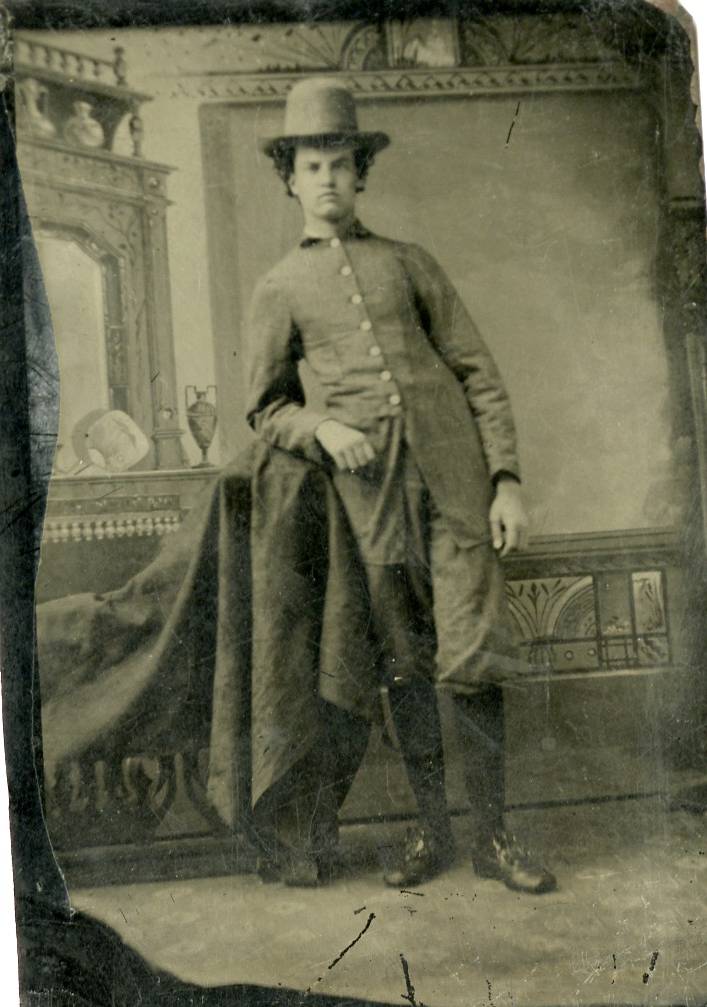
Artist Unknown, Untitled (Portrait of a Man), circa 1865. 2020.1.168
Photography in Society
The albumen print was first published in 1847 by Louis Désiré Blanquart-Evrad as the first commercial method of producing a photographic print on a paper base from a negative. It used albumen found in egg whites to bind the photographic chemical to the paper that is then dipped in silver nitrate, making the surface sensitive to UV light. This paper is set under the negative that is exposed to light until the desired image is achieved. This process was the dominant form of photography from 1855 until the start of the 20th century.
Cartes de Visite
Cartes de visite are small photographs that used the albumen print process where the thin paper photograph is attached to a thicker paper card. Each card is the size of a visiting or calling card, slightly larger than today’s business cards. The photographic cards were commonly traded among friends and visitors in the late 1860s. The popularity of these cards also led to the publication and collecting of photographs of prominent and famous individuals for the time.
Cabinet Cards
Cartes de visite were replaced by larger cabinet cards in the 1880s. Still created using the albumen print process, cabinet cards are simply larger and usually included more extensive logos and information on the front and reverse side of the card to advertise the photographer. The images were large enough to be viewed across the room, where they were often displayed on a cabinet, which is likely how they got their name. For nearly three decades, cartes de visite and cabinet cards dominated the commercial portraiture industry, until personal photography became commonplace.
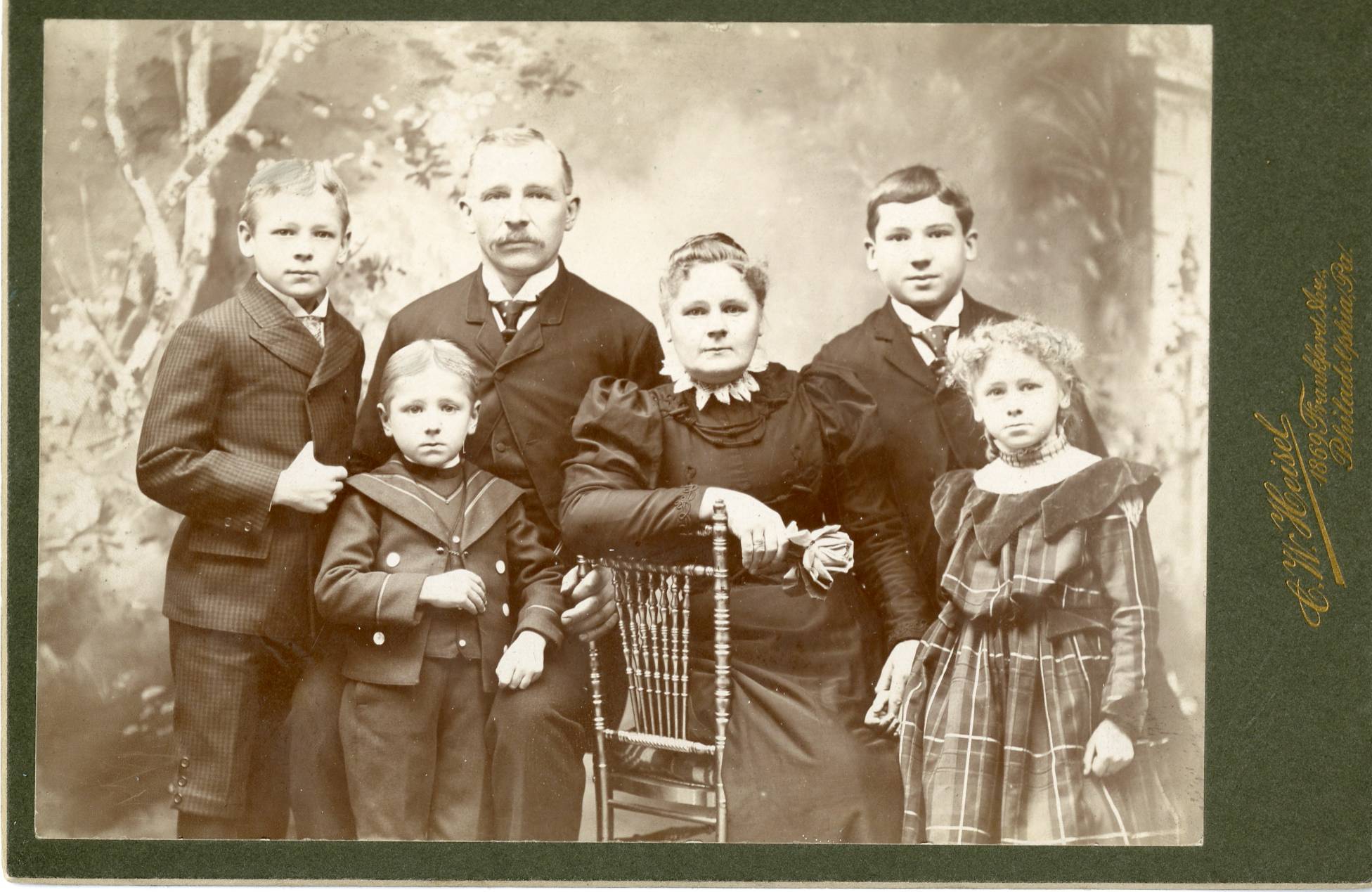
Battum, Untitled (Portrait of Three Men), circa 1900, 2021.33.1549
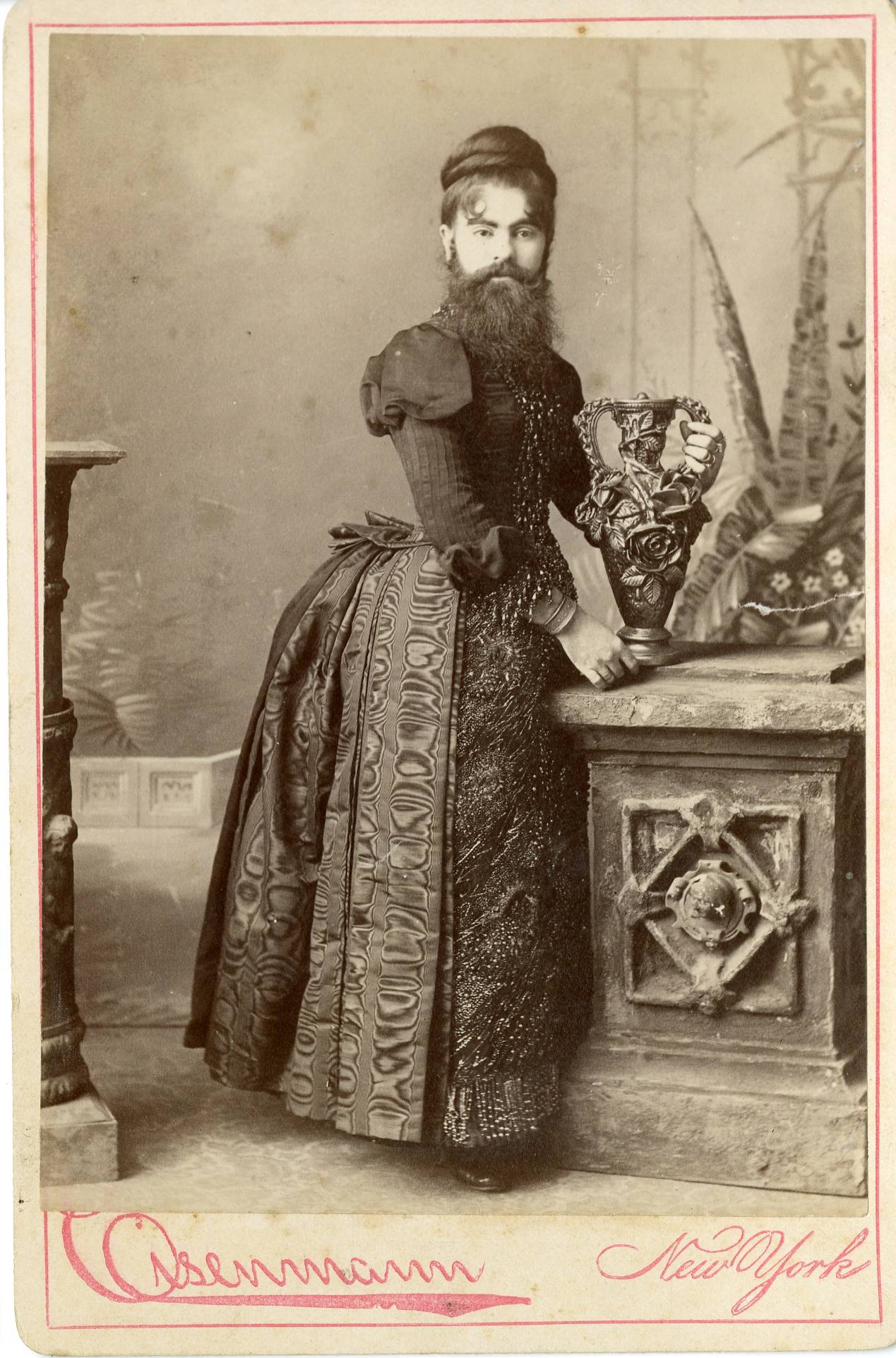
Charles Eisenmann, Portrait of Miss Annie Jones-Bearded Woman with P.T. Barnum, circa 1888, 2020.1.120
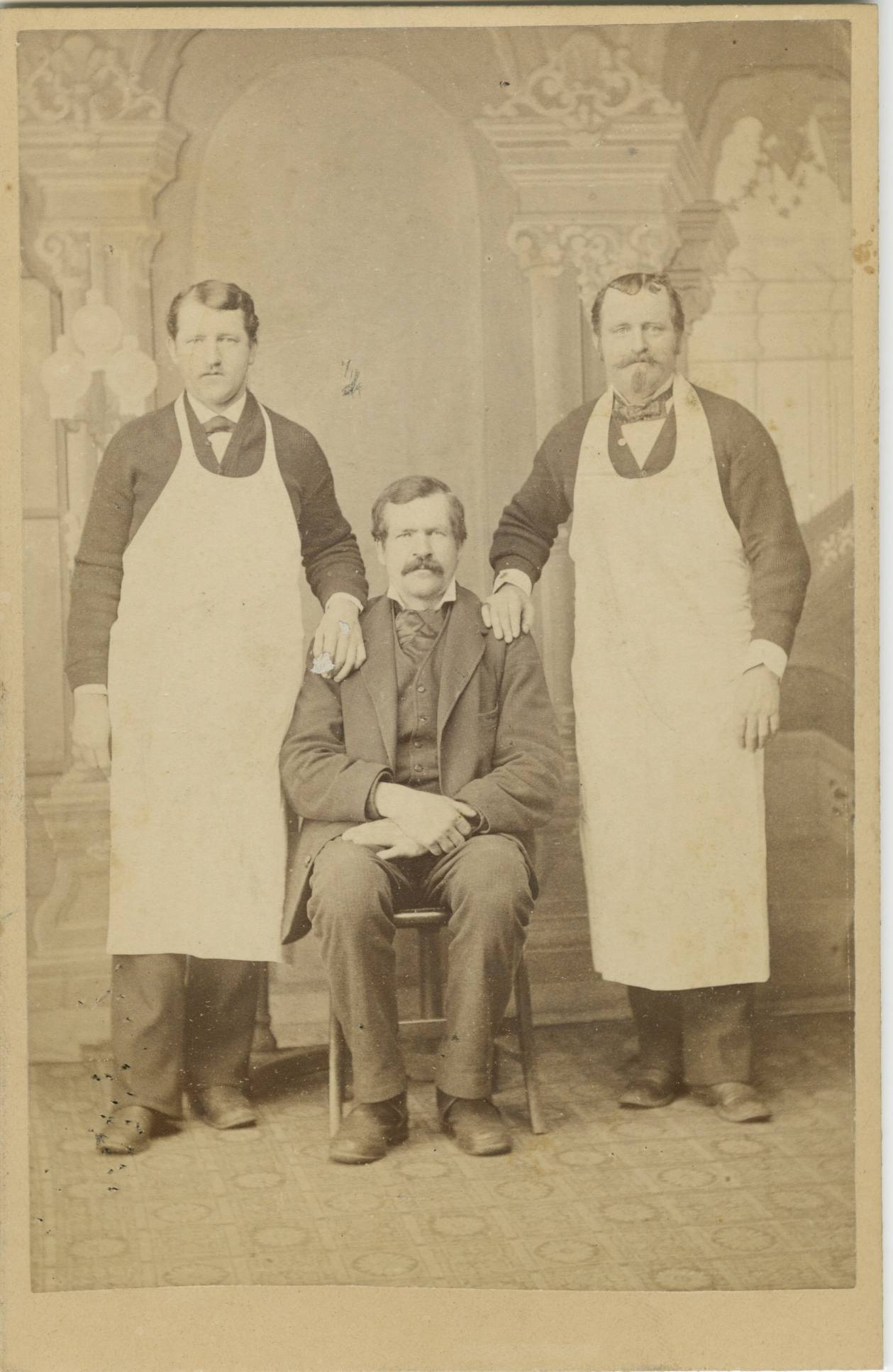
Battum, Untitled (Portrait of Three Men), circa 1900, 2021.33.1549
Real Photo Postcards
A real photo postcard is a photographic image printed on postcard stock. In 1902, Kodak introduced the No. 3A Folding Pocket Kodak which was designed for postcard-sized film. This camera allowed the general public to take photographs and have them printed on postcard backs and be sent around the world to share with family and friends. This format of sharing photography stayed strong through the 1930s even with the invention of 35mm film, when images on postcards were simply enlarged and white borders for handwritten message were added to the fronts of postcards.
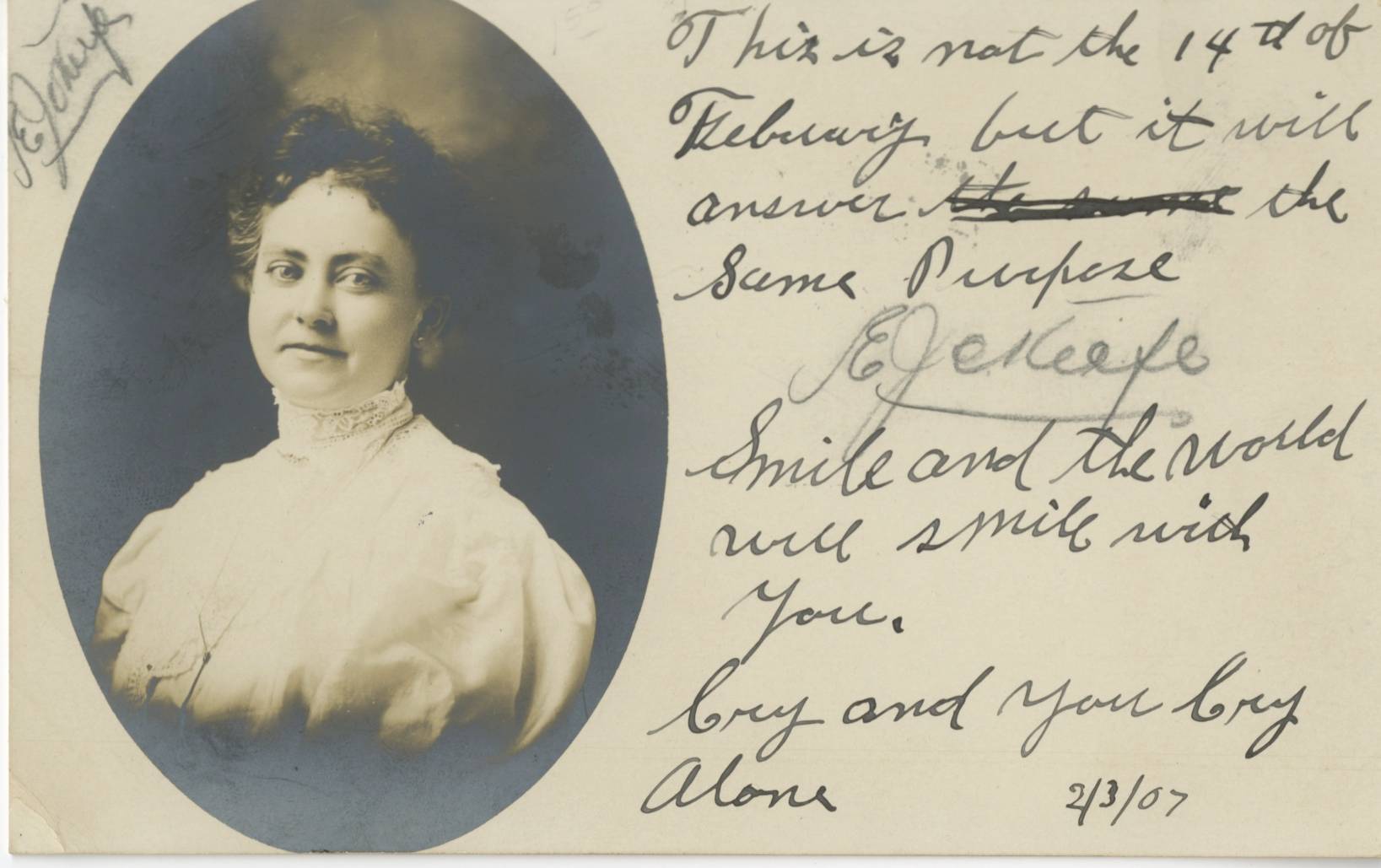
Artist Unknown, Untitled (Portrait of a Woman) front, 1907, 2021.33.57
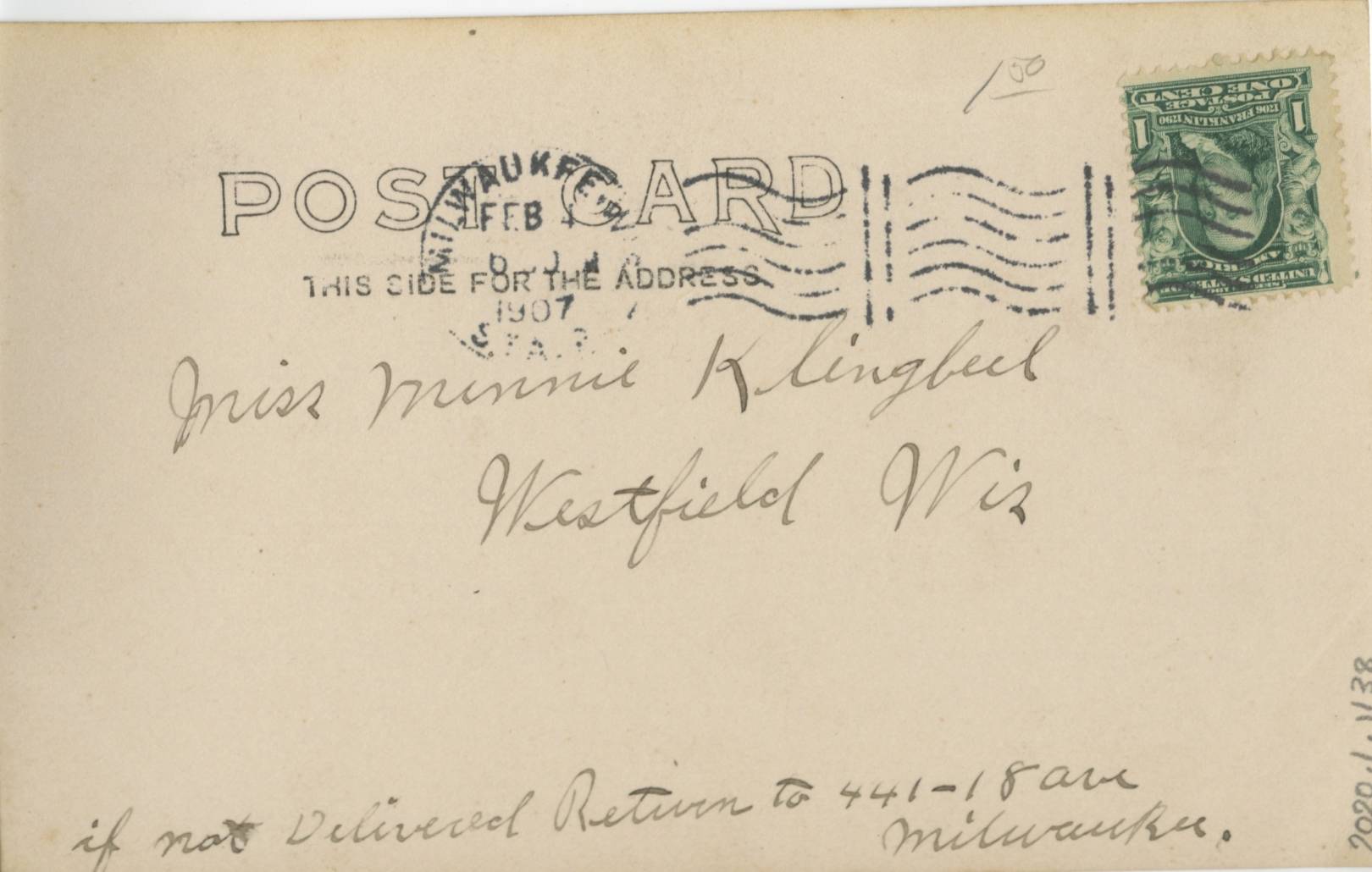
Artist Unknown, Untitled (Portrait of a Woman) back, 1907, 2021.33.57
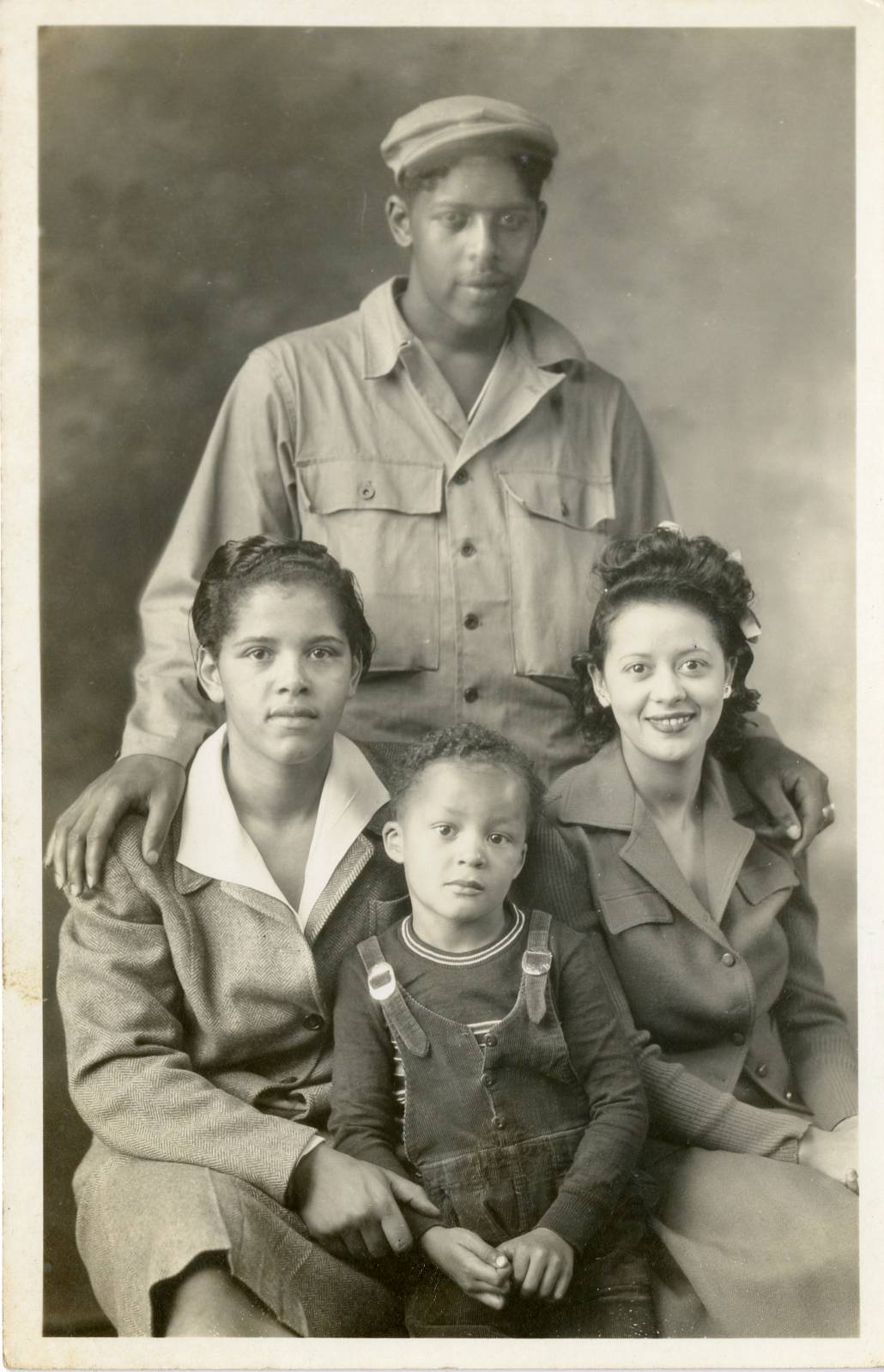
Artist Unknown, Untitled (Family Portrait) front, circa 1905-1925. 2020.1.332
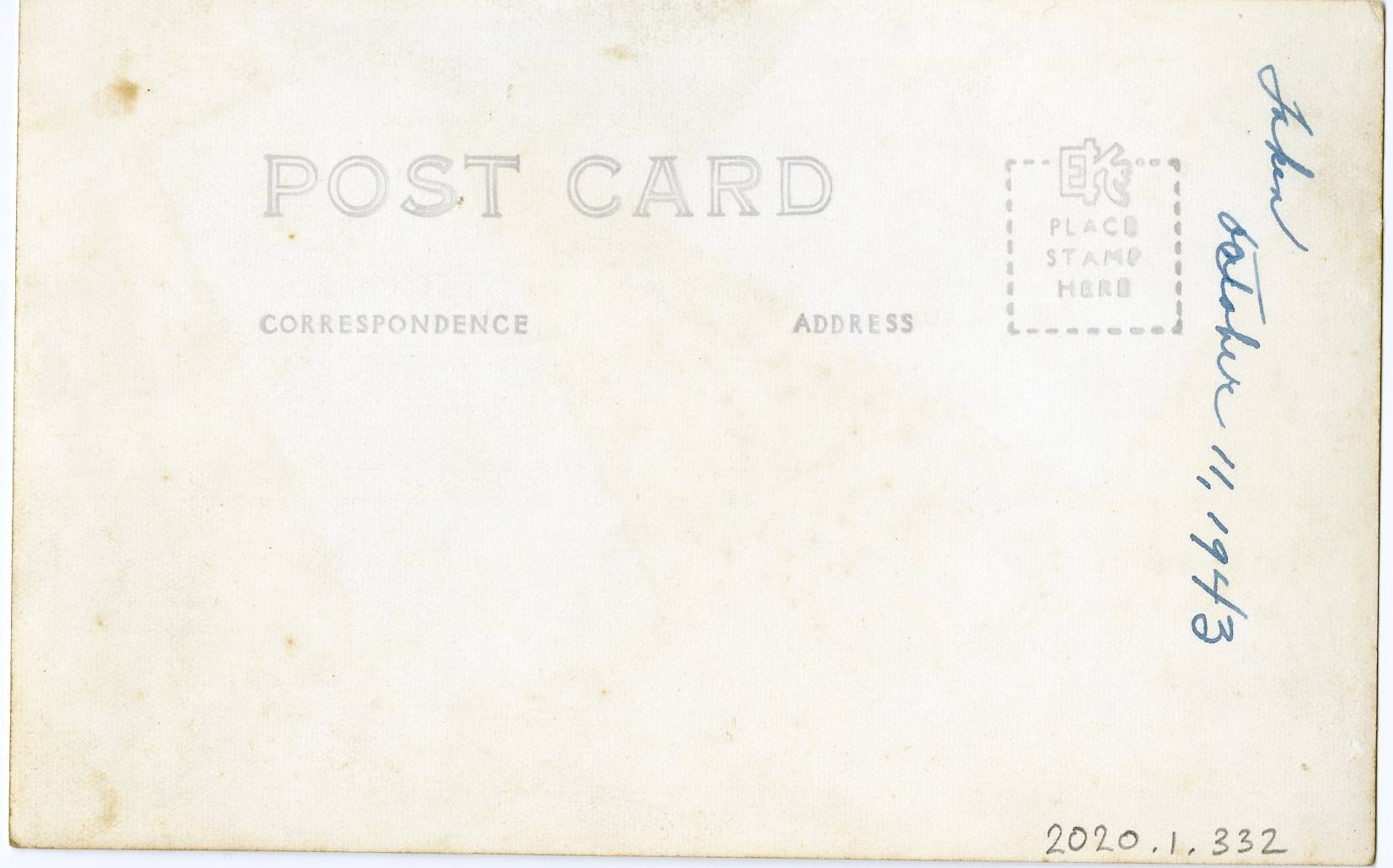
Artist Unknown, Untitled (Family Portrait) back, circa 1905-1925. 2020.1.332
Film and Dry Plate Photography
The photographic process continued to evolve and change as technology developed and the demand for simple and quick photography continued to rise. Dry plate, or gelatin process photography, was developed in the late 1800s by Dr. Richard L. Maddox. While the gelatin emulsions were incredibly sensitive to the touch and did not produce images much clearer than collodion emulsions, the majority of the complex chemistry work to create the glass plates could be done in a factory, not by individual photographers. This made the actual production of photographs much faster and more available to the general public who now did not need to understand the chemical process needed to create an image.
In 1879, George Eastman created a machine that coated glass plates and opened the Eastman Film and Dry Plate Company, which even further reduced the cost of photography. Less than a decade later, Eastman created the first roll of flexible film, a predecessor to nitrate film, and the first roll of film on transparent plastic. Eastman eventually joined forces with Henry A. Strong, and the two men created the Eastman Kodak Company which continued to dominate the photographic film business for over 100 years.
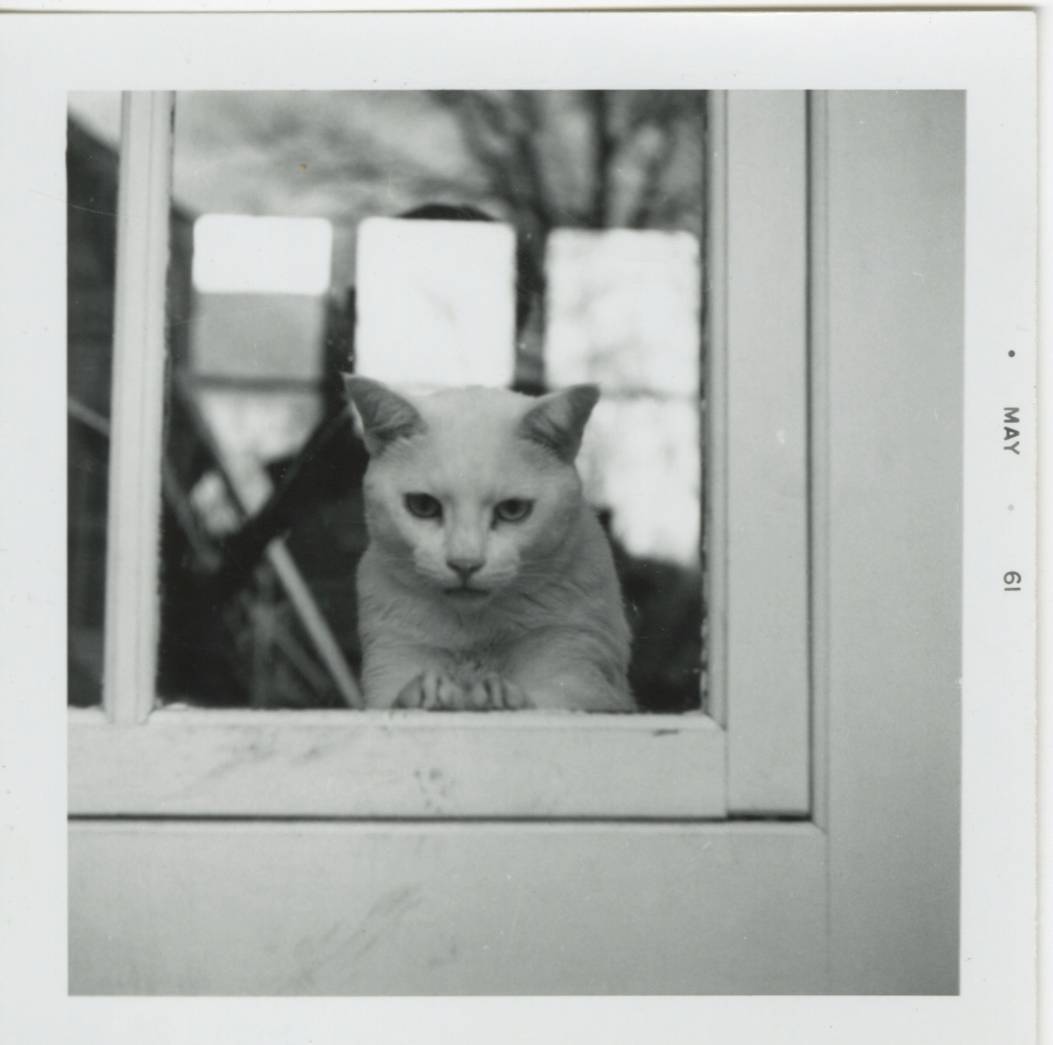
Artist Unknown, Untitled (Cat), May 1961. 2021.33.1342
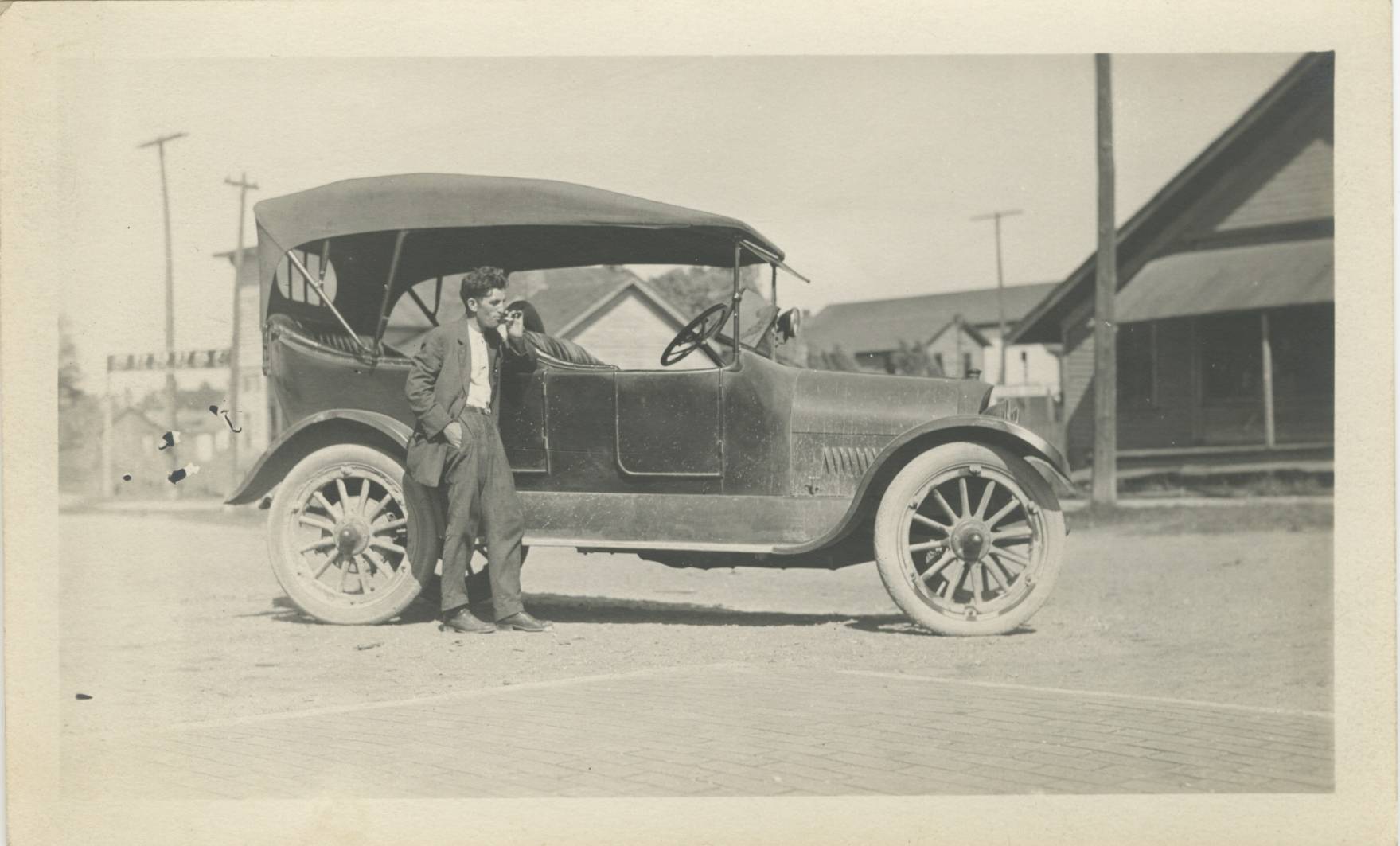
Linn Photo Finishing Co., Untitled (Man with Car), Date Unknown. 2021.33.1374
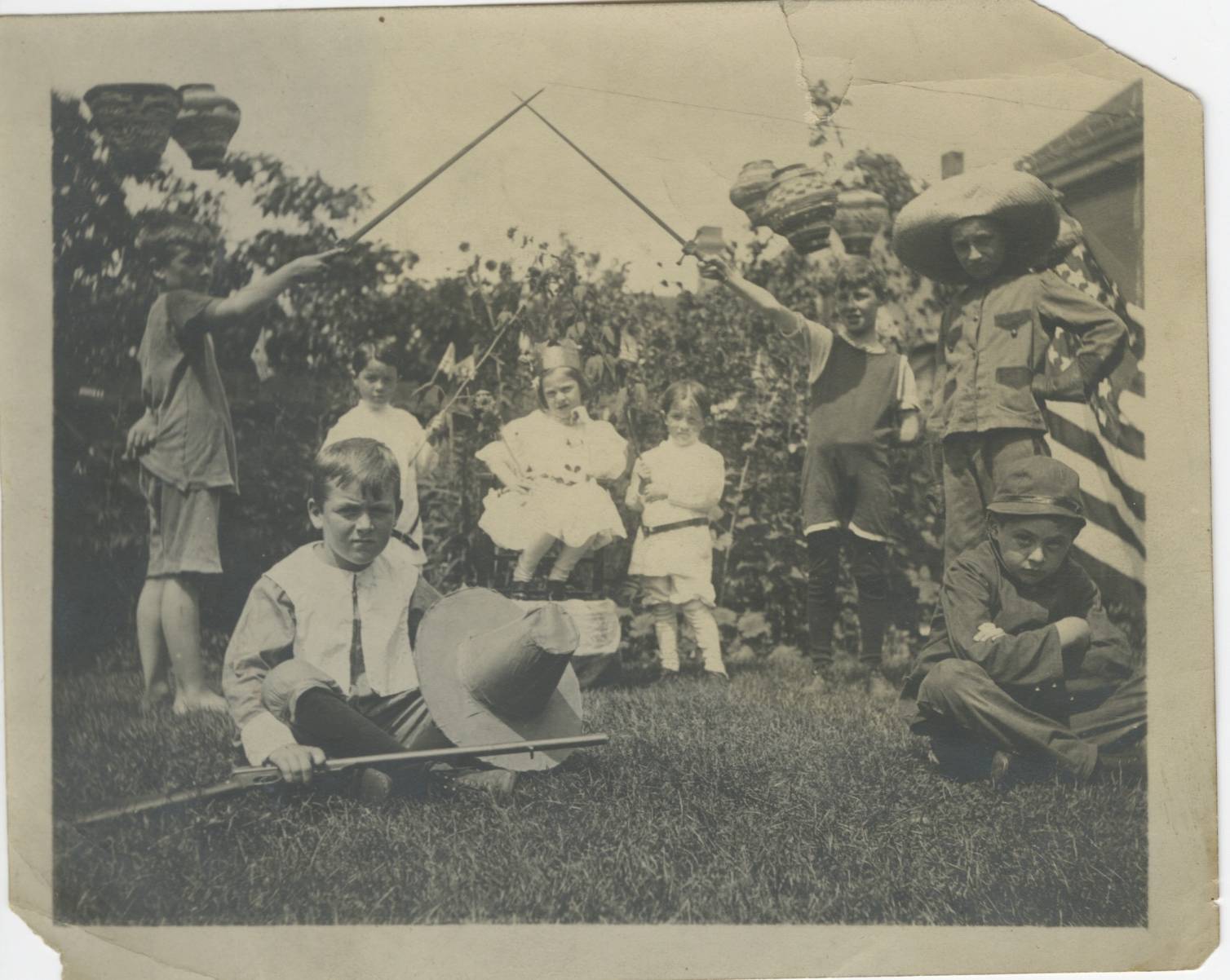
Artist Unknown, Untitled (Children Playing), Date Unknown. 2021.33.1396
Contemporary Photography
The end of the 19th century saw photographers producing more than just likenesses with the camera and many, like photographer Alfred Stieglitz, wanted photography to become an accepted art form. At first, many critics believed photography could not be considered an art form because it was made by a machine rather than human hands and individual creativity. While photography had already been used as a form of reproduction for years, many saw this it as a threat to “real art.”
As artists and critics debated photography as an art form, photographers were pushing the media into new frontiers. Stieglitz was a member of a New York-based group of artist photographers called The Photo-Secession, along with Edward Steichen, Alvin Langdon Coburn, Gertrude Käsebier, and Clarence H. White. Also described as Pictorialists, these photographs used dark room manipulation techniques to alter images and give them a painting-like quality. Over time, Stieglitz and other members of the Pictorialists began to favor the intrinsic qualities of the photograph, like sharp focus and unmanipulated printing, over the painterly Pictorialist style. These images were referred to as ‘straight’ photographs. Slowly, straight photographs began to hang in art galleries and museums alongside paintings and sculptures and became the dominant form of art photography.
For most of the early 20th century, art photography primarily included black and white images, even as color technologies continued to develop. By the 1960s, color photography was heavily used both domestically as well as commercially for advertising and publications, but hadn’t yet been taken up by artists until photographers like William Eggleston began creating images using color transparency film. Eggleston elevated what could be viewed as mundane vernacular and family photos into composed works of art. Eggleston helped to create another major shift in the trajectory of art photography, one that moved away from objectivity and technique towards ambiguity and compelling visual narratives. Today color photography is the primary medium of most fine art photographers.
Landscapes: Real and Imagined
Much like en plein air painting, landscape photography finds the artist in the outdoors, surrounded by their subject. For most landscape photographers, their goal is to frame that one special moment within the wider world around them. The perfect landscape photograph gives the viewer just a glimpse of the greater world behind the lens. Some landscape photographers highlight the purity of nature, capturing that a moment that will never exist twice. While others stive to portray the evolution of the natural world, documenting the ever changing natural and urban landscape as well as the human impact on nature.
Howard Bond (b. 1931)
A former student of Ansel Adams, Chicago-based photographer Howard Bond has been regarded as a master of large-frame film photography. His signature black and white photographs range from close-up, abstract visions of rusted metal and peeling paint to misty and mysterious landscapes. His photographs often remove the context of the original scene, but they always bear witness to the beauty that can be found even in the most unlikely of places.
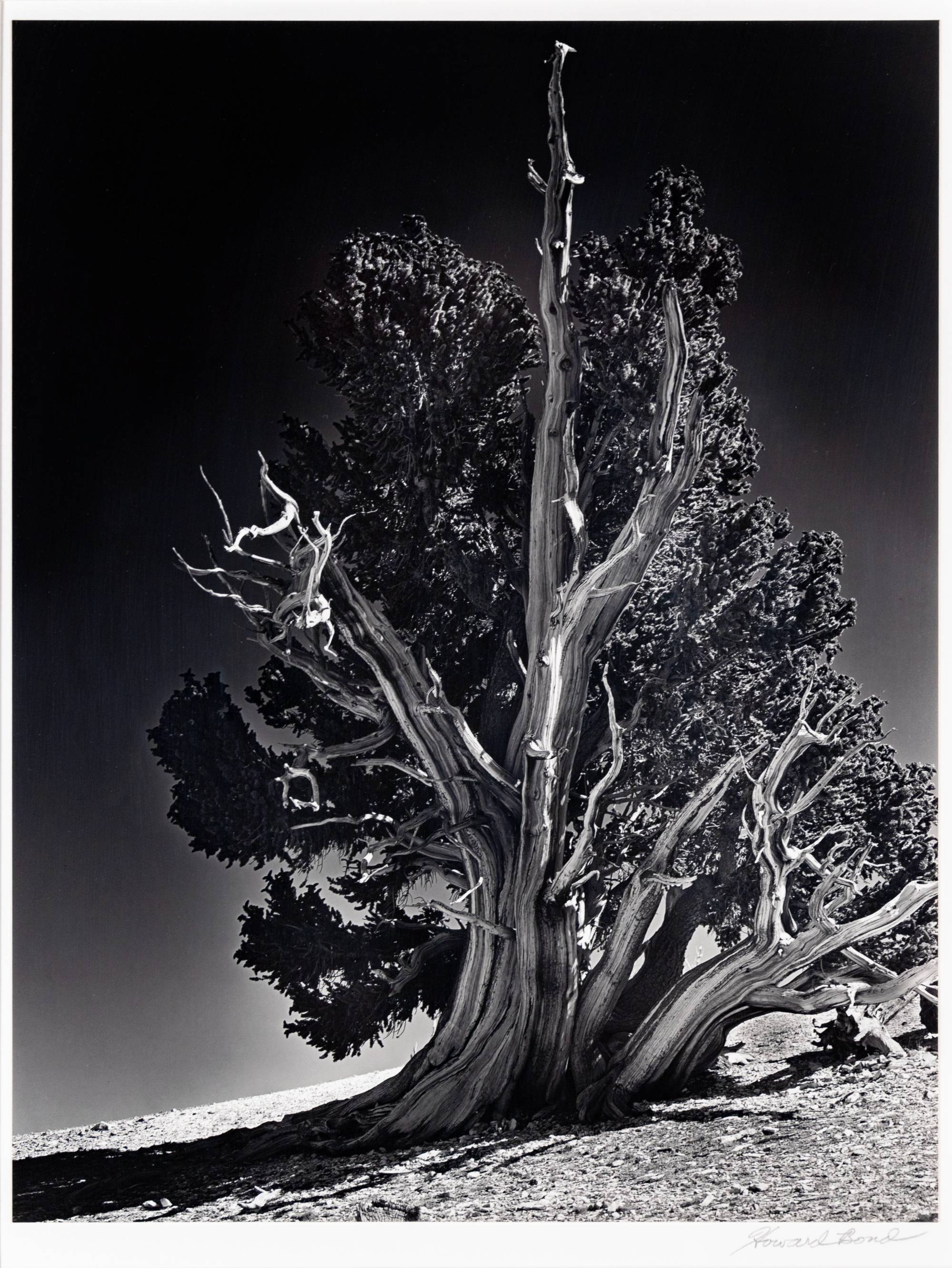
Howard Bond, Bristle Cone Pine #17, circa 2000. 2003.021.1
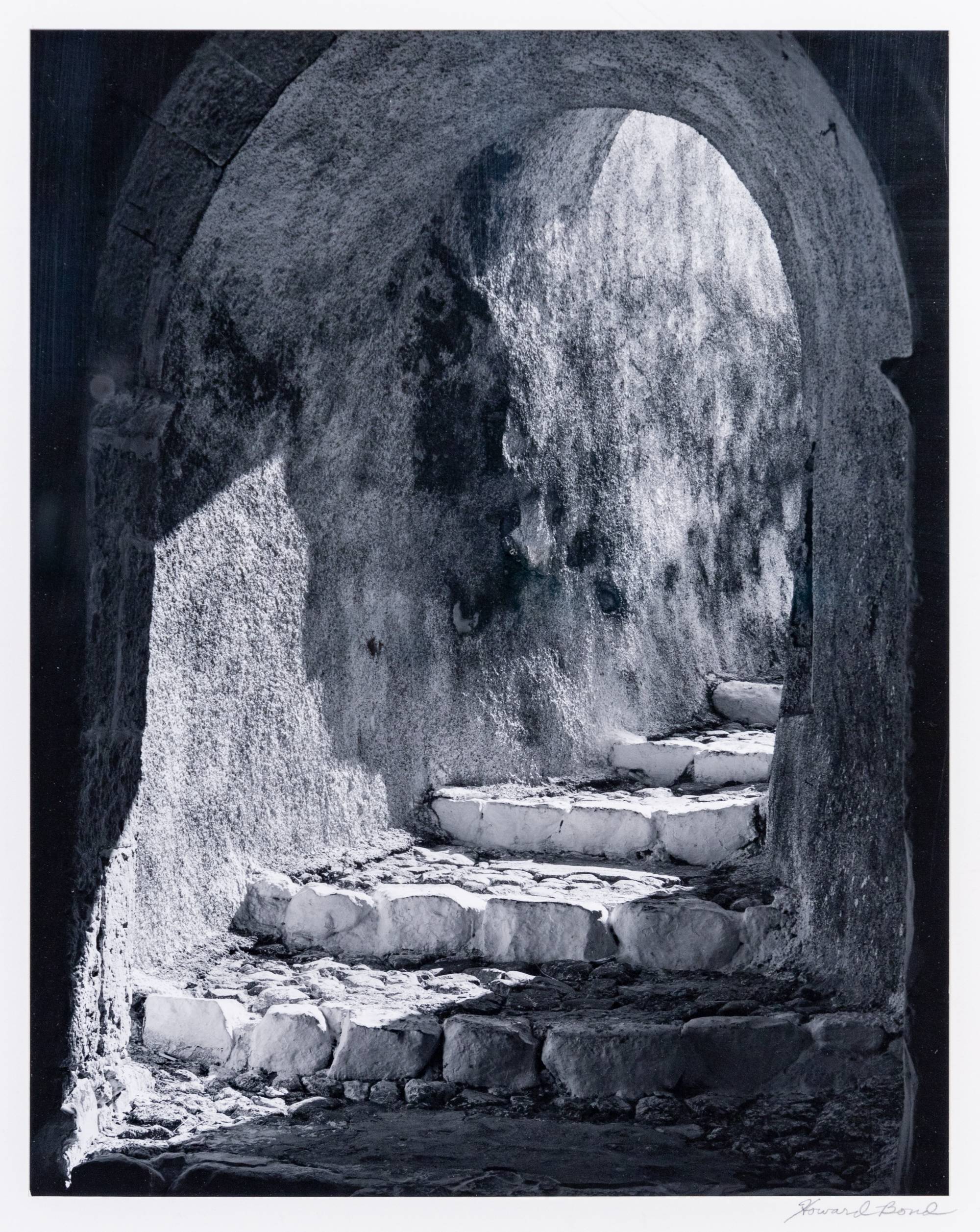
Howard Bond, Passageway, circa 2000. 2003.028.1
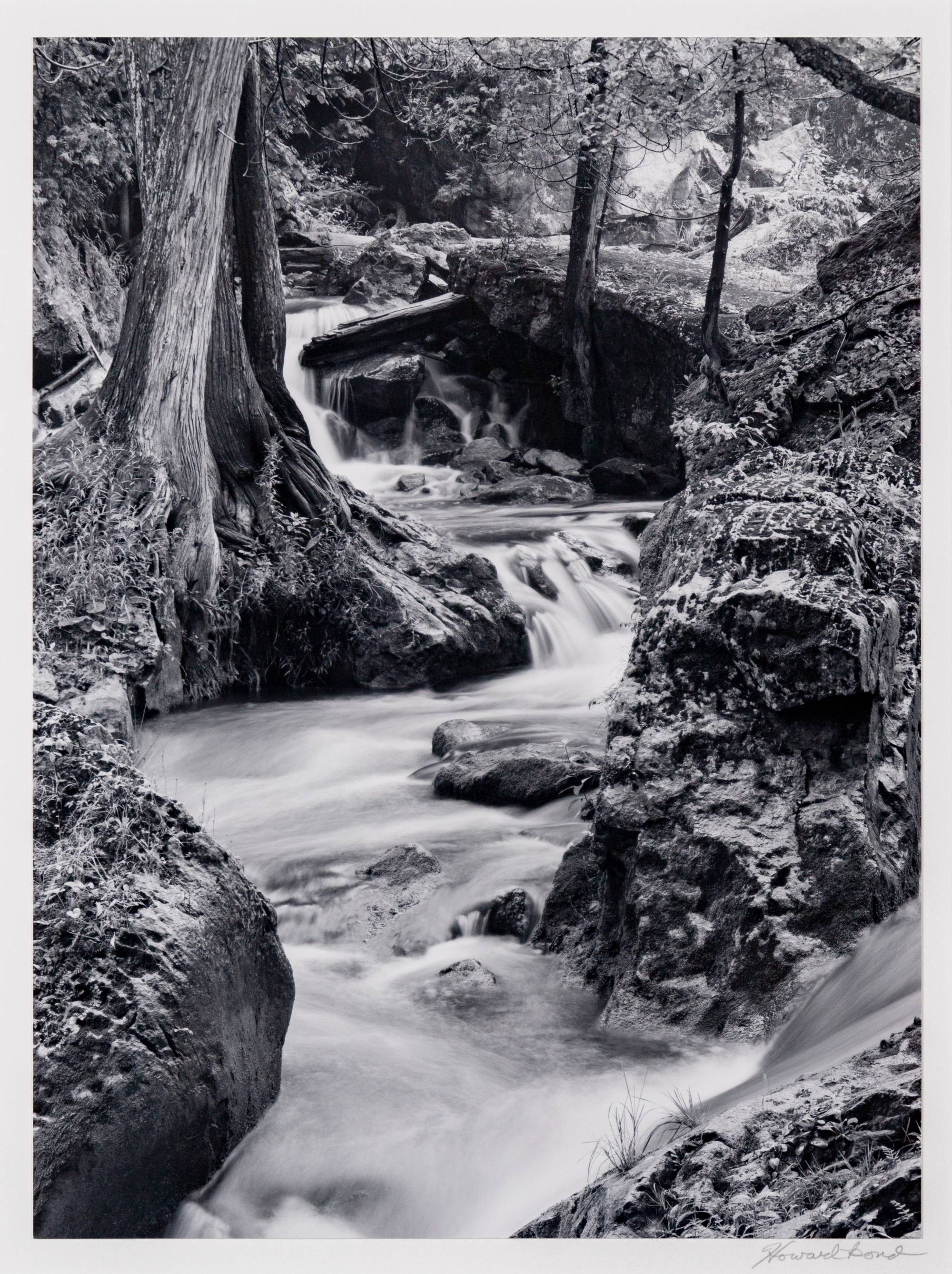
Howard Bond, Sydenham River, circa 2000. 2003.030.1
Ruiyuan Chen
Ruiyuan Chen's photographs reflect the artist's many travels throughout China and Mongolia. His works play with color, light, and shadows created by fog, dust, and smoke. He is the executive director of the Youth Photographic Society of Fujian and the Vice-President of the Putian City Youth Photographic Society.
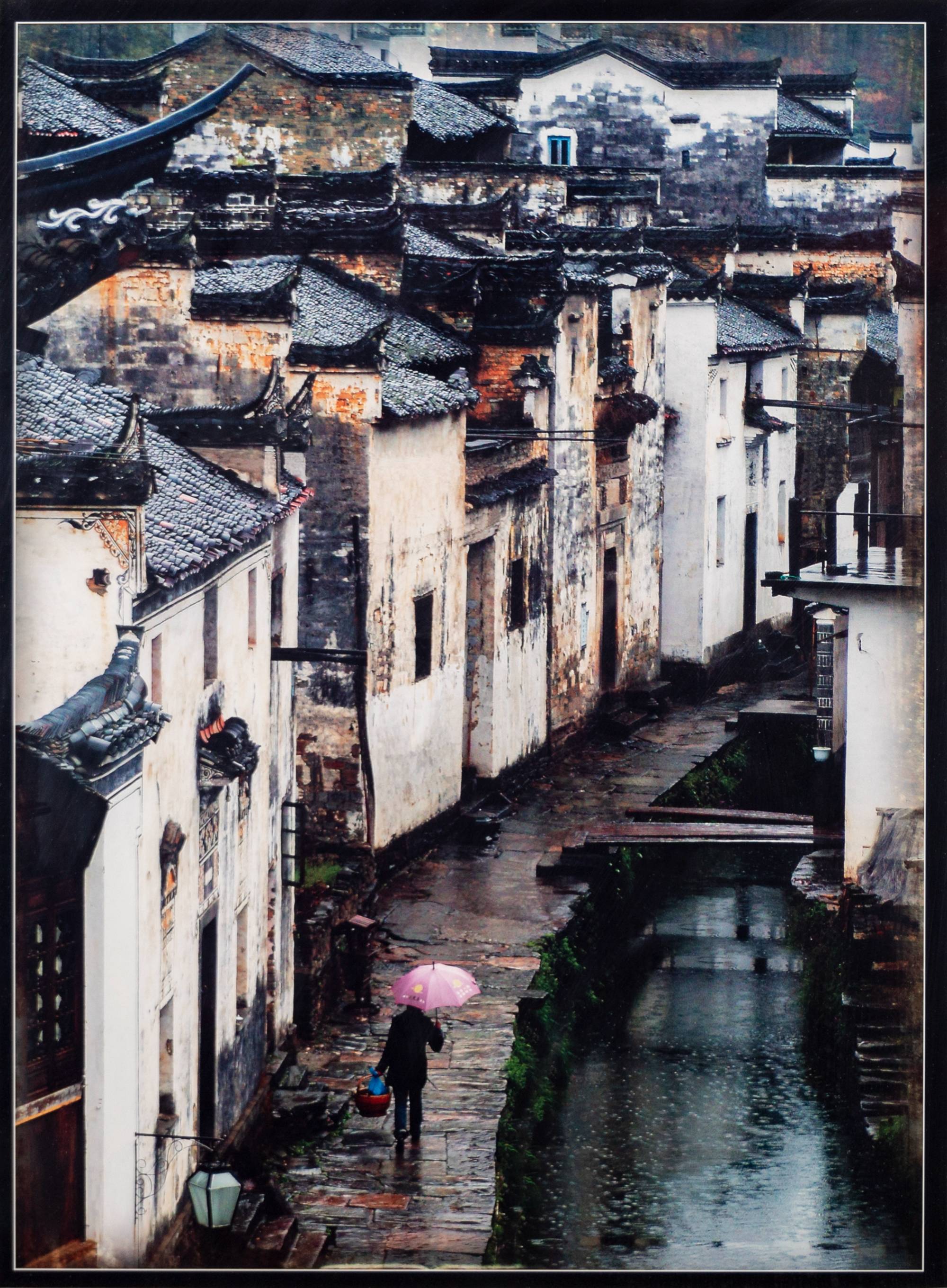
Ruiyuan Chen, Untitled (Urban Scene), circa 2008. 2009.123.14
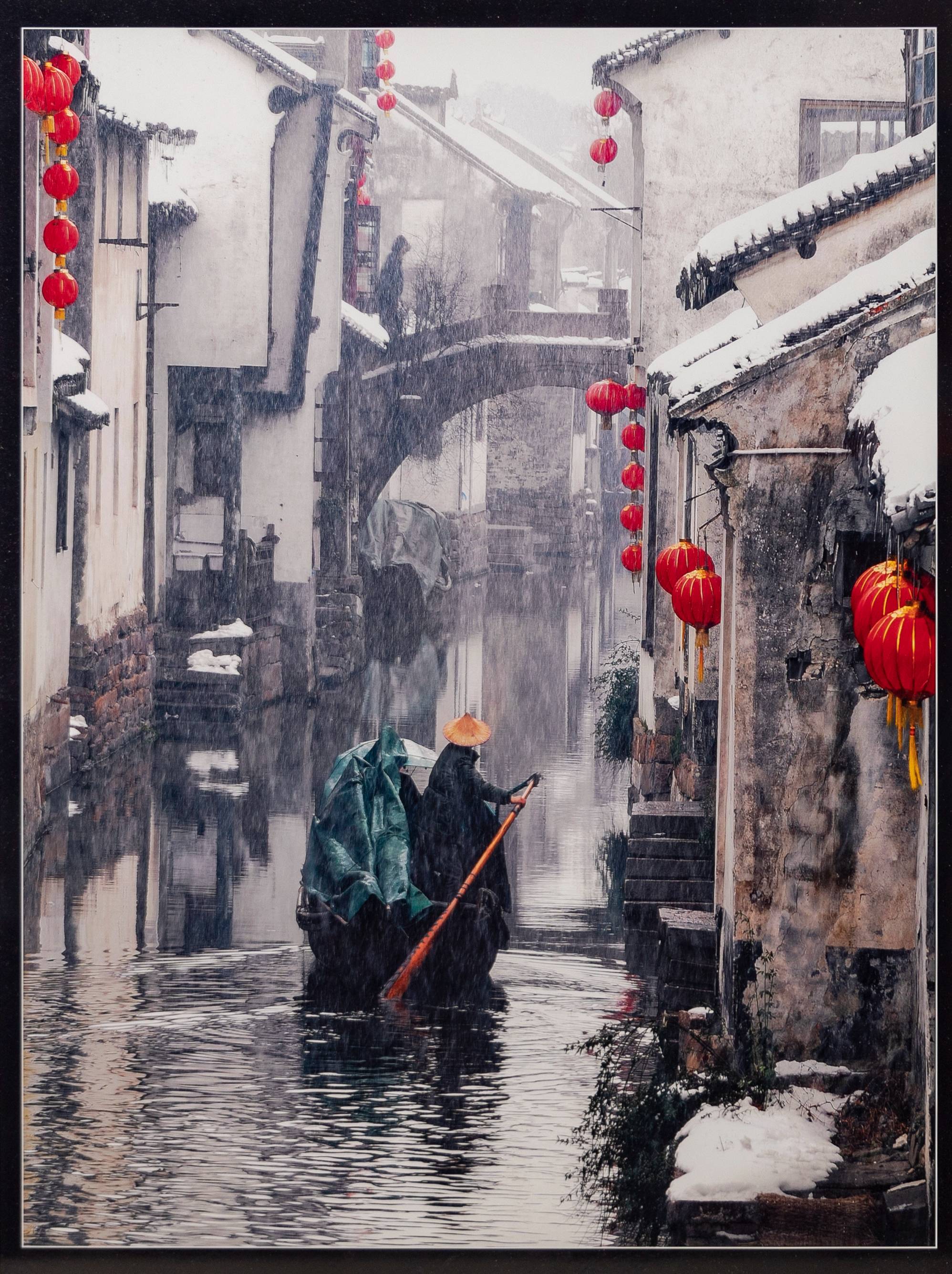
Ruiyuan Chen, Untitled (Canal), circa 2008. 2009.123.15
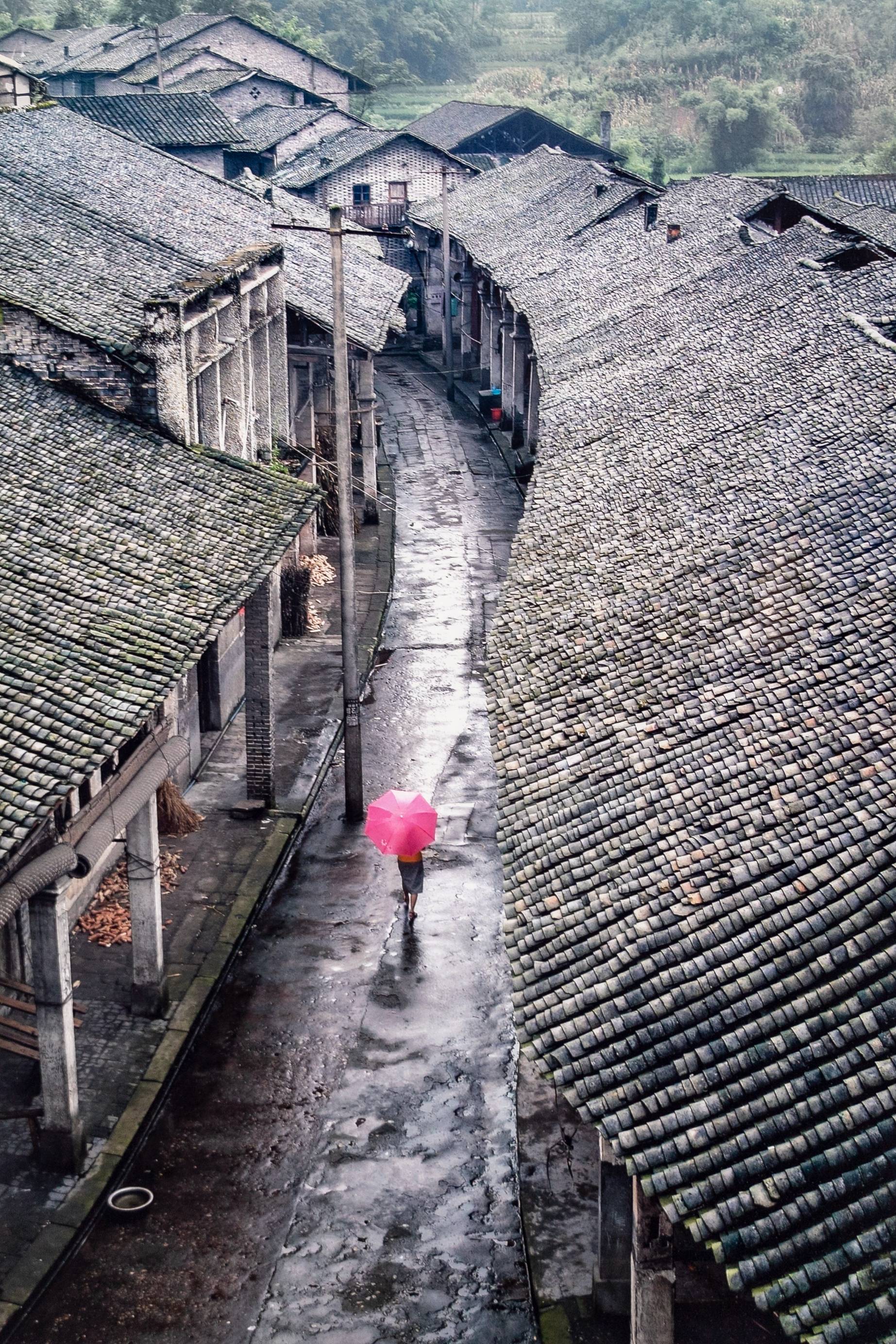
Ruiyuan Chen, Untitled (Village), circa 2009. 2009.123.23
Sally Gall
Photographer Sally Gall lives and works in New York City. Throughout her career she has focused on the natural world, using her keen eye for composition to create abstractions of familiar subjects. Her greatest interest has always been landscapes, and each different series of photographs she has produced highlights a different aspect, showing something we may not have ever seen otherwise. If human figures are present in her work, they are not usually to be seen as portraits, but rather humans as an extension of nature itself. Until recently, Gall has always worked in black and white photography, but now is experimenting with color.
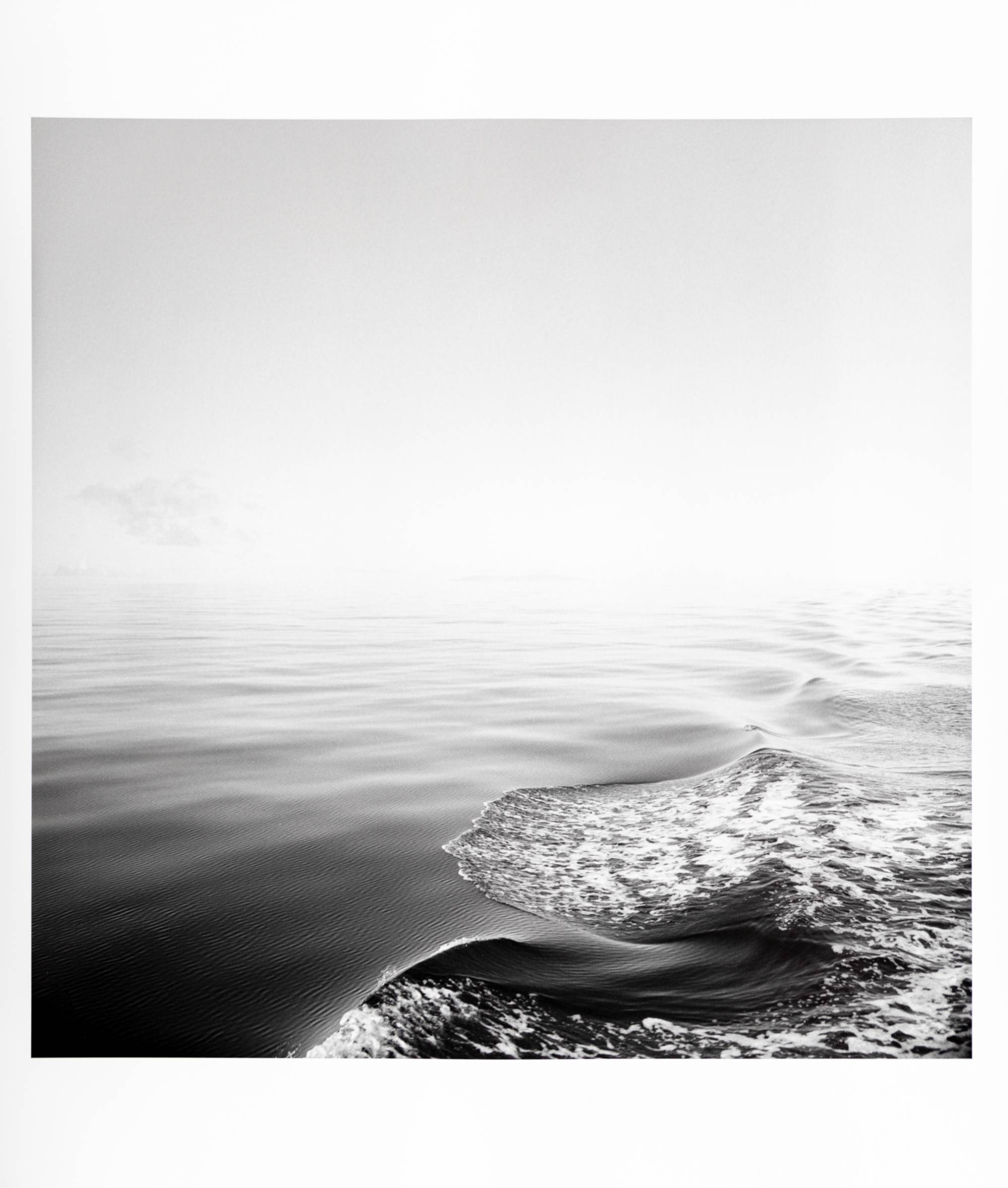
Sally Gall, Fiji, 2000, Archival Pigment, Print. 2020.47.26
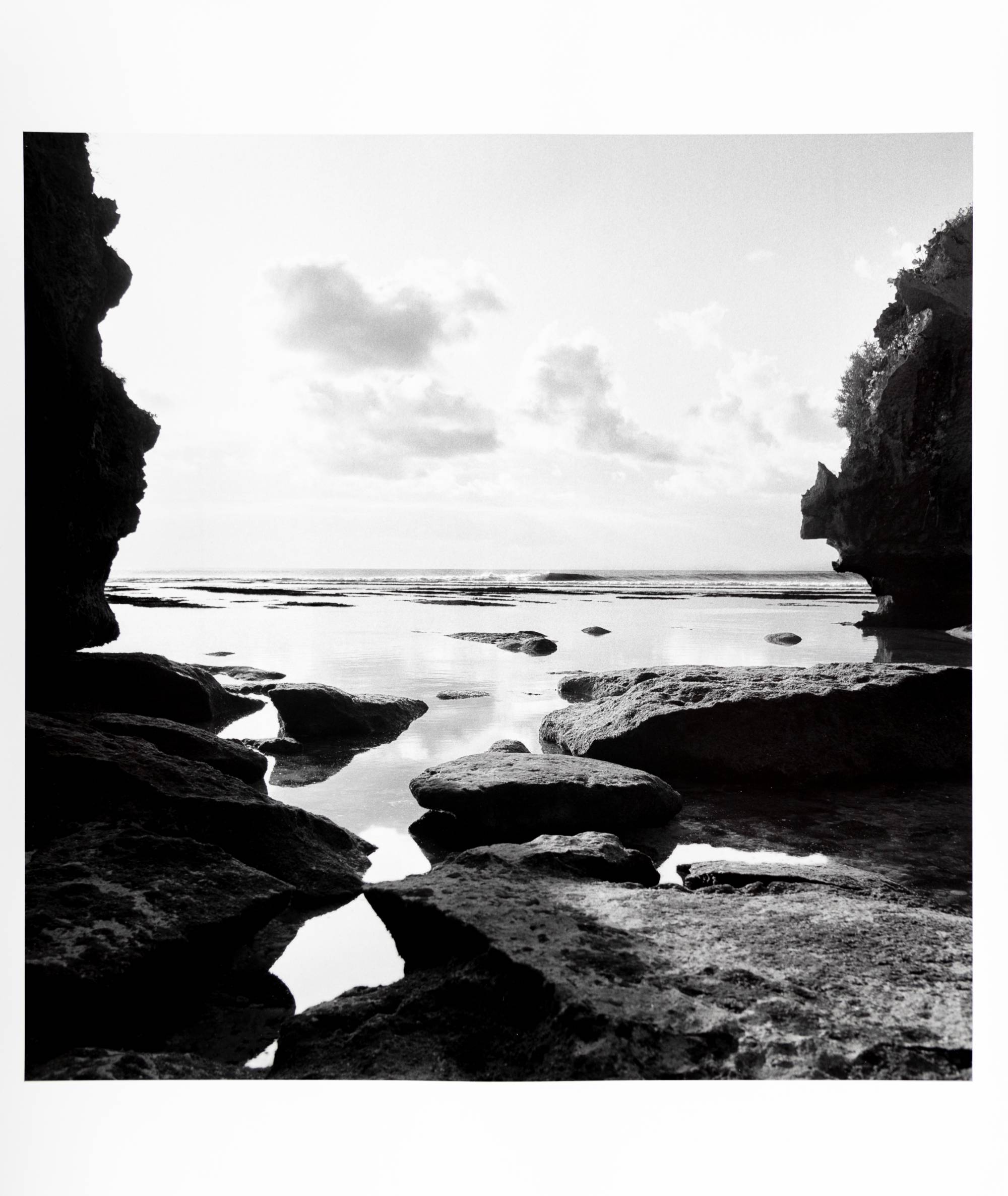
Sally Gall, Bali, 1992, Archival Pigment Print. 2020.47.27
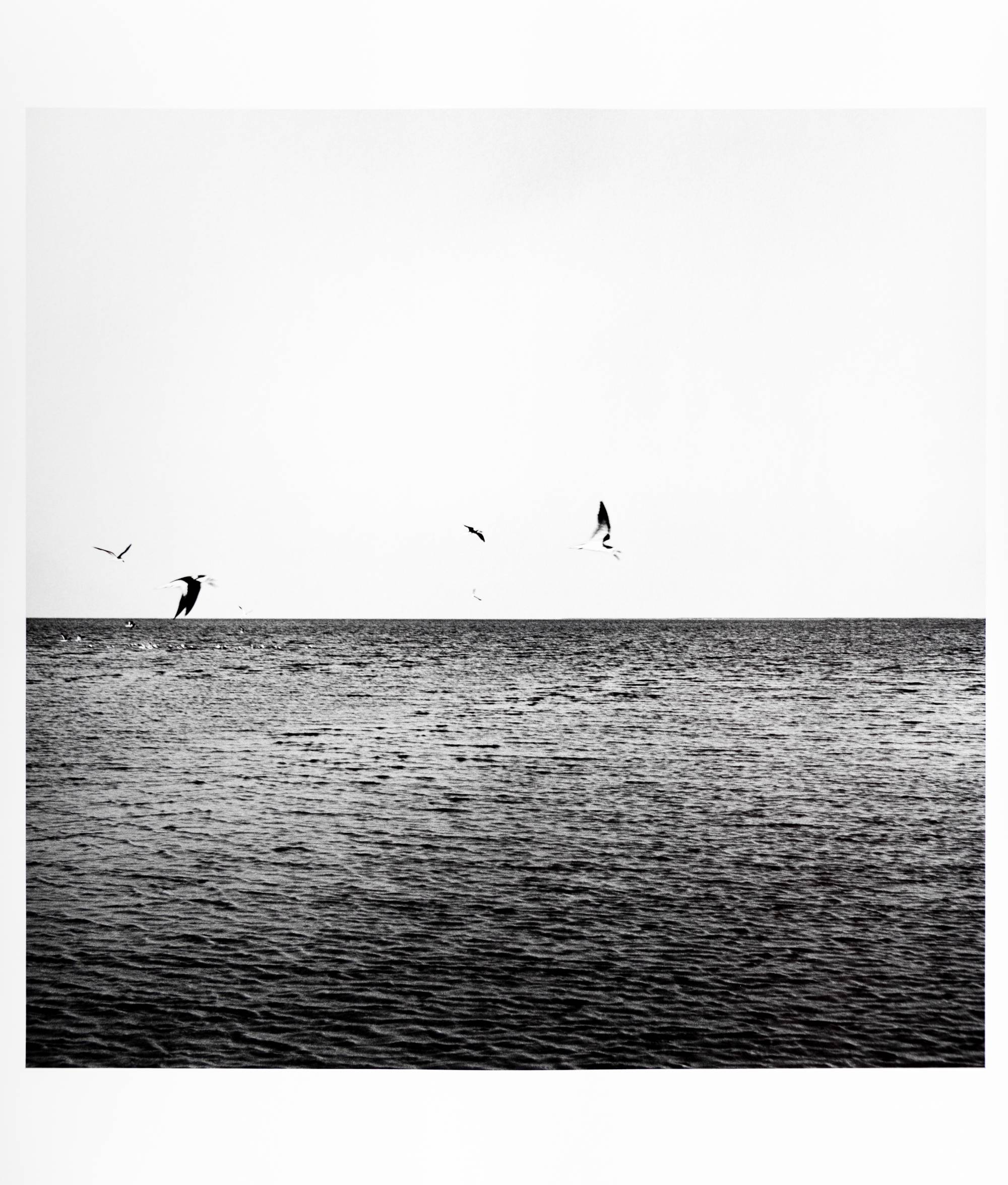
Sally Gall, Galveston, 1980, Archival Pigment Print. 2020.47.28
David Lubbers
Through his black and white photography, Grand Rapids based photographer David Lubbers strives to capture a moment in time that may never be captured the same way ever again. Whether photographing the lakeshore of his hometown of Holland, Michigan, the rocky cliffs of national parks in Santa Fe, New Mexico, or the worn and story filled ancient ruins of Mexico, Lubbers has the same goal in mind: to photograph the then and now, as whatever place is in his photographic lens will never be quite the same ever again.
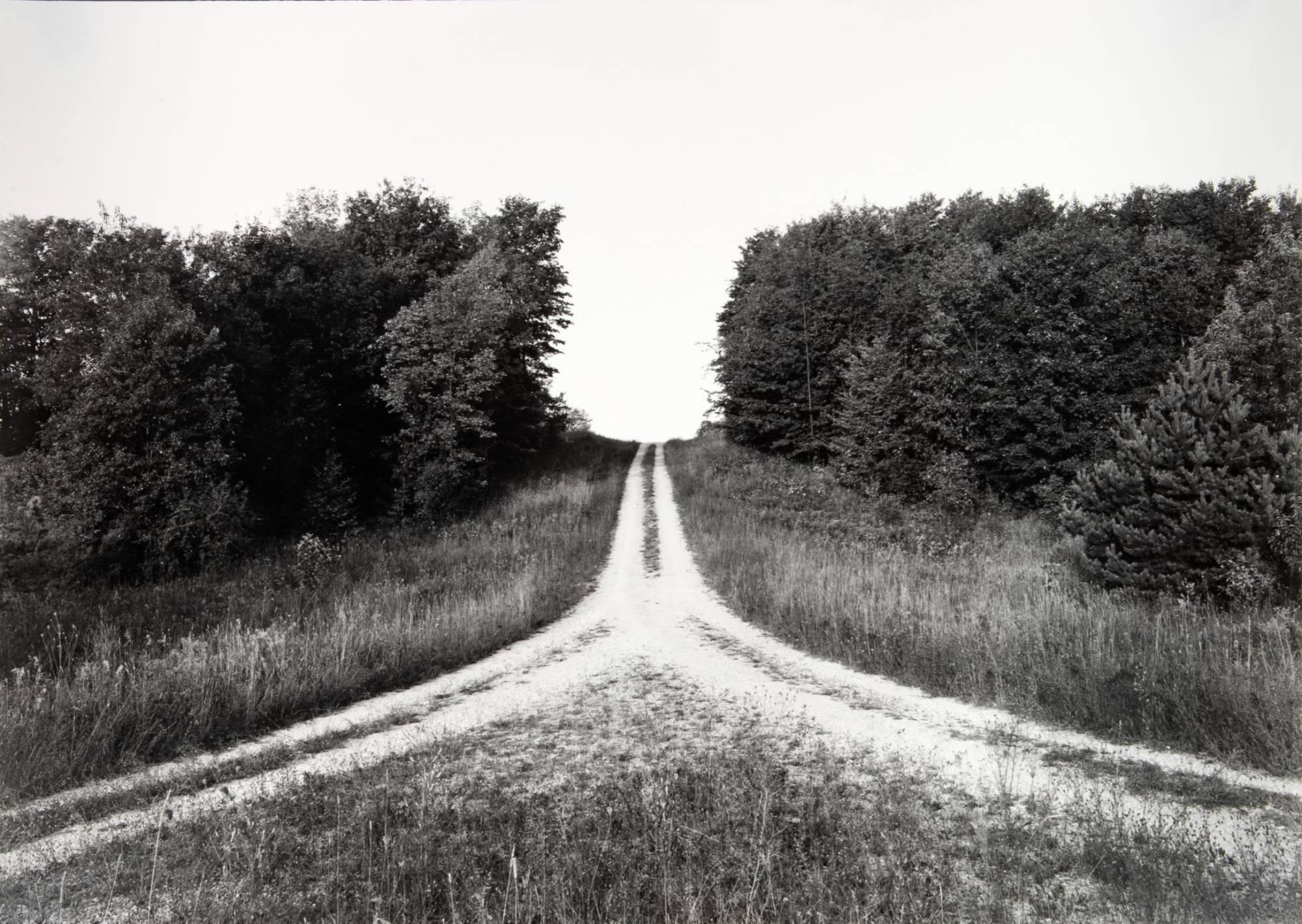
David Lubbers, Win Trails, Leland, Michigan, Date Unknown, Silver Gelatin Print. 2020.33.29
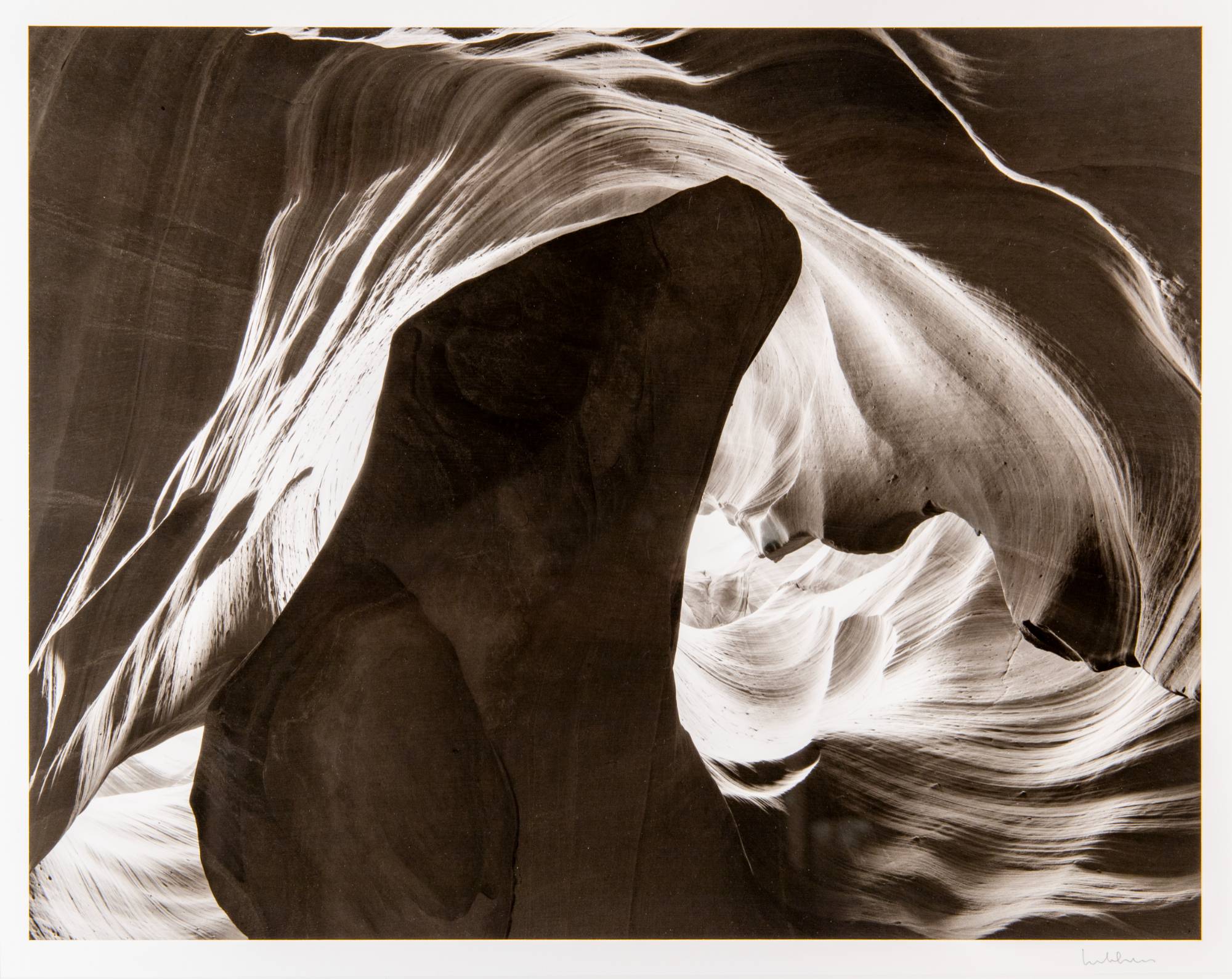
David Lubbers, Corkscrew, Page, Arizona, 1985, Silver Gelatin Print. 2002.624.1
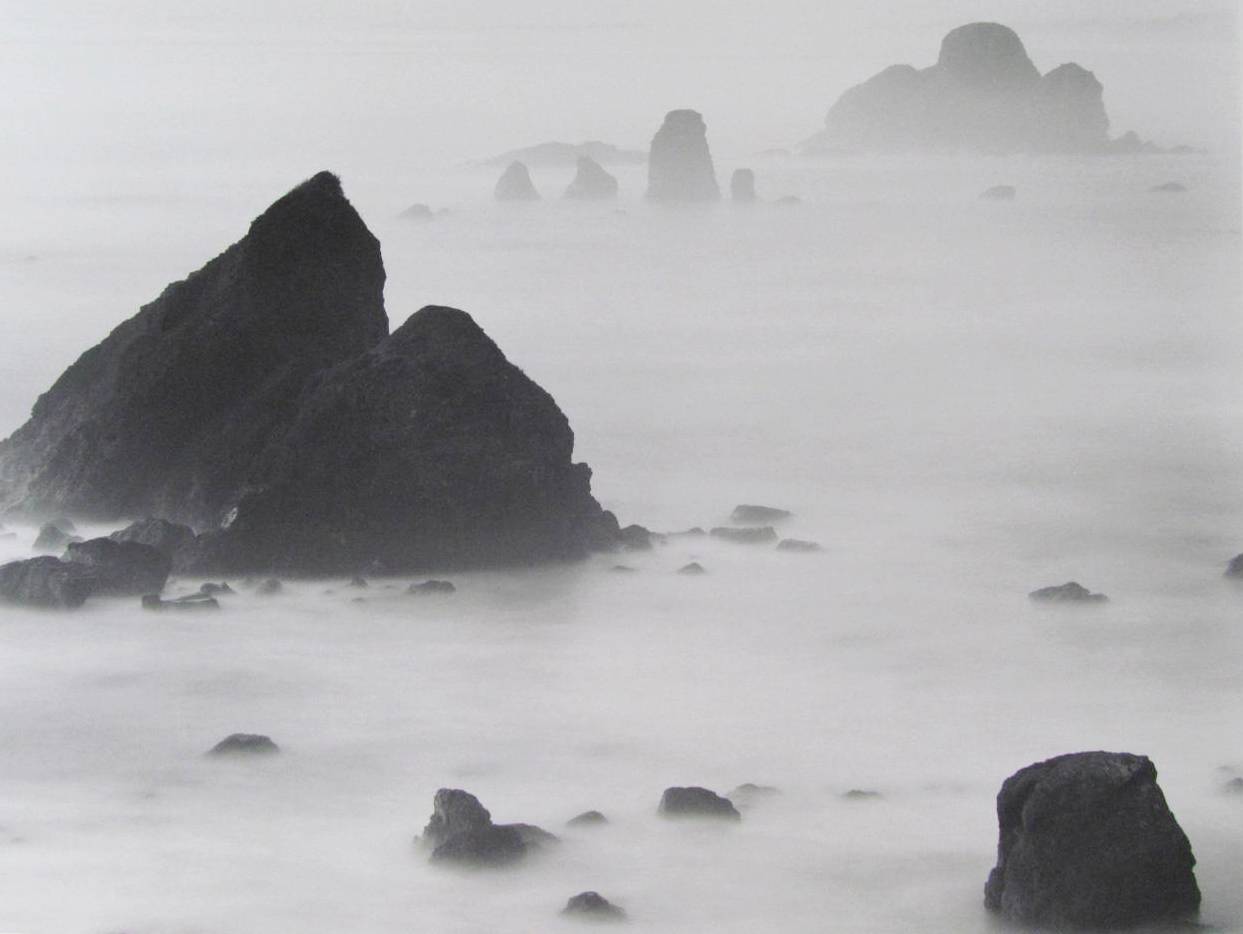
David Lubbers, Evening Mist, Trinidad, California, 1997, Silver Gelatin Print. 2020.33.44
Caleb Cain Marcus
Caleb Cain Marcus is a New York City based photographer who had dedicated himself to the search for the perfect balance between city, nature, man and the invisible. Marcus uses light and material to explore color and texture through his images. His technique involves brushstrokes and other marks layered over the photograph, creating a new relationship between image and applied.
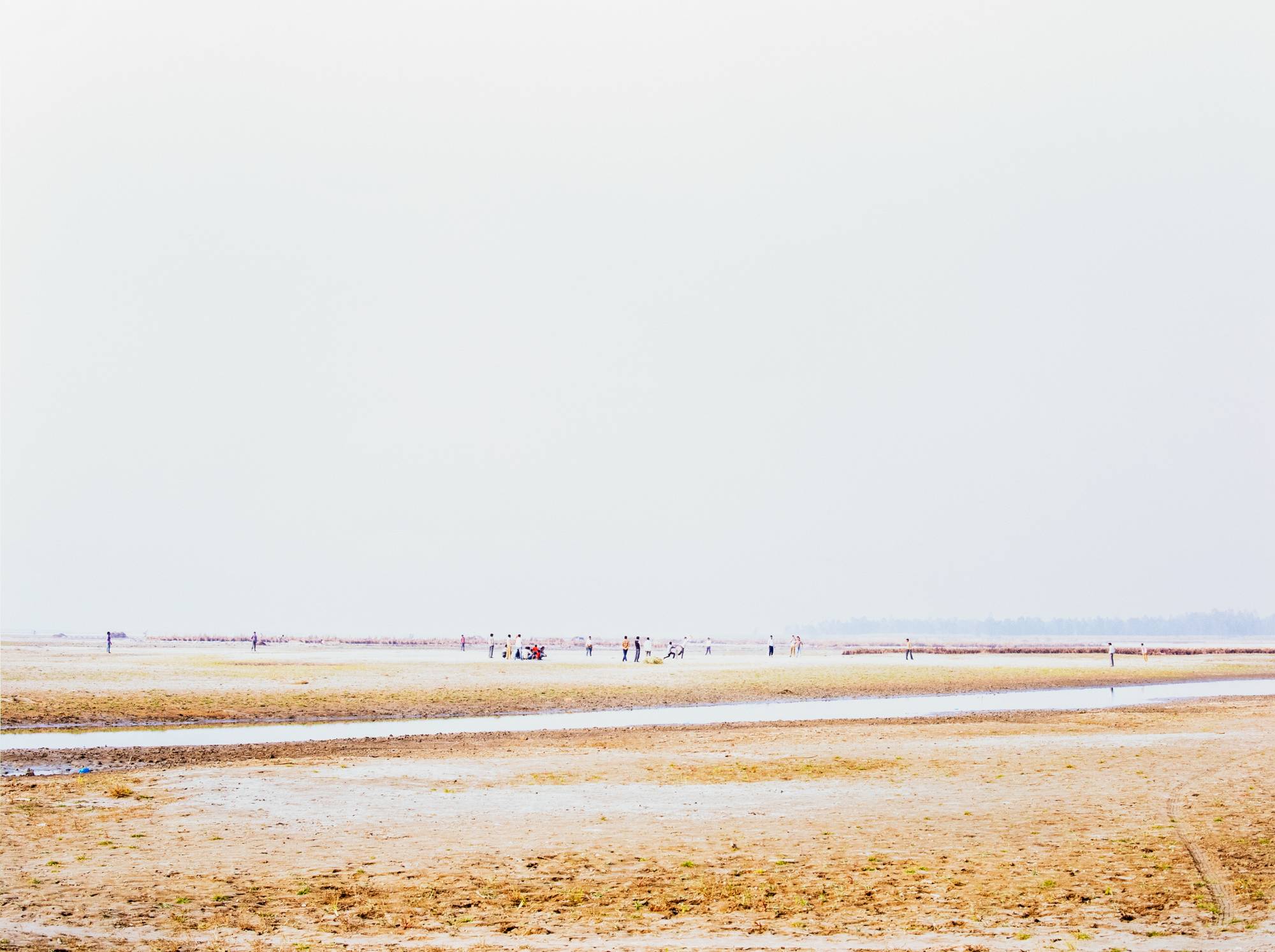
Caleb Cain Marcus, Humans, Earth, Water and Space, 2013, Archival Pigment Print. 2020.46.70
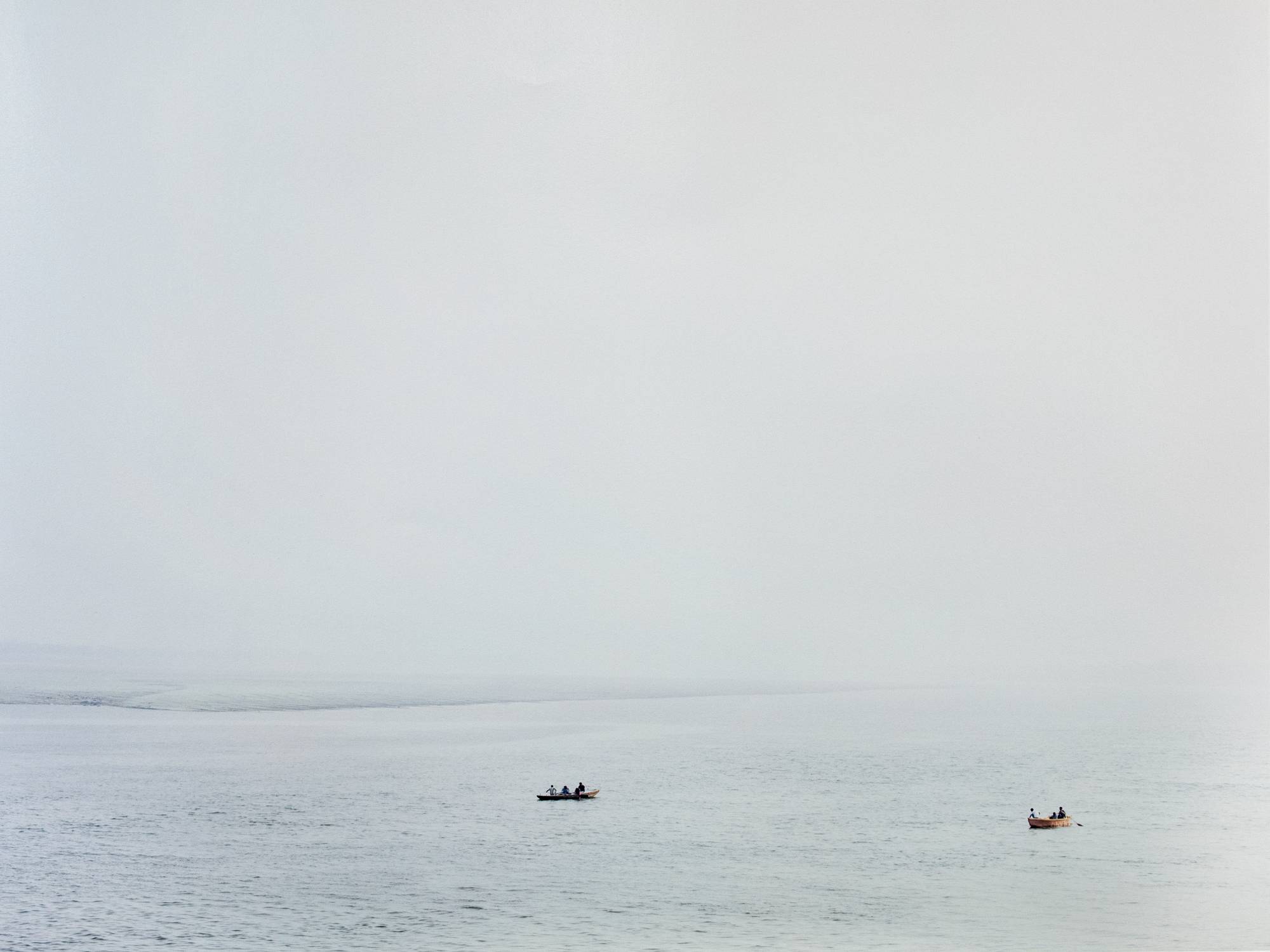
Caleb Cain Marcus, Humans, Water, Wood And Space, 2013, Archival Pigment Print. 2020.46.71
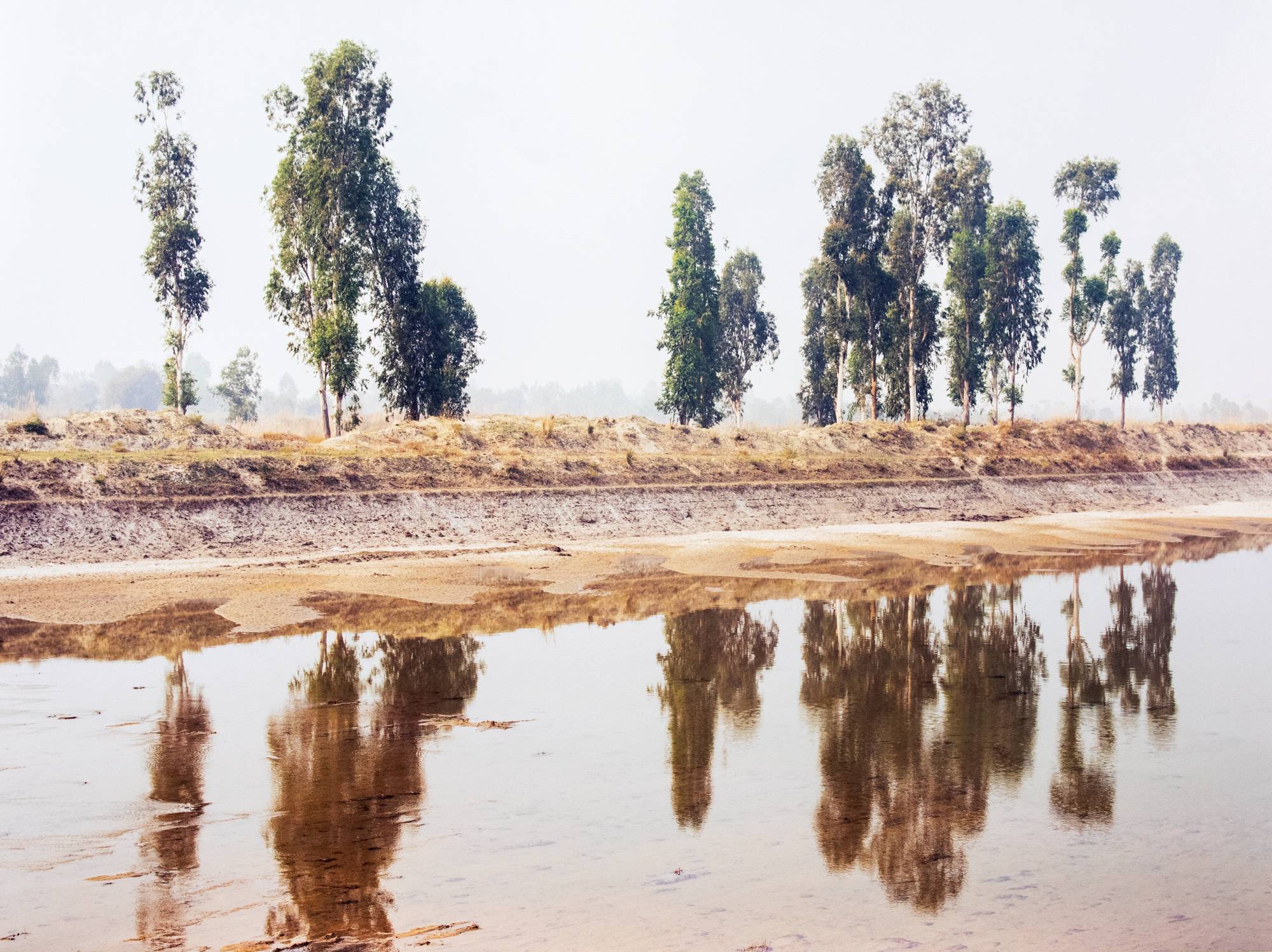
Caleb Cain Marcus, Water, Trees, Earth And Space, Archival Pigment Print, 2013. 2020.46.72
David Plowden (b. 1932)
Illinois based photographer David Plowden's images focus on the struggle between civilization and nature, old and new. In his photographs and writing, he explores the beauty, power, light and significance of once commonplace icons, capturing the visual texture of a bygone America on the verge of vanishing. Above all, Plowden's images capture an intimacy that brings subject and viewer into close proximity.
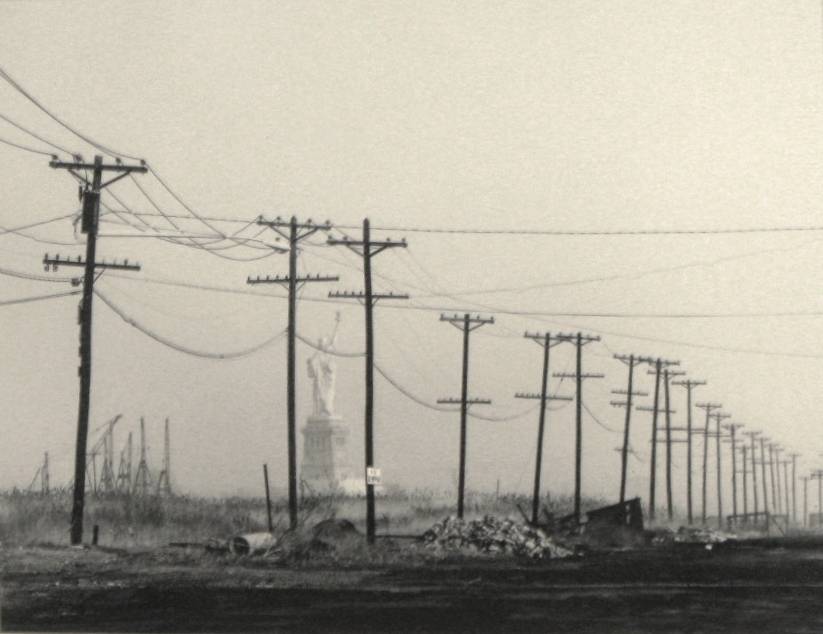
David Plowden, Caven Point Road, Jersey City, NJ, 1967. 1999.747.1a
[1647536193].jpg)
David Plowden, Golden Valley, North Dakota, 1971, Silver Gelatin Print. 2001.227.1
[1647536255].jpg)
David Plowden, Mid-Hudson Bridge, 1969, Silver Gelatin Print. 2001.228.1
Documentary
Documentary photography captures a moment of reality in order to convey a meaningful message about what is happening around the world. These photographs provide a straightforward representation of people, places, objects and events. Many different themes can be found within documentary photography including social living conditions, health issues, environmental issues, sports, war, wildlife, and conservation. While all of these themes can be found throughout contemporary photography, documentary photographs bear witness to the various ways of life and events around the world, depicting the stories as real-time events.
Brita V. Brookes (b. 1967)
Born in Detroit, Michigan, Brita Brookes has pursued careers in architectural design and graphic design, but always comes back to her passion for photography and photojournalism. Brookes has found herself emersed with her camera in a number of different cultures, from the music scene of Michigan to local tribal communities. Brookes' Native American imagery comes directly from first hand experiences participating in Pow Wows of the Three Fires Confederacy area of Michigan and Ontario. Although not of Native American heritage herself, she has actively been involved in Native American communities across the country.
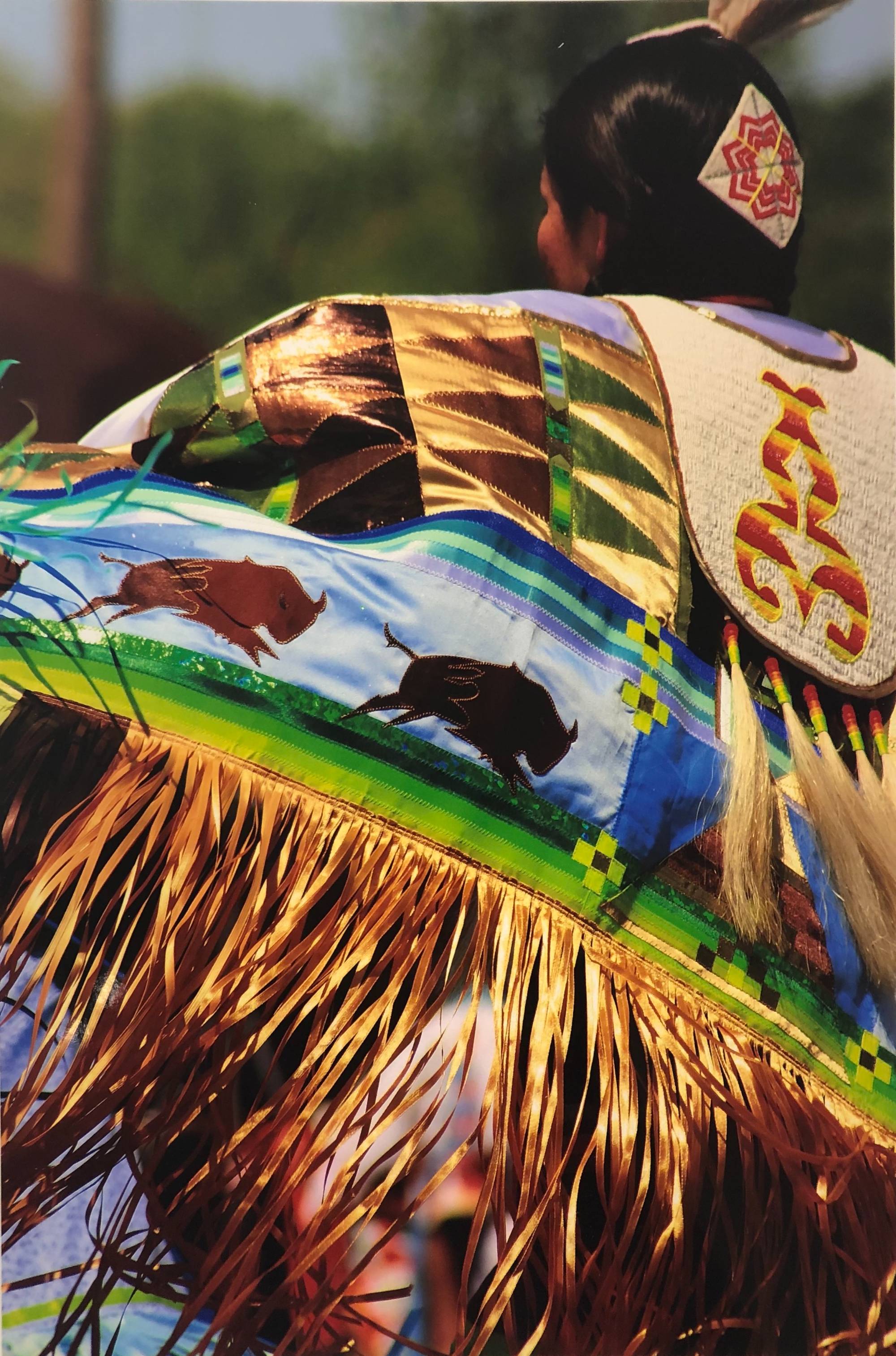
Brita Brooks, Buffalo Fancy Shawl, circa 2008. 2019.1.39
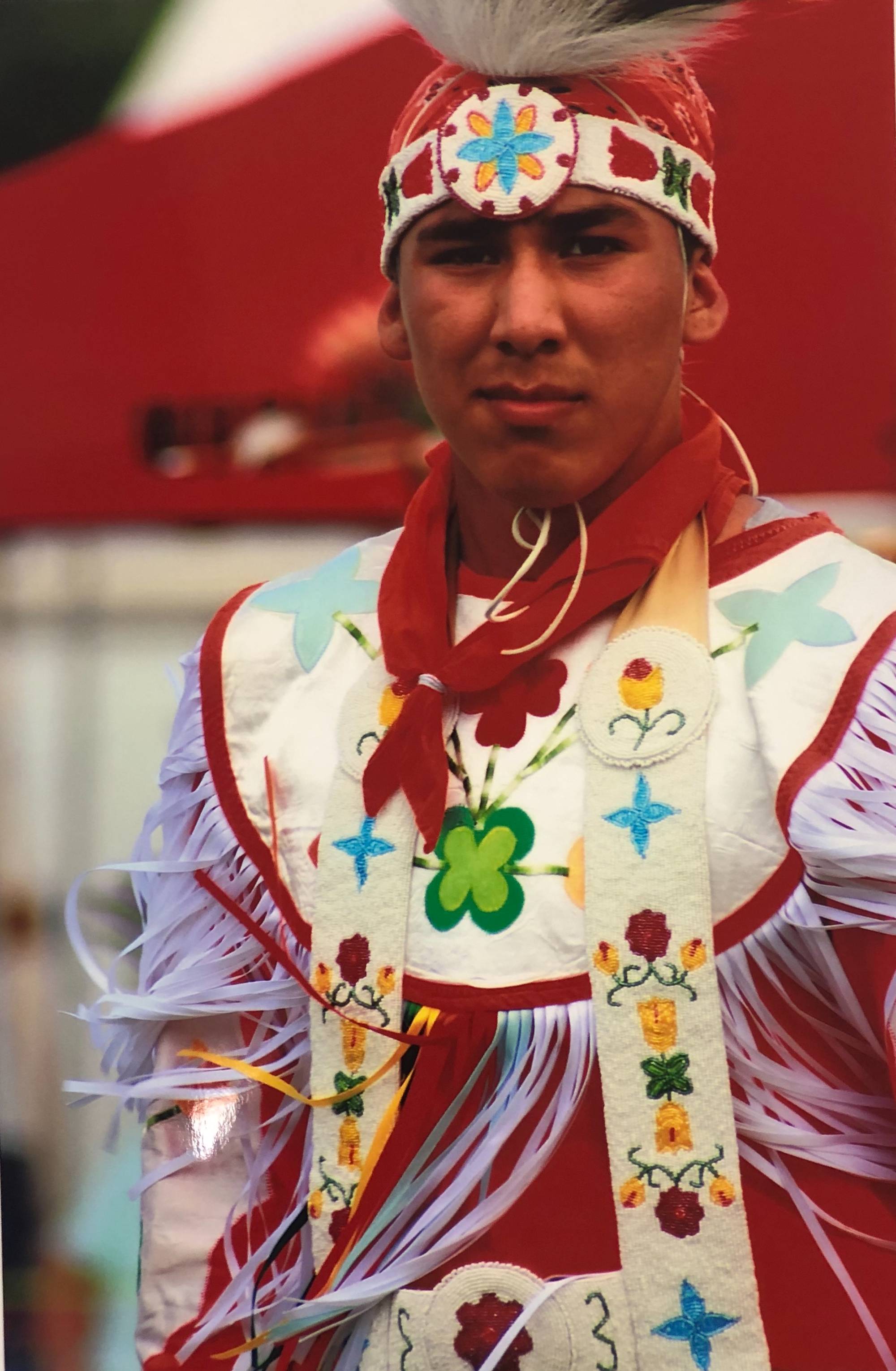
Brita Brooks, Pow Wow Dancer, circa 2008. 2019.1.24a
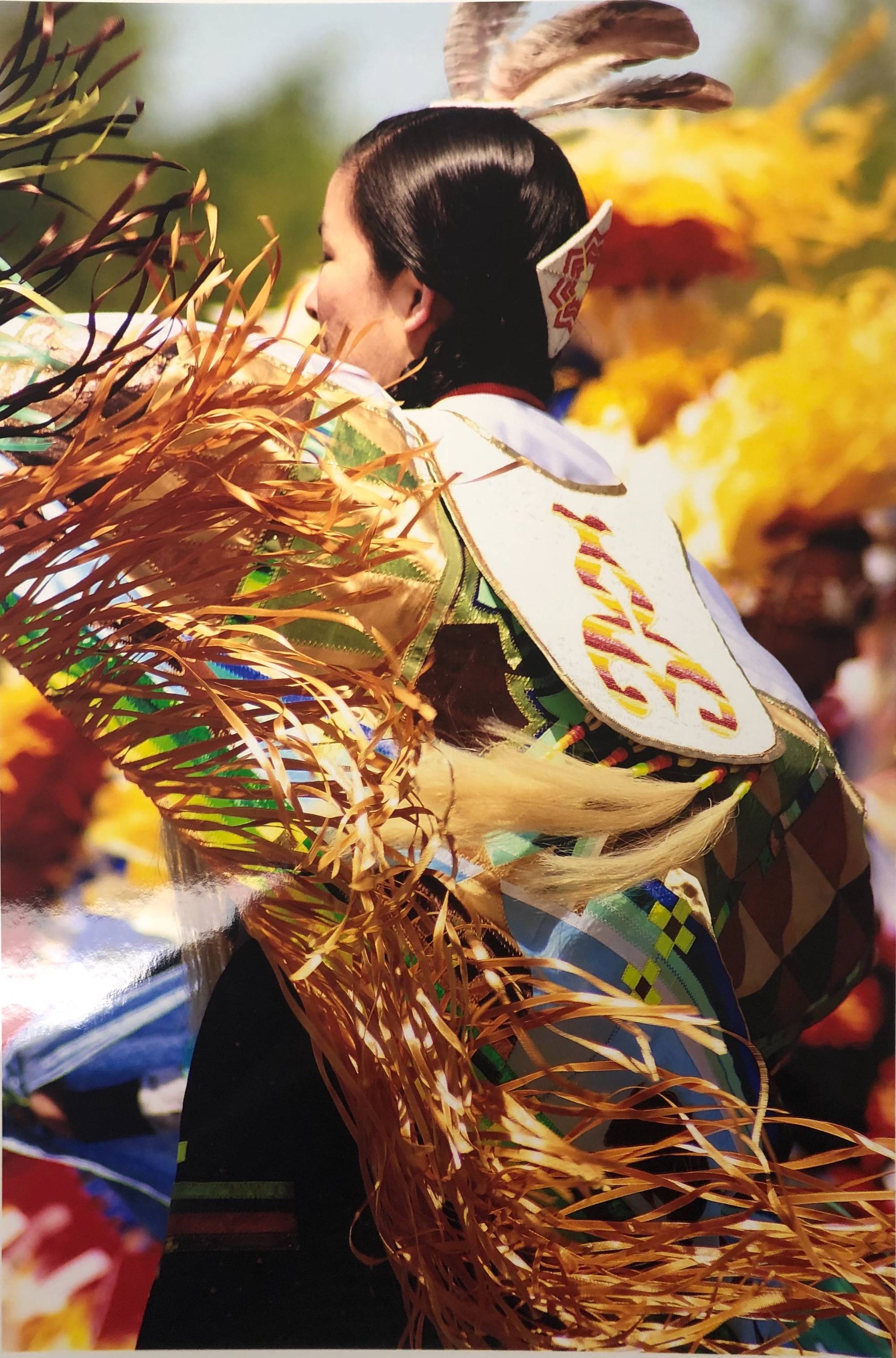
Brita Brooks, With the Wind, circa 2008. 2019.1.10
Donna Ferrato
Donna Ferrato is an internationally recognized photojournalist and activist best known for her documentation of the hidden world of domestic violence. Her first book, “Living With the Enemy,” documents her time in New York City photographing the heady nightclub culture at legendary establishments such as Studio 54 and Xenon. There she met and began documenting the life of prominent swinger couple known as Garth and Lisa. One night she witnessed Garth beating Lisa, a night that would forever change the path of Ferrato’s life and career. For the next decade, Ferrato traveled across the country and became immersed with her camera, in the hidden world of domestic violence, riding in police cars, sleeping in shelters and staying in homes of victims of violence.
[1646167368].jpg)
Donna Ferrato, After Meredith's husband broke her arm, she hit the road with Rebel, her dog. The loyal duo walked from Oregon to California and never looked back. Santa Cruz, CA, 1999, Archival Pigment Print. 2020.47.20
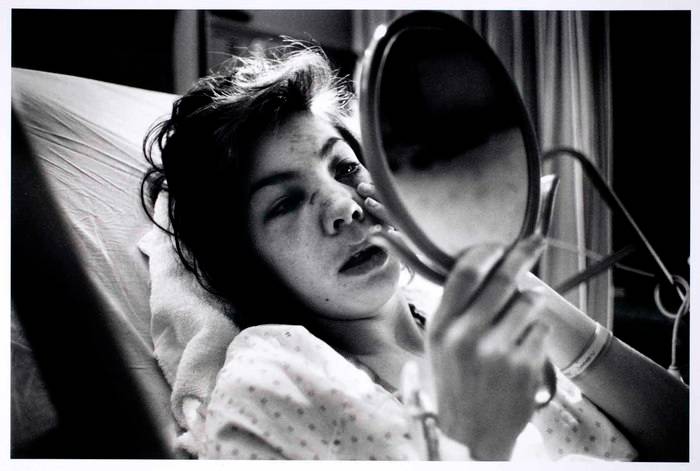
Donna Ferrato, Diana Living with the Enemy, Minneapolis, 1987, Archival Pigment Print. 2020.43.32
[1646167451].jpg)
Donna Ferrato, Margo Left Her Abusive Husband With Her Daughters So They Wouldn't Grow Up Thinking Abuse Was Normal, Marin County, CA, archival pigment print, 2011. 2020.47.25
Douglas Gilbert
At the age of twenty-one, Douglas R. Gilbert joined the staff of Look magazine in New York as the second youngest photojournalist in the magazine’s history. From a young age, Gilbert was attracted to cameras and photography and could be found as a young boy taking pictures of his local Michigan neighborhood and friends. Even then, he would bring his images to the dark room and develop each image until he found the exact color and depth he was looking for. Today, his complete body of work is archived at GVSU.
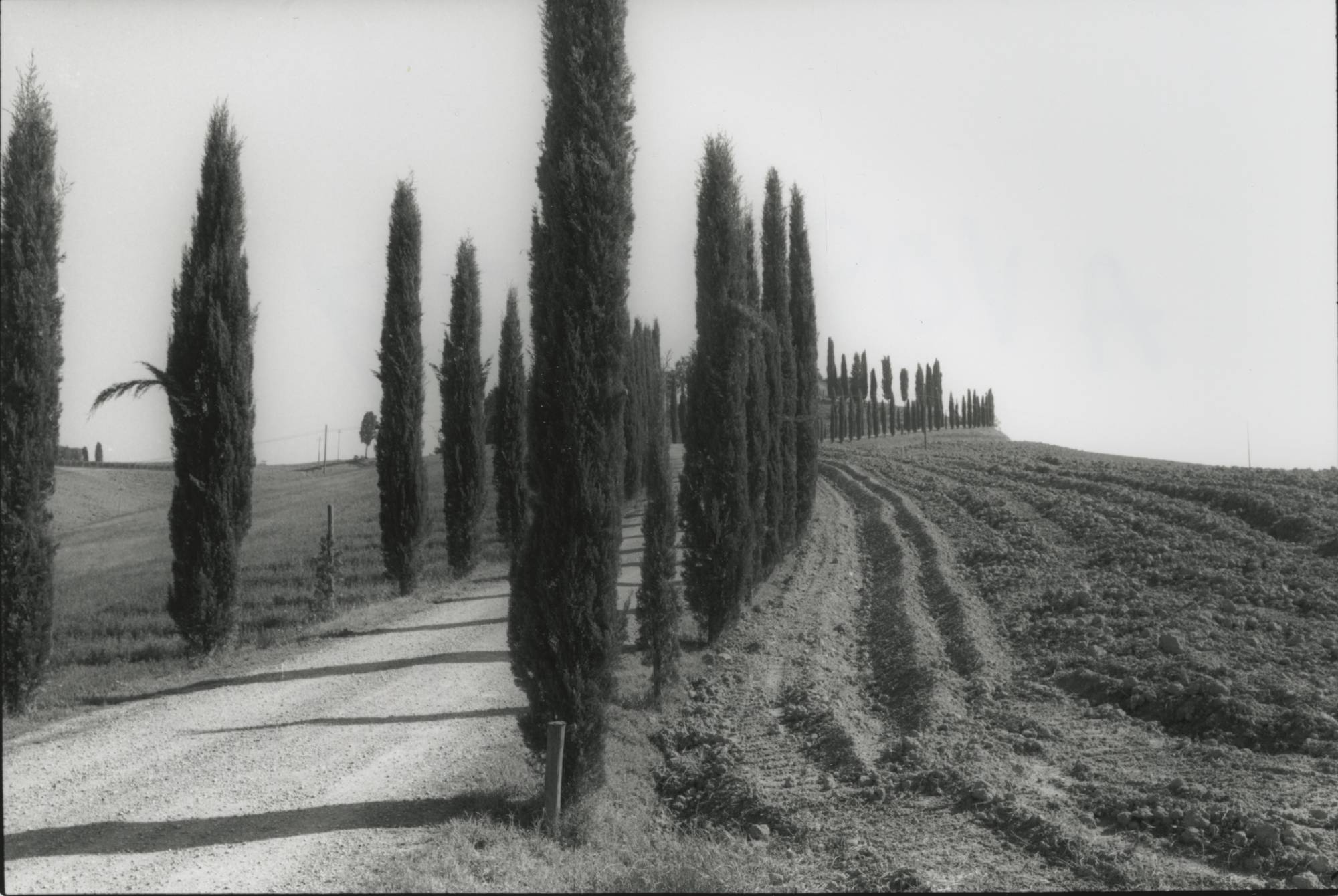
Douglas R. Gilbert, Near Montalcino, Italy, 2007, Silver Gelatin Print. 2018.48.27a
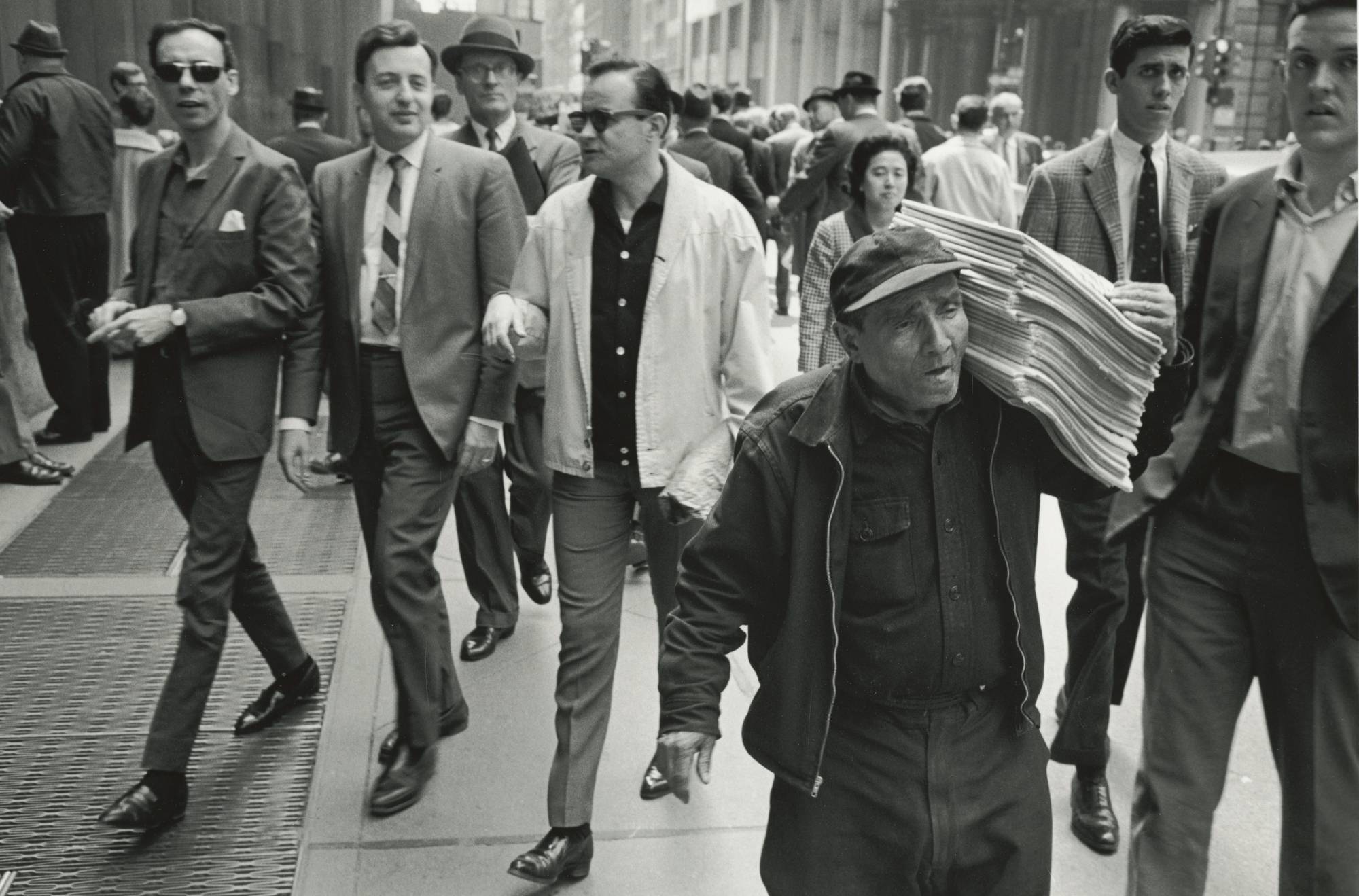
Douglas R. Gilbert, NYC Financial District Newspaper Seller, April 1965, Silver Gelatin Print. 2018.48.797a
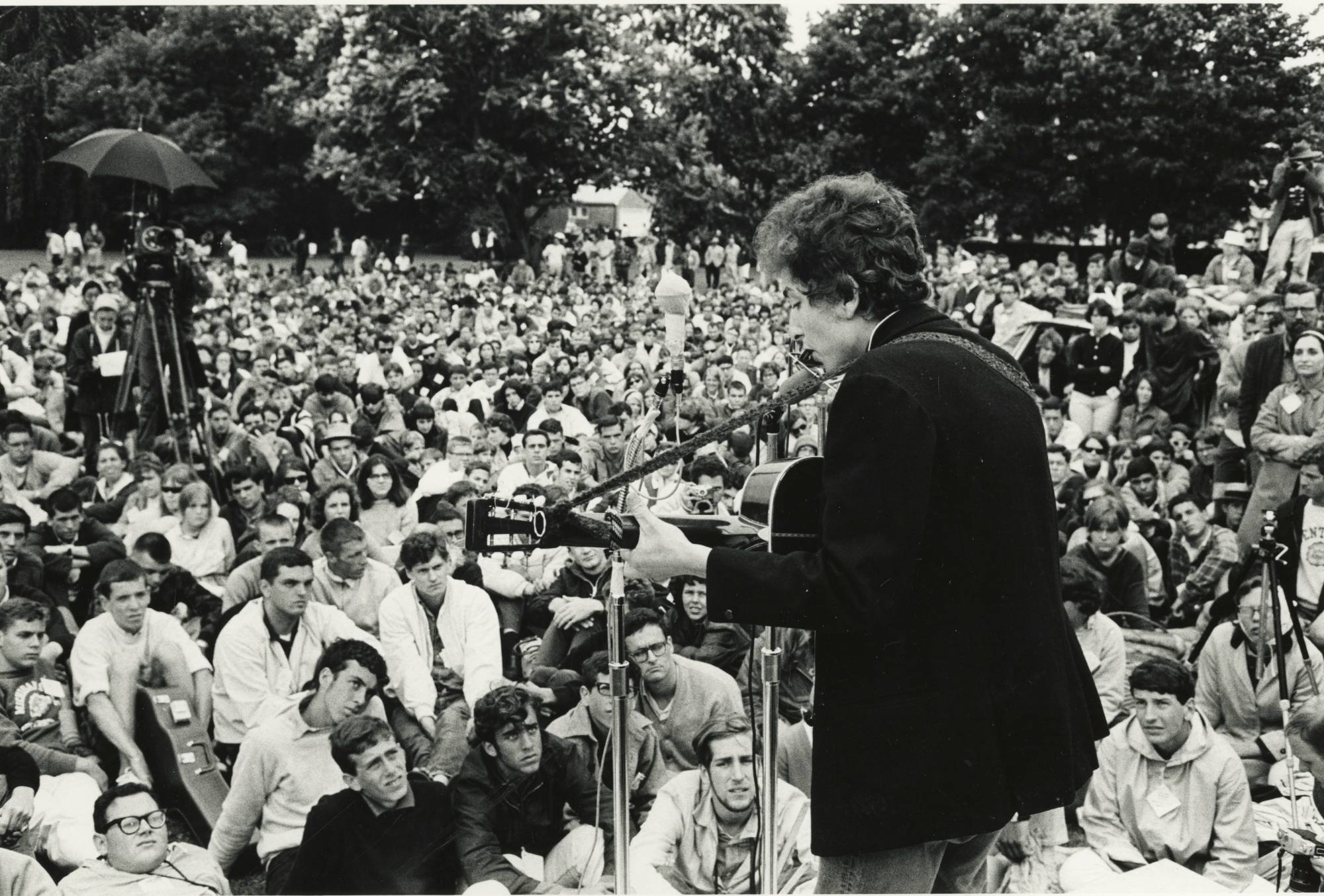
Douglas R. Gilbert, Bob Dylan Daytime Performance at Newport Folk Festival, Newport, Rhode Island, 1964, Silver Gelatin Print. 2018.48.850a
Walter Iooss (b. 1959)
Walter Iooss Jr. is an American photographer best known for his award-winning images of some of the greatest athletes, like Michael Jordan, Tiger Woods, Scottie Pippen and Muhammad Ali. His career began with Sports Illustrated, a magazine Iooss has contributed to for over 50 years. Over the years, he has also worked with Atlantic Records to photograph performers like James Brown, Jimi Hendrix and Janis Joplin. His photographs have appeared in numerous magazines, advertising campaigns, and even baseball cards.
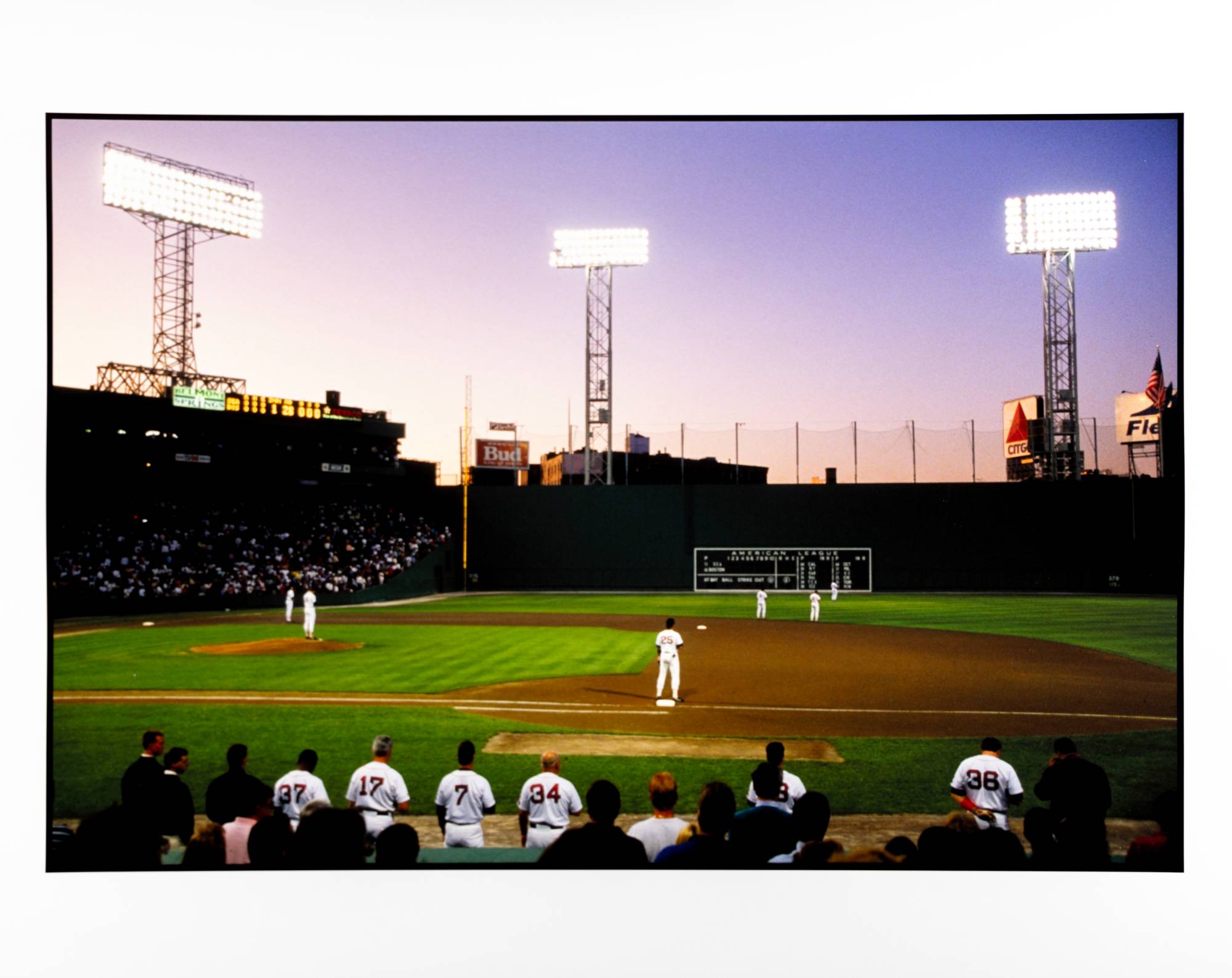
Walter Ioos, Fenway Park, Boston, MA, 1993, Archival Pigment Print. 2020.47.34
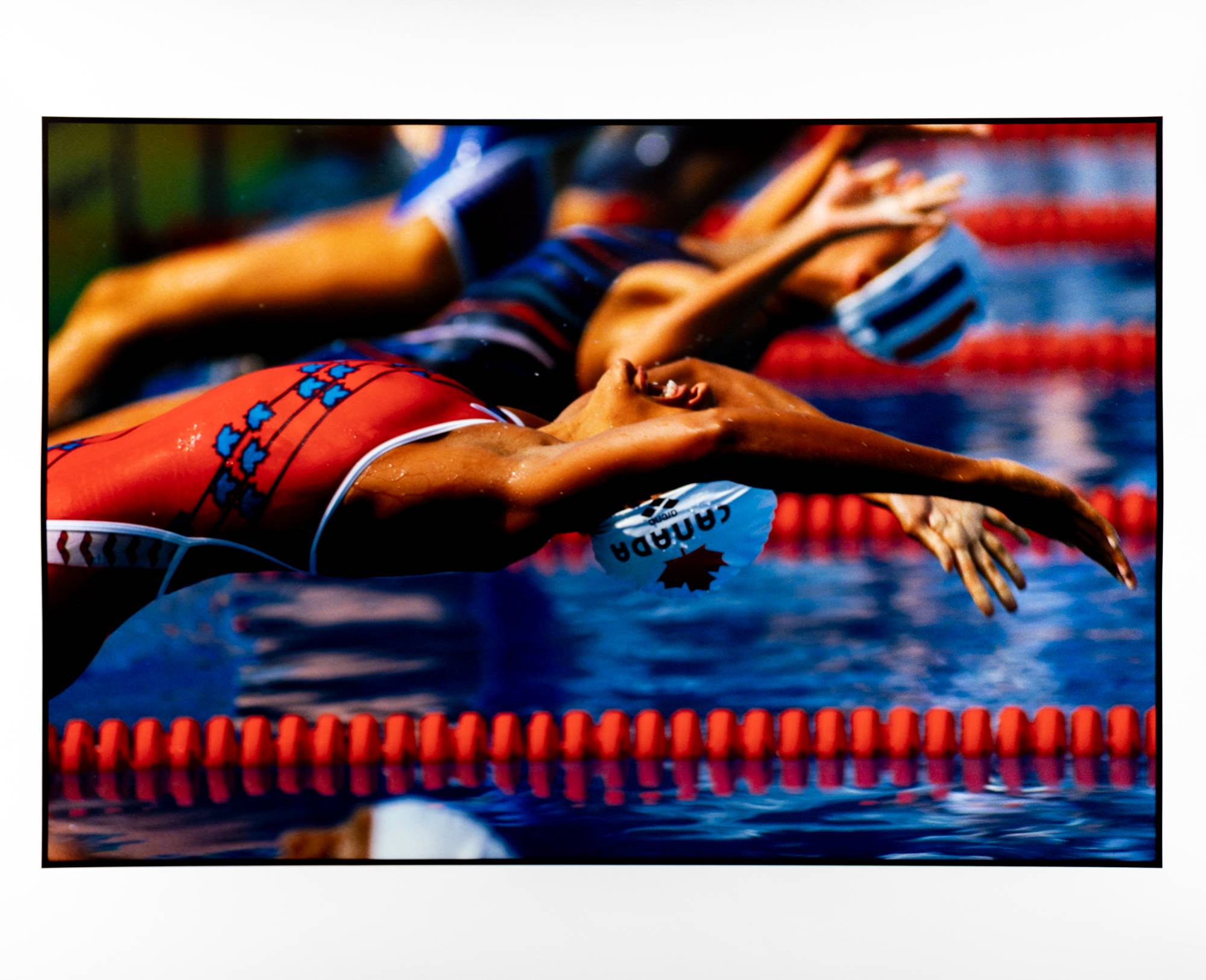
Walter Ioos, L.A. Olympics, 1984, Archival Pigment Print. 2020.47.31
[1647536336].jpg)
Walter Ioos, Ali Weigh-in, Houston Astrodome 2/5/67, 1967, Archival Pigment Print. 2020.47.41
Alen MacWeeney (b. 1939)
Photographer Alen MacWeeney was born in Dublin, Ireland, at the beginning of World War II. One of his earliest series, shot with his trusty Leica camera, included Irish travelers who were semi-nomads. They were also called Tinkers. in 2000, these images were turned into a movie, "Traveller," with MacWeeney as one of the directors.
Peter Turnley (b. 1955)
Peter Turnley began photographing in 1972 in his hometown of Fort Wayne, Indiana. He and his twin brother, David, photographed the life of inner-city, working-Class McClellan Street, working to give a voice to the heart of America. Since this early project, his photographs have always drawn attention to the plight of those who have suffered great hardships or injustice, while finding that many aspects of life are also beautiful, poetic, just, and inspirational.
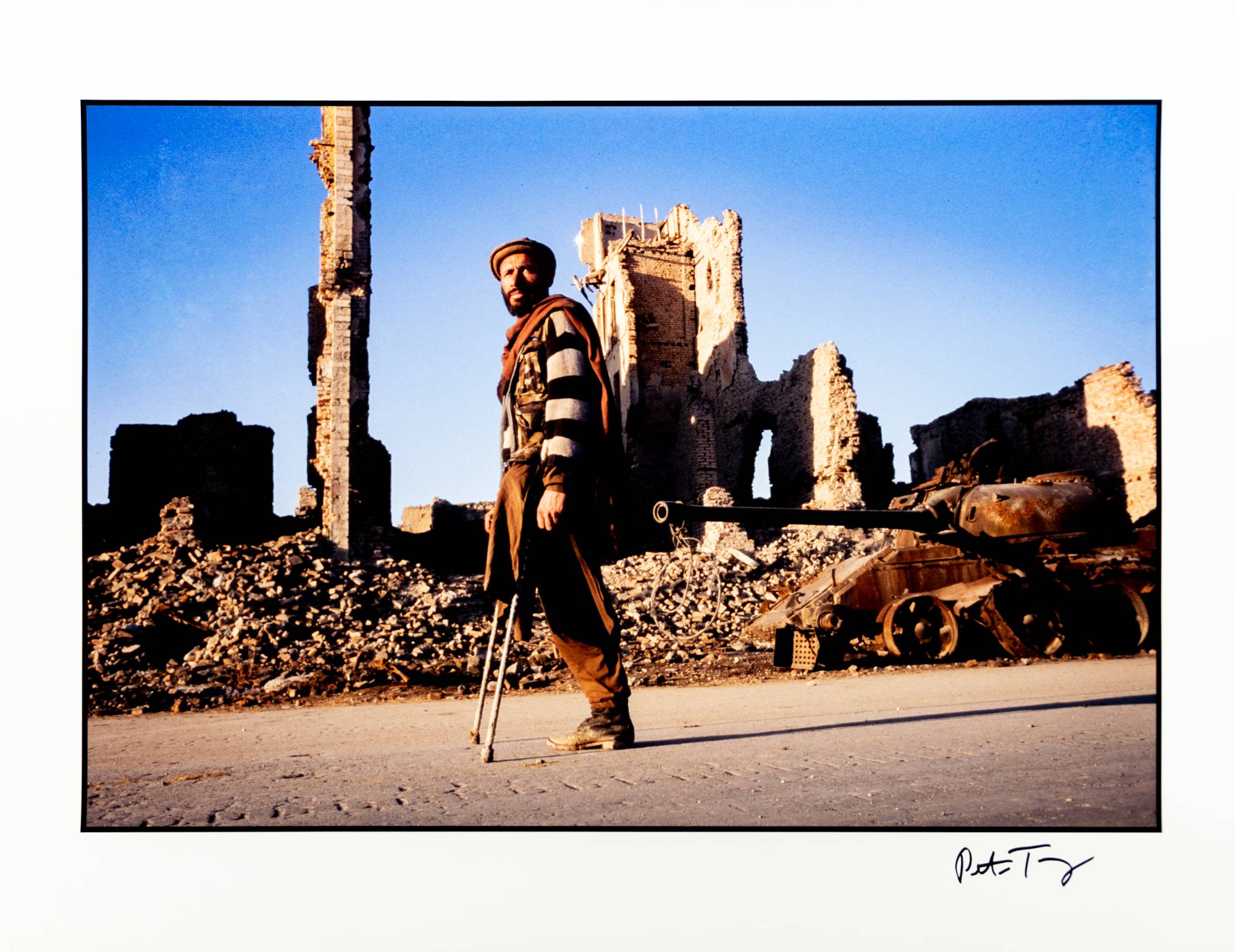
Peter Turnley, A Victim of Landmines, Kaboul, Afghanistan, 1996, Archival Pigment Print. 2020.42.21
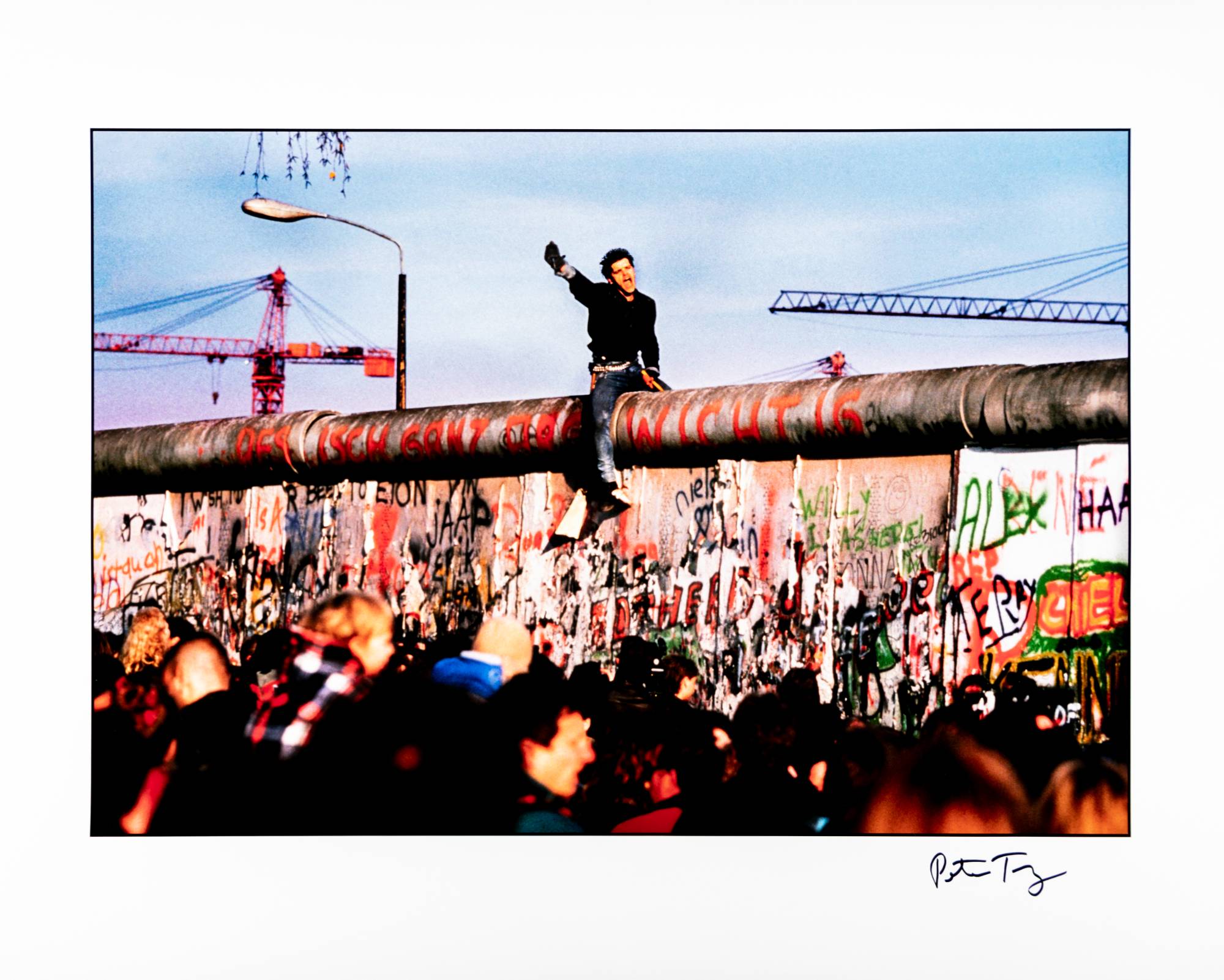
Peter Turnley, The Fall of the Berlin Wall, Berlin, Germany, 1989, Archival Pigment Print. 2020.42.33
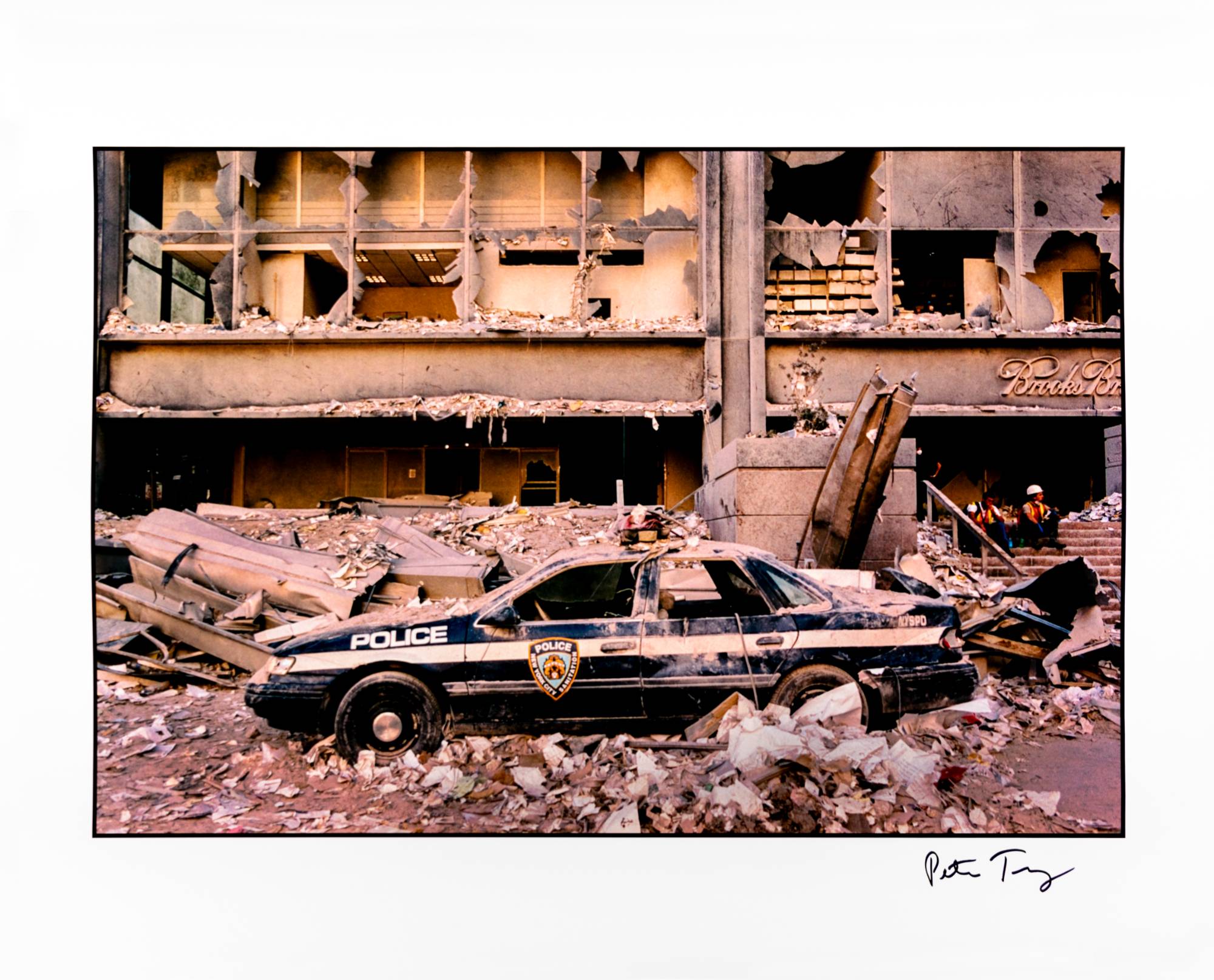
Peter Turnley, Ground Zero, New York City, Sept. 12, 2001, 2001, Archival Pigment Print. 2020.46.53
Dan Watts (b. 1948, GVSU Alum ’79)
Combining his passions for photography and anthropology, Grand Rapids based photographer Dan Watts has traveled to over 30 countries for corporate, magazine and personal projects. He has spent much of his career in Asia, Europe, Africa and Latin America, documenting his experiences through his photography. One of his largest projects took him to the sister-cities of Grand Rapids, documenting the landscapes, architecture, people and culture of each individual location.
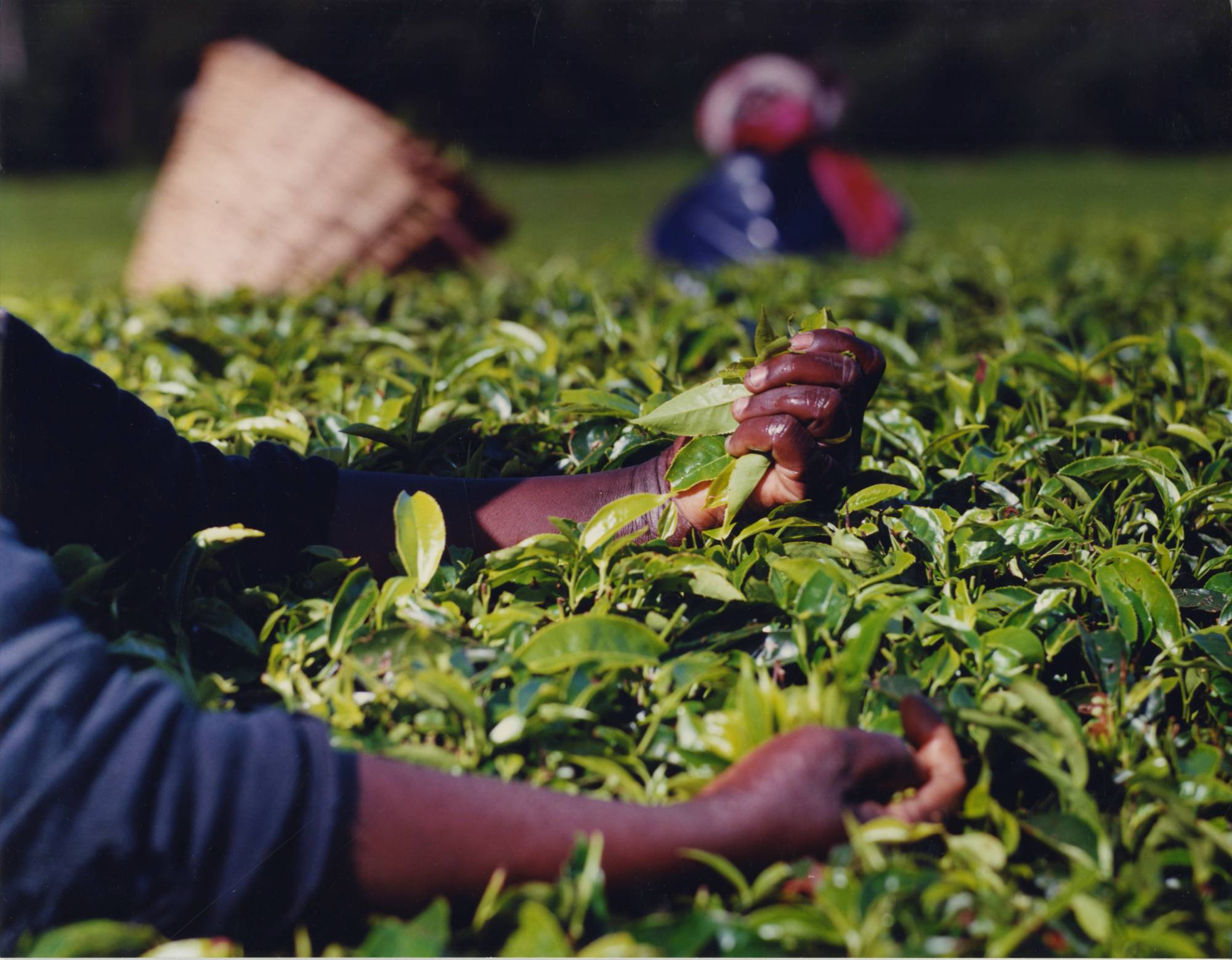
Dan Watts, Tea Estate #8, Date Unknown. 2002.245.1
[1647539674].jpg)
Dan Watts, Going Fishing at Dawn, 2008. 2008.186.1b
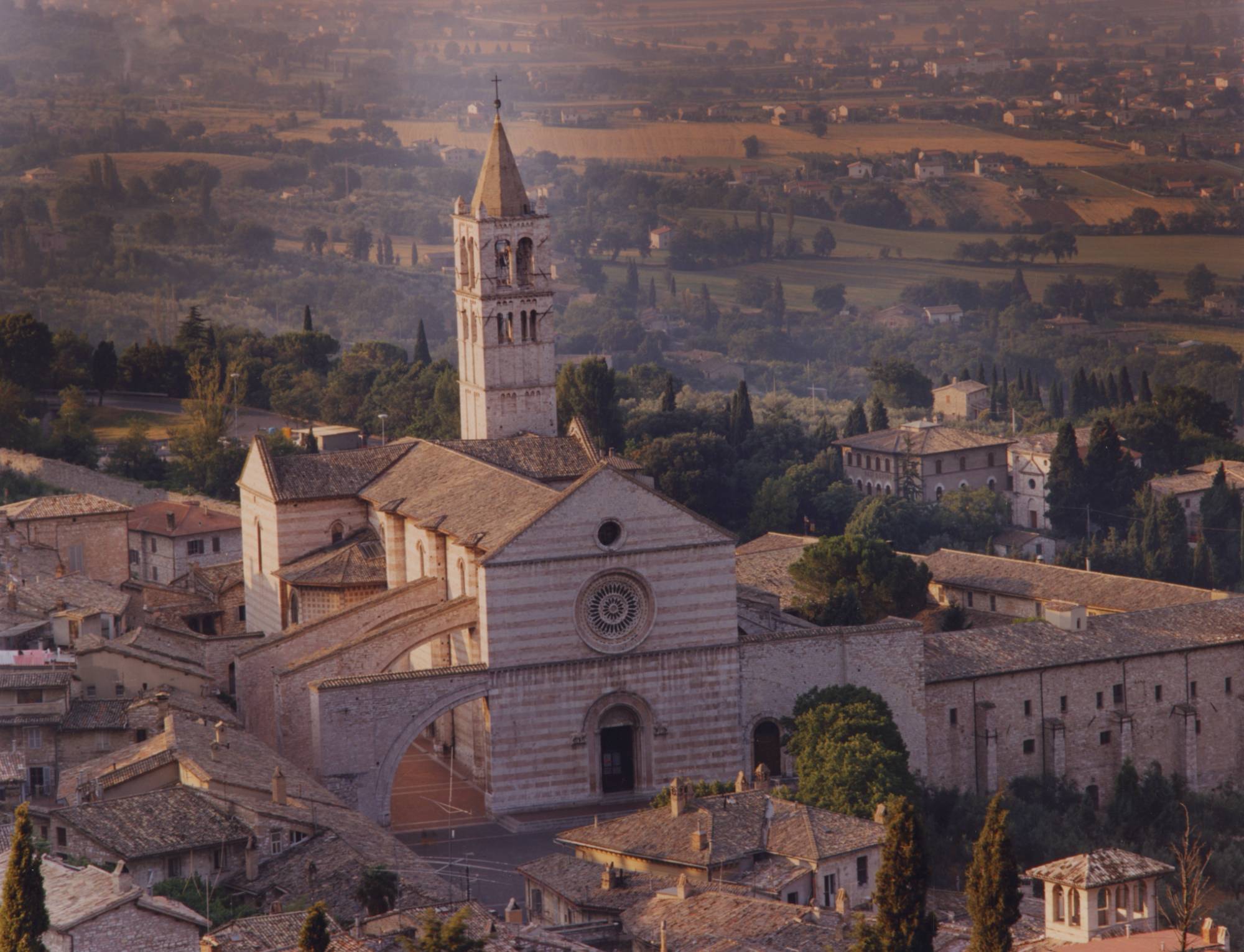
Dan Watts, Basilica Di Santa Chiara, Assissi, 1996. 2003.330.1
Sarah Wong (b. 1962)
From 2003 to 2018, Sarah Wong followed and photographed the lives of cross-gendered children. She was invited into their homes, schools, and daily life activities, proving they are regular children that are living the lives they have always wanted. These images were the first official photos of transgender children from the Netherlands. Originally published in the Dutch daily newspaper, “De Volkskrant (The People’s Paper),” Wong created the series of photographs, which later became a published book titled, “Inside Out: Portraits of Cross Gender Children,” to bring awareness and inform people about this vulnerable population.
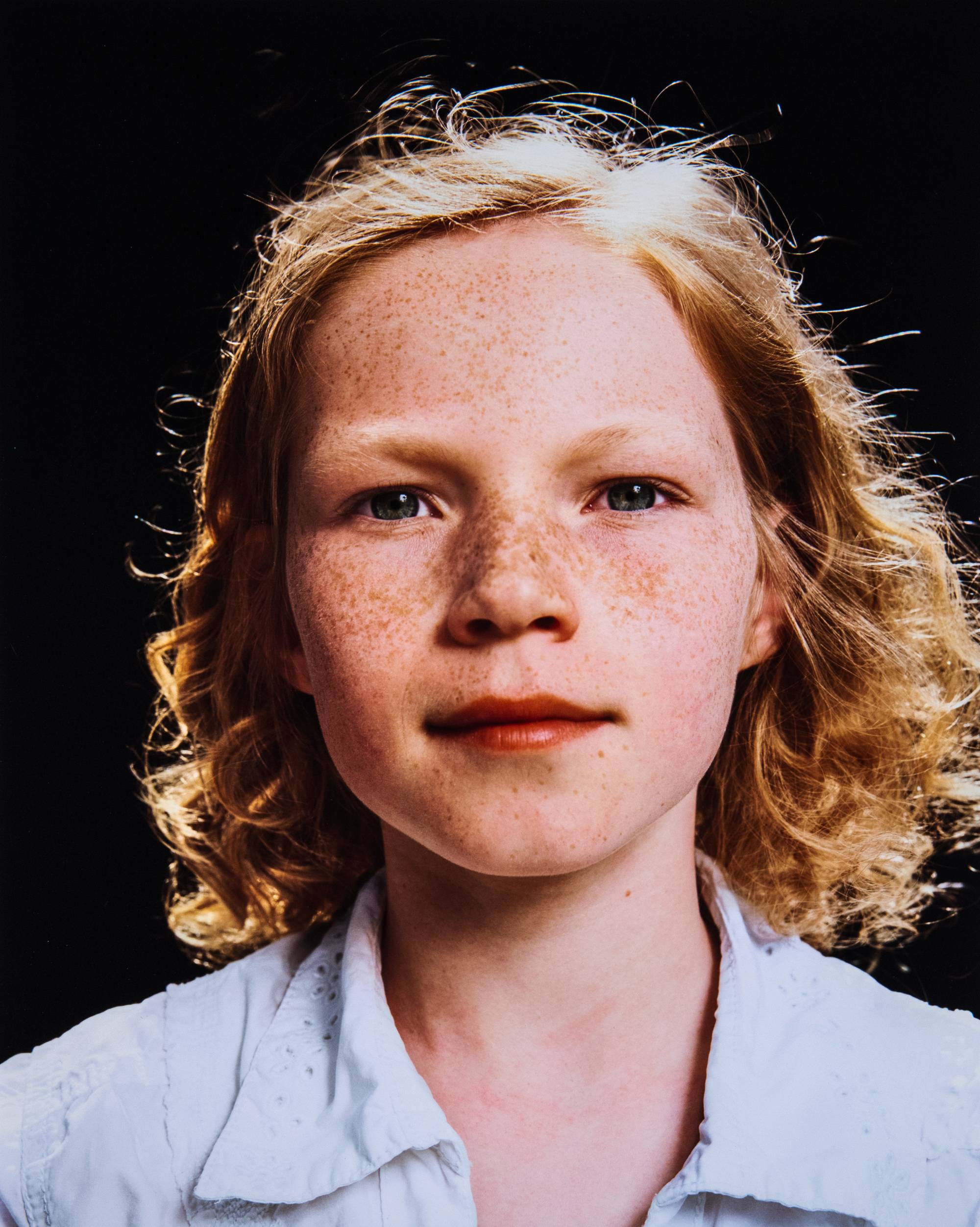
Sarah Wong, Authentic Self, 2010. 2019.22.1
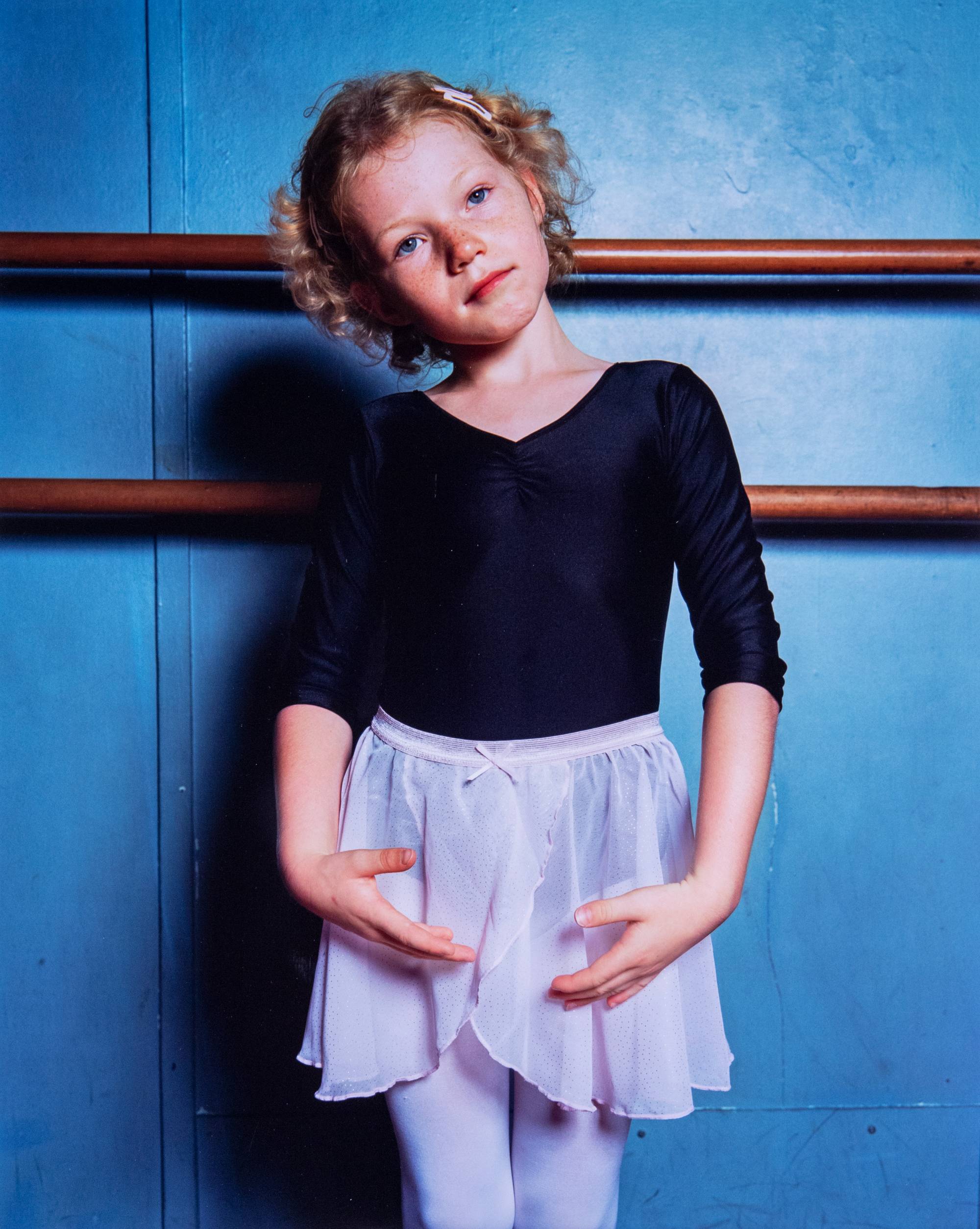
Sarah Wong, Authentic Self, 2006. 2019.22.2
[1647536772].jpg)
Sarah Wong, Tomorrow’s Dream, 2004. 2004.0336.1
Photographic Still Life
While paintings of perfectly arranged fruits in a bowl have been around for centuries, many contemporary photographers have taken the idea of the still-life image in a new direction. Playing with scale, color, juxtapositions and visual relationships of an everyday object elevates the subject into something extraordinary. With the context and background stripped from the viewer, the object becomes conceptual. The still-life photograph becomes an outlet for the photographer to determine the significance of an object and foster the curiosity of the viewer.
Dick Dokus
Dick Dokas is a retired career teacher who has taught photography, computer graphics, and biology. While his early art focused on drawing, in his adulthood he turned to photography. He exclusively uses an 8x10 camera, which is also the only film size he uses. Black and white images of landscapes and flowers are his most frequent subjects.
[1646167009].jpg)
Dick Dokus, Tulips, circa 2000. 2003.017.1
[1646167060].jpg)
Dick Dokus, Gerbera Daisy, circa 2000. 2003.07.1
[1646167115].jpg)
Dick Dokus, White Iris, circa 2000. 2003.08.1
Ralph Gibson
Within his long career, Ralph Gibson has managed to combine his love of books and book-making with the skills he learned as a Photographers Mate in the United States Army in 1956. In 1969, Gibson moved to New York City to begin his own publishing company, Lustrum Press. Since then, he has published over 40 specialized books on a single subject called monographs. Gibson’s photographs are known for being on the edge of mysterious and erotic, leaving the viewer to build a narrative on their own for each image.
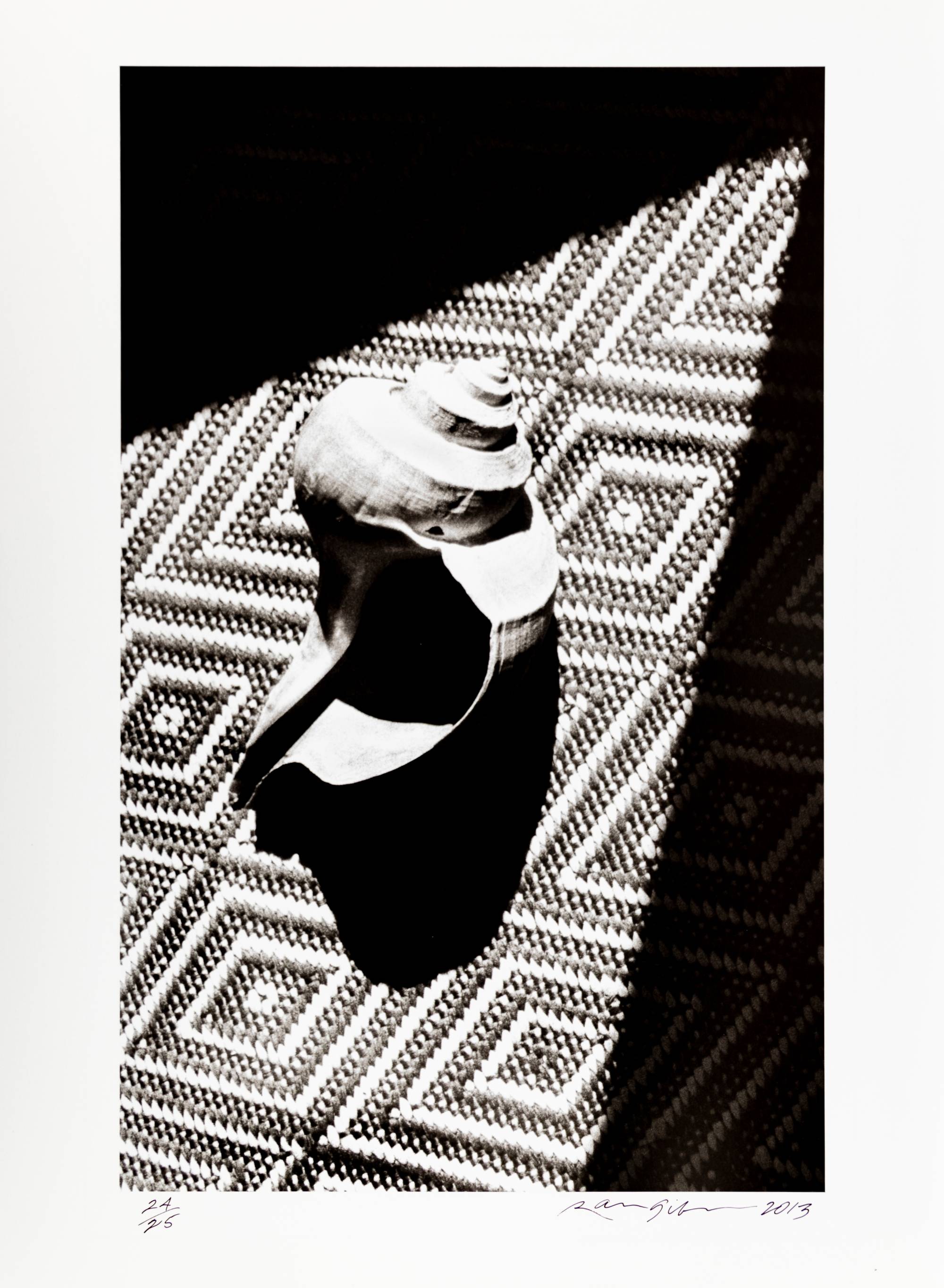
Ralph Gibson, Untitled (from MONO p. 47), 2013, Archival Pigment Print. 2020.40.20
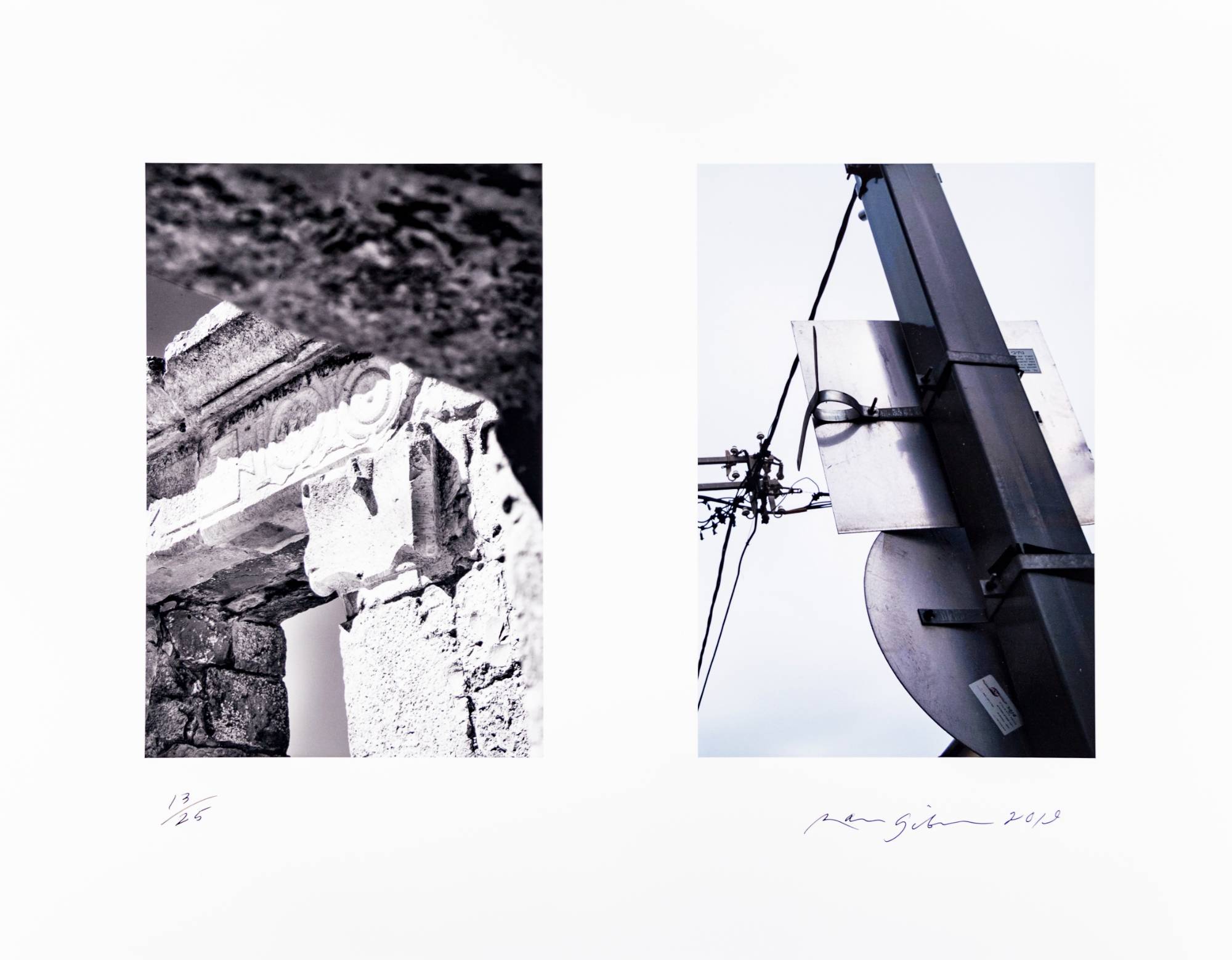
Ralph Gibson, Untitled (from Sacred Land), 2019, Archival Pigment Print. 2020.41.11
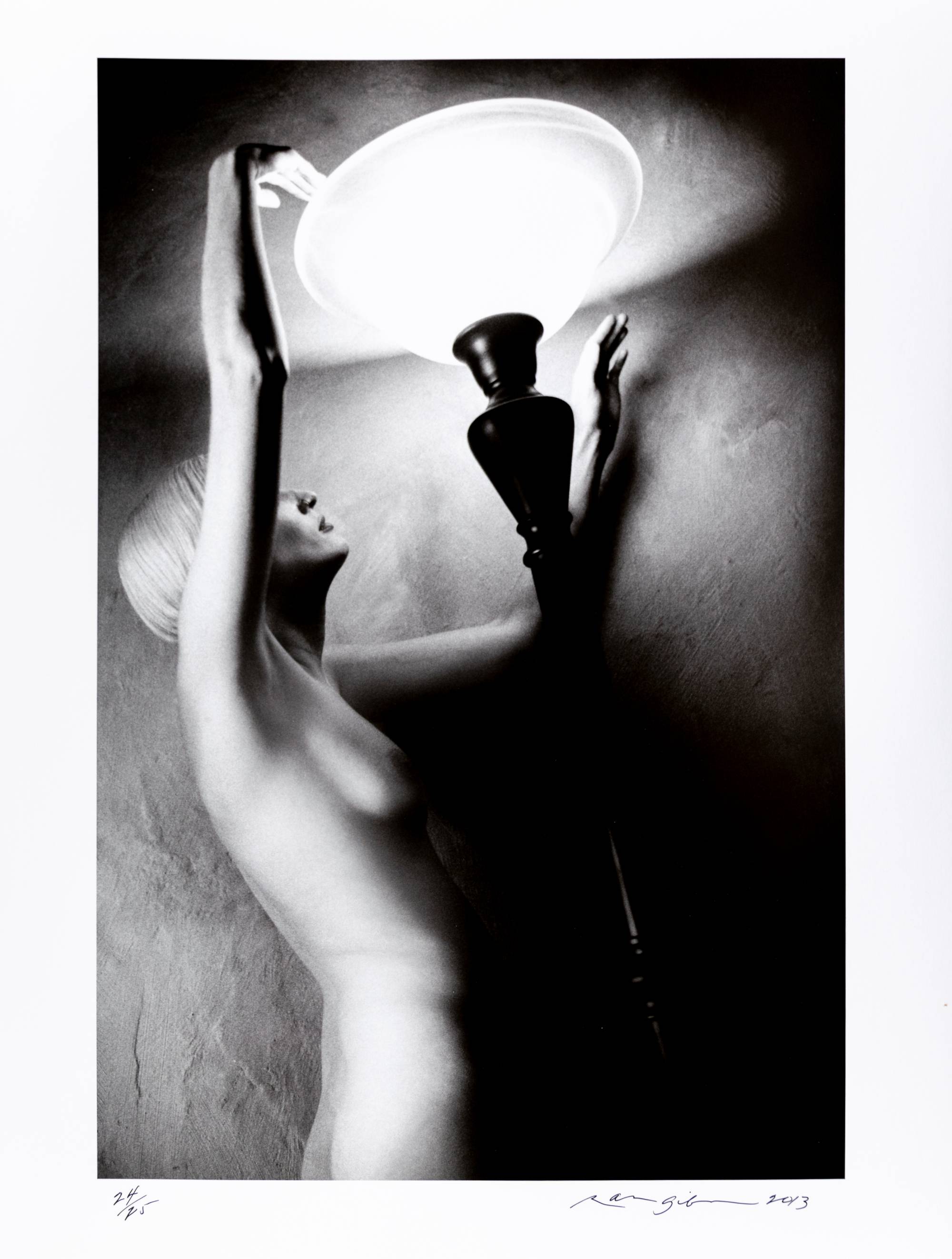
Ralph Gibson, Untitled (from MONO p. 17), 2013, Archival Pigment Print. 2020.46.19
Robert Koropp (1924 – 2008)
After serving in the army in World War II, Chicago-born photographer Robert Koropp attended Northwestern University in Evanston, Illinois, where he received his Bachelor of Science in Chemistry. Later he studied photography at the Art Center School in Los Angeles, California. Through his photography, Koropp combines his science and art backgrounds in experimental ways, creating images that make the viewer look twice, creating manipulated images in a time before Photoshop.
Joyce Tenneson (b. 1945)
Joyce Tenneson earned her master's degree in photography from George Washington University after starting as a model for Polaroid. Still today, she primarily shoots with a Polaroid 20x24 camera. Her work has been published in books and major magazines and exhibited in museums and galleries worldwide, making her one of the most influential women photographers.
[1647537244].jpg)
Joyce Tenneson, Chinese Lanterns, 2020, Archival Pigment Print. 2021.85.6
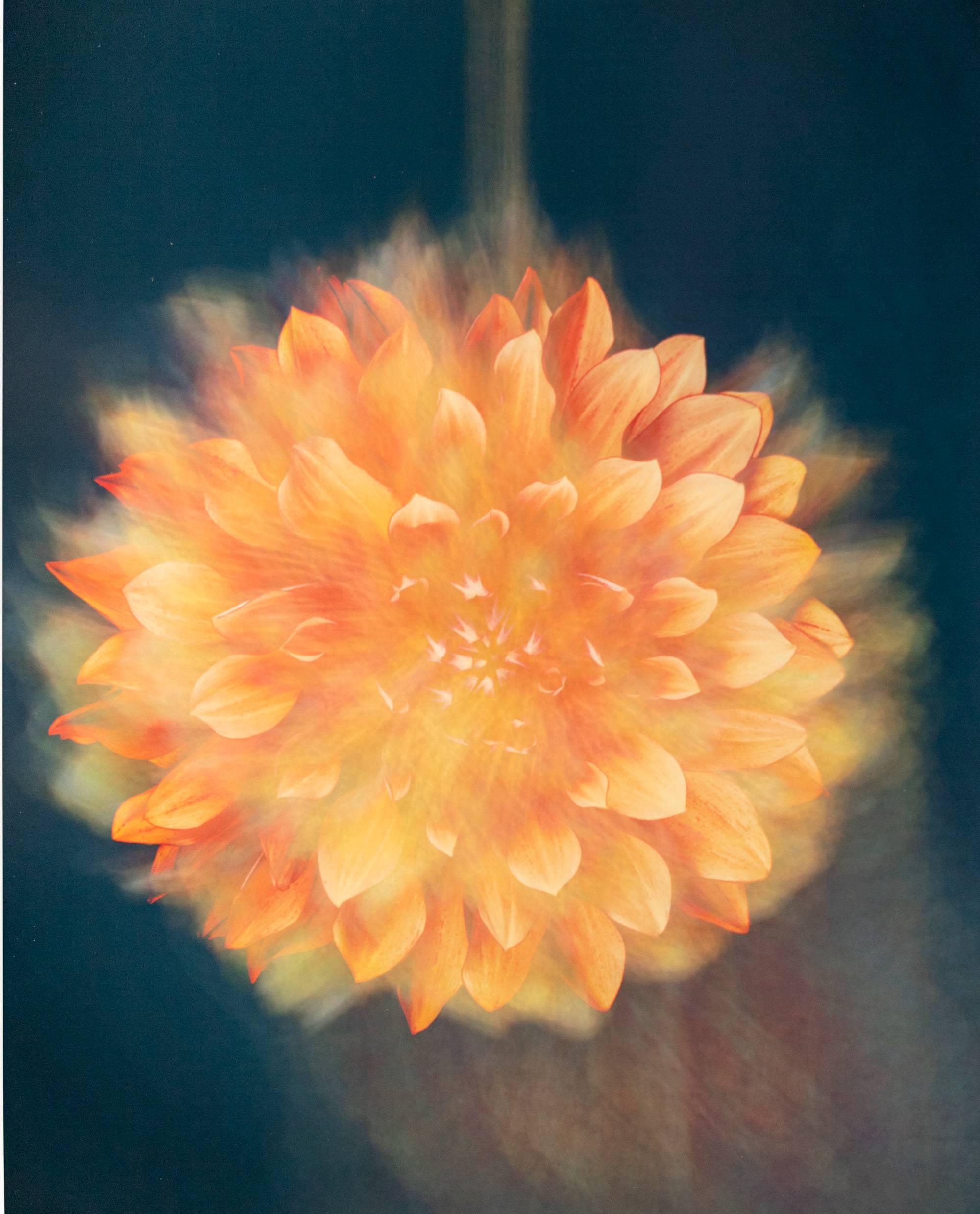
Joyce Tenneson, Sun Dahlia, 2020, Archival Pigment Print. 2021.85.9
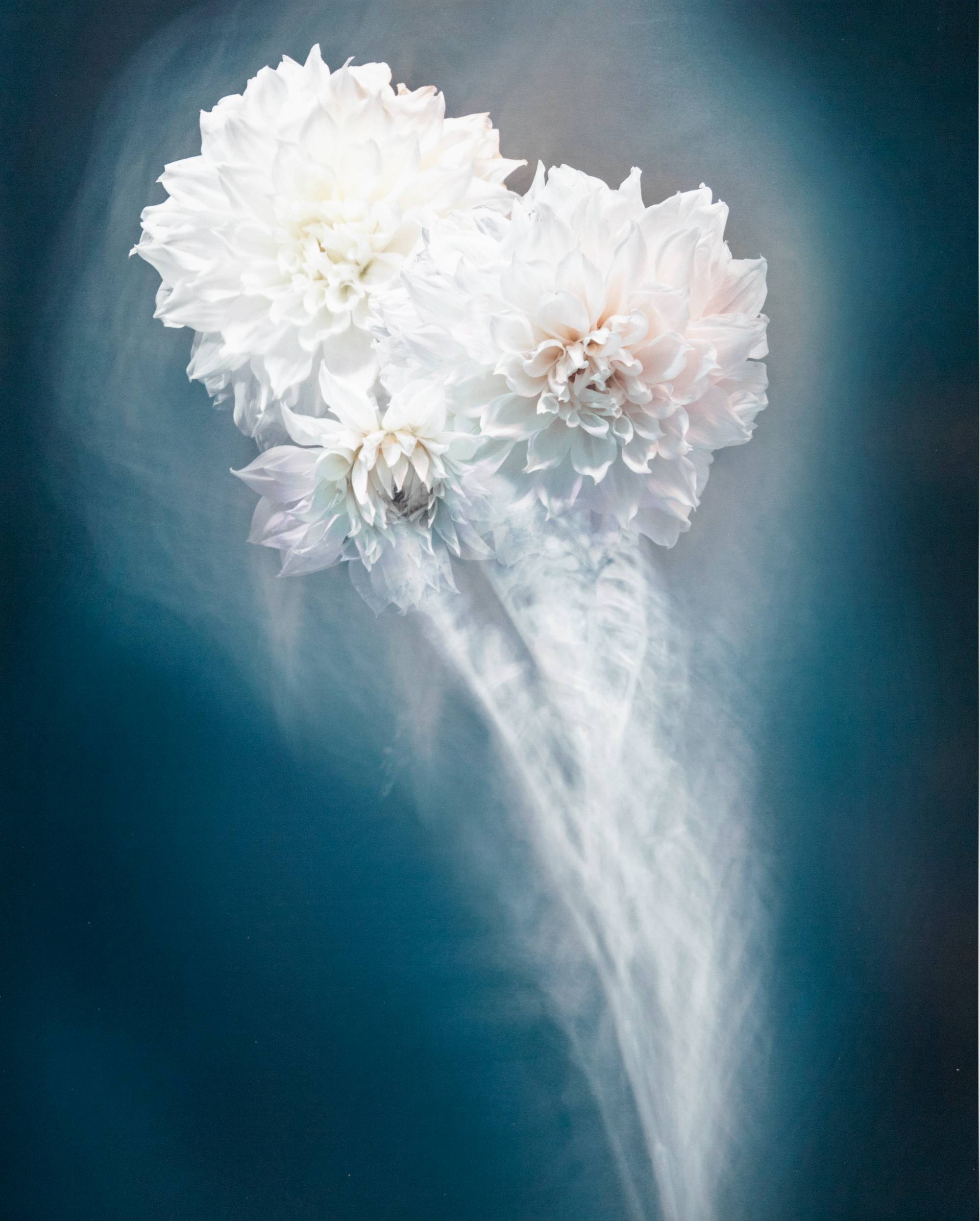
Joyce Tenneson, Glowing Dahlias, 2020, Archival Pigment Print. 2021.85.11
Contemporary Portraits
While still rooted within the early invention of the camera, contemporary portrait photography is no longer about studio portraits only available to those who could afford them. Contemporary portraits reach beyond conventional representations of individuals, family portraits, or images from magazines or publications, but instead brings in an aspect of story-telling, a complete narrative evident in one single image. Even if a portrait is void of any human faces, the portrait itself becomes more about the face of the concept, rather than a single person.
Patty Carroll
Since the 1970s, Chicago- based photographer Patty Carroll has become known for her use of highly intense, often life size, saturated color photographs. Especially in her most recent collection, many of Carroll’s images address women and their complicated relationships with domesticity and the perceived obsession of collecting, designing and decorating. Her photographs of draped women camouflaged by domestic items create a humorous game of seek-and-find between the viewer and the anonymous woman in the image.
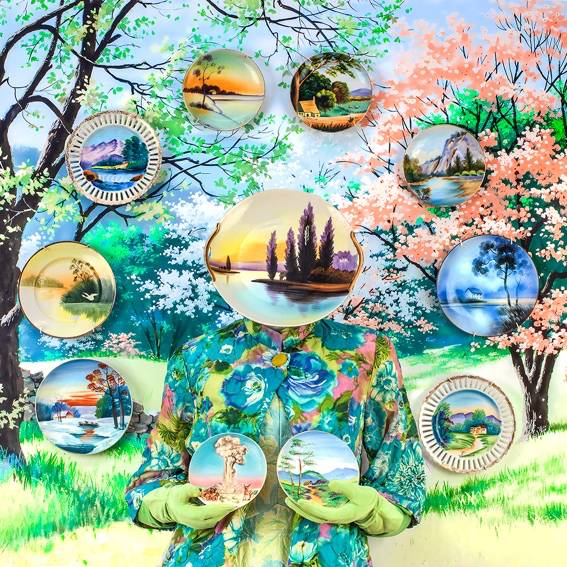
Patty Carroll, Platey, digital archival photograph, 2016, 2021.73.4
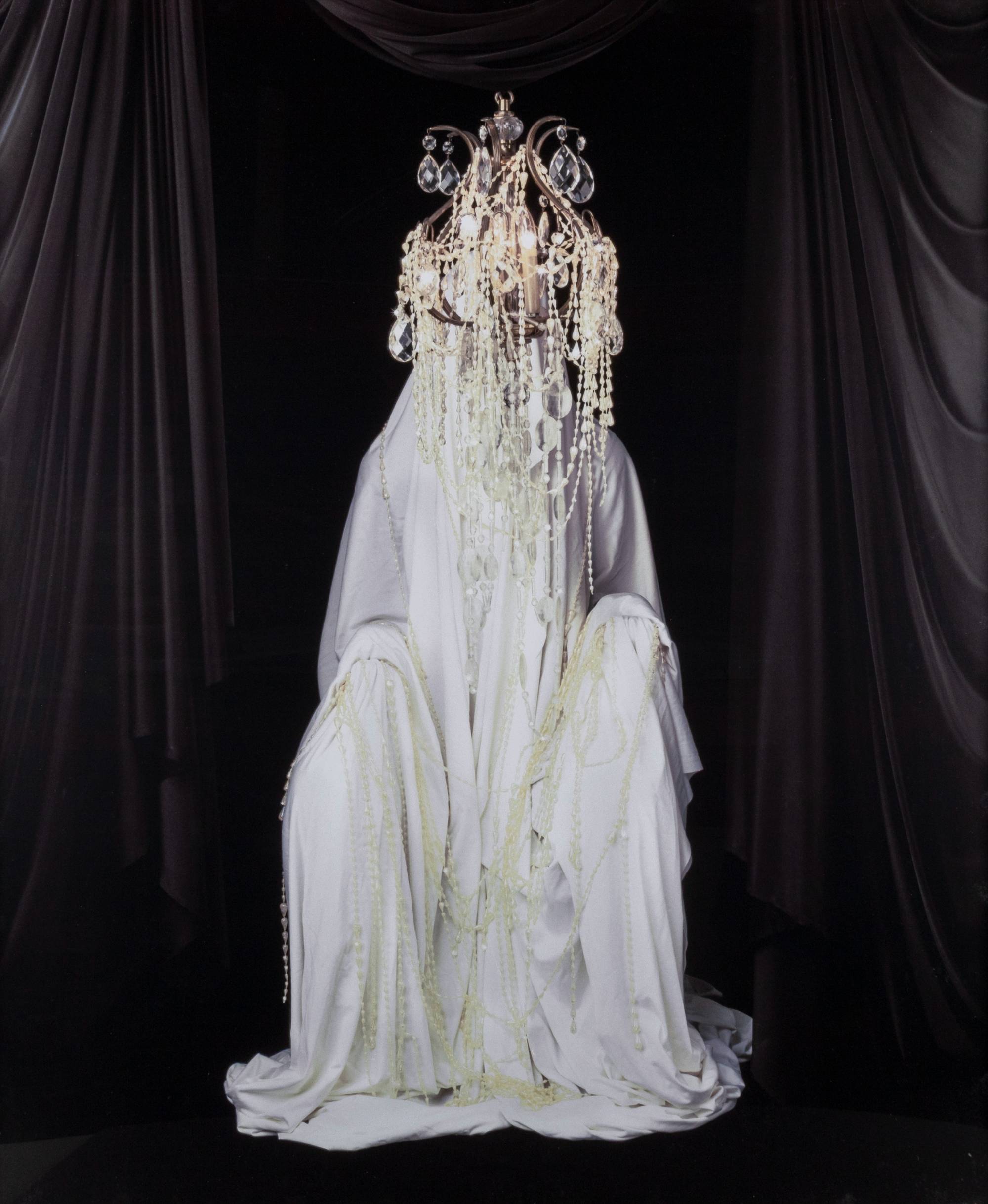
Patty Carroll, Chandelier, Date Unknown, Digital Archival Print. 2021.73.22
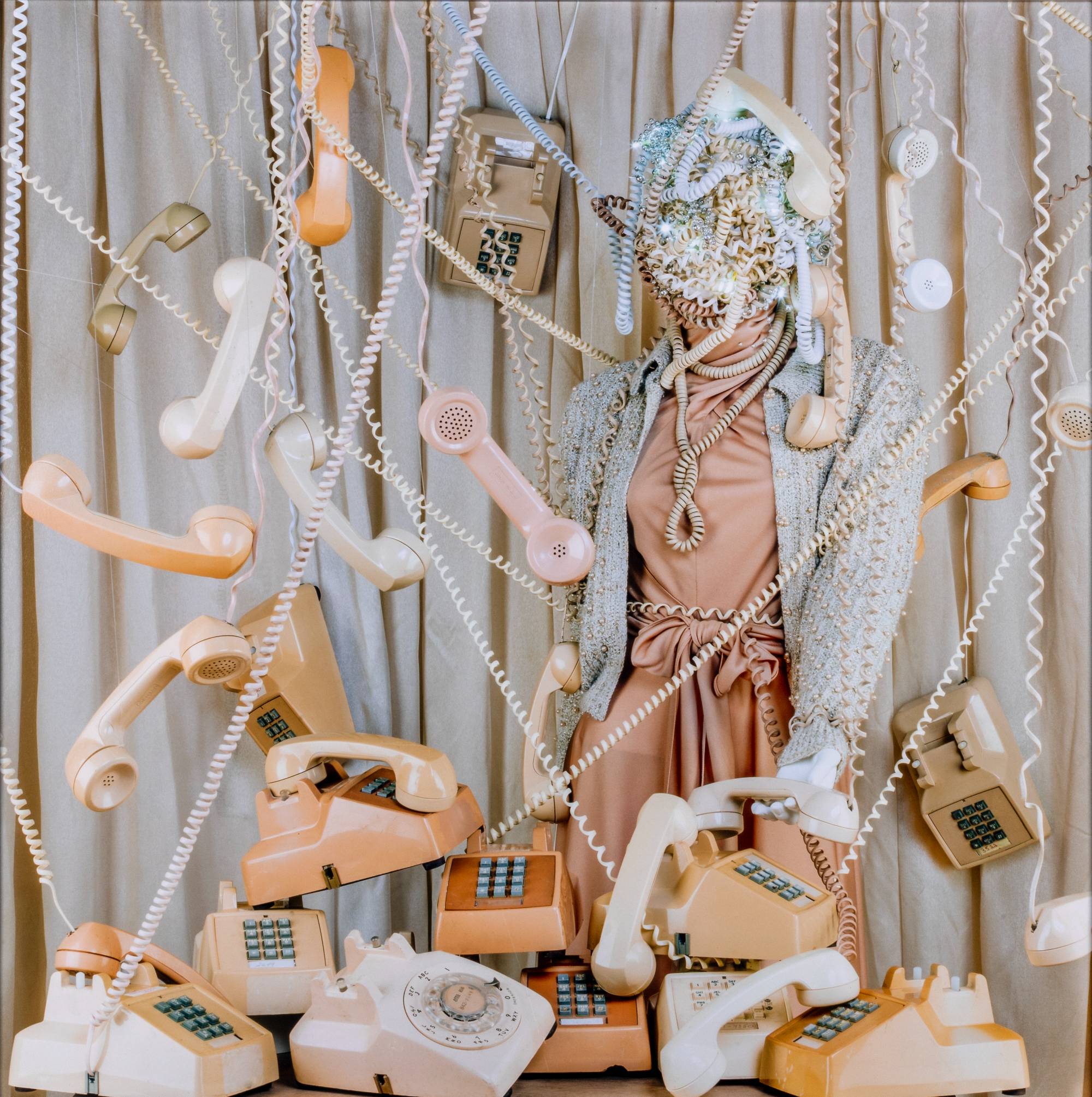
Patty Carroll, Phoney, 2016, Digital Archival Print. 2021.73.1
Darlene Kaczmarczyk
Darlene Kaczmarczyk is professor emeritus at Kendall College of Art and Design in Grand Rapids, Michigan. Her inspiration comes largely from commercial advertising of the 1950s, styles that still exist today in modern culture. She focuses on iconic feminine apparel such as handkerchiefs and aprons, turning them into satirical representations of the social status of women. As a photographer she enjoys using alternative photographic methods like pinhole and photograms to create her work.
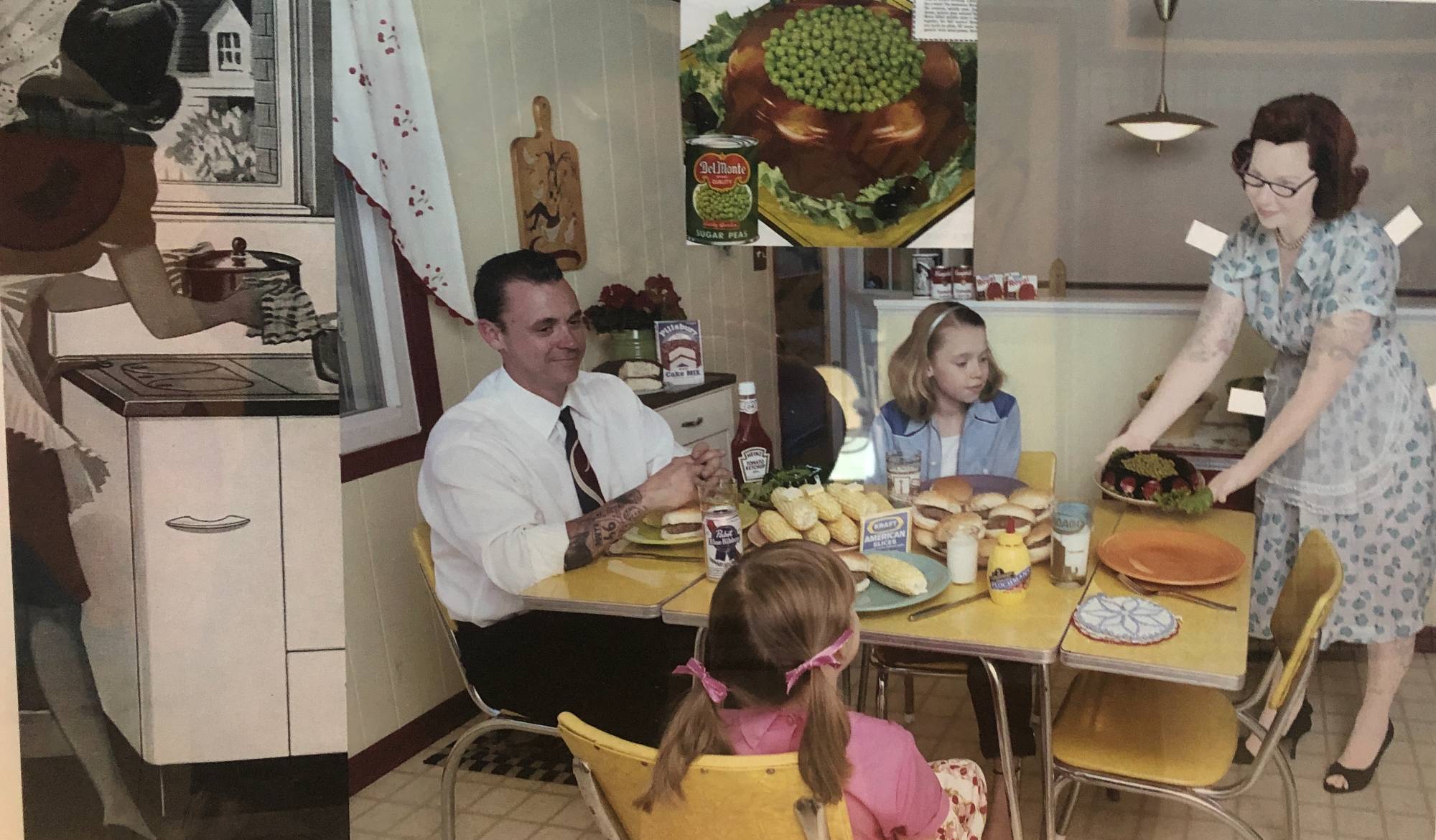
Darlene Kaczmarczyk, Out of the Picture: Dinner, 2009, Durachrome Print. 2021.79.13
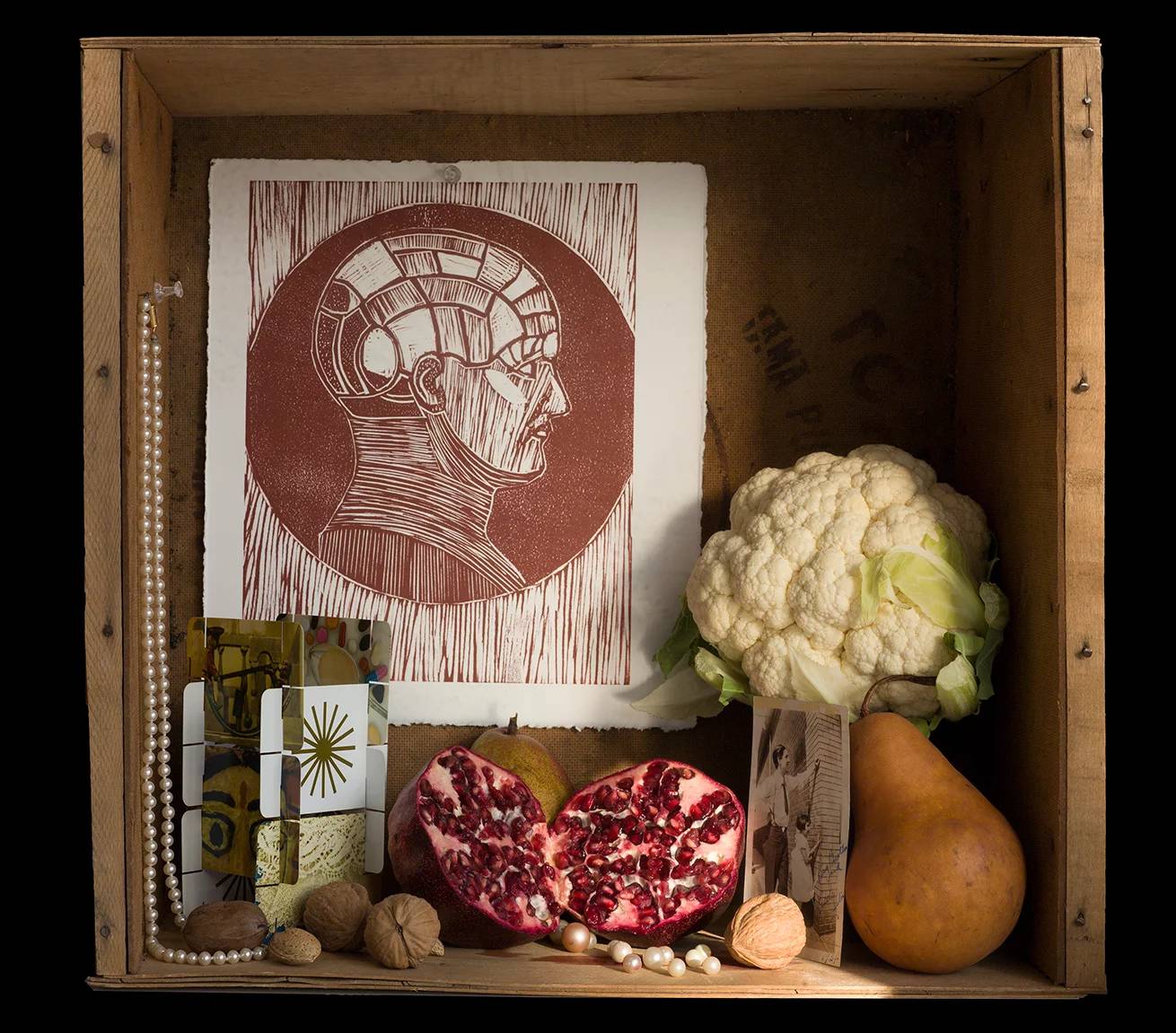
Darlene Kaczmarczyk, Homegoing, 2016-2017, Durachrome Print. 2021.79.1
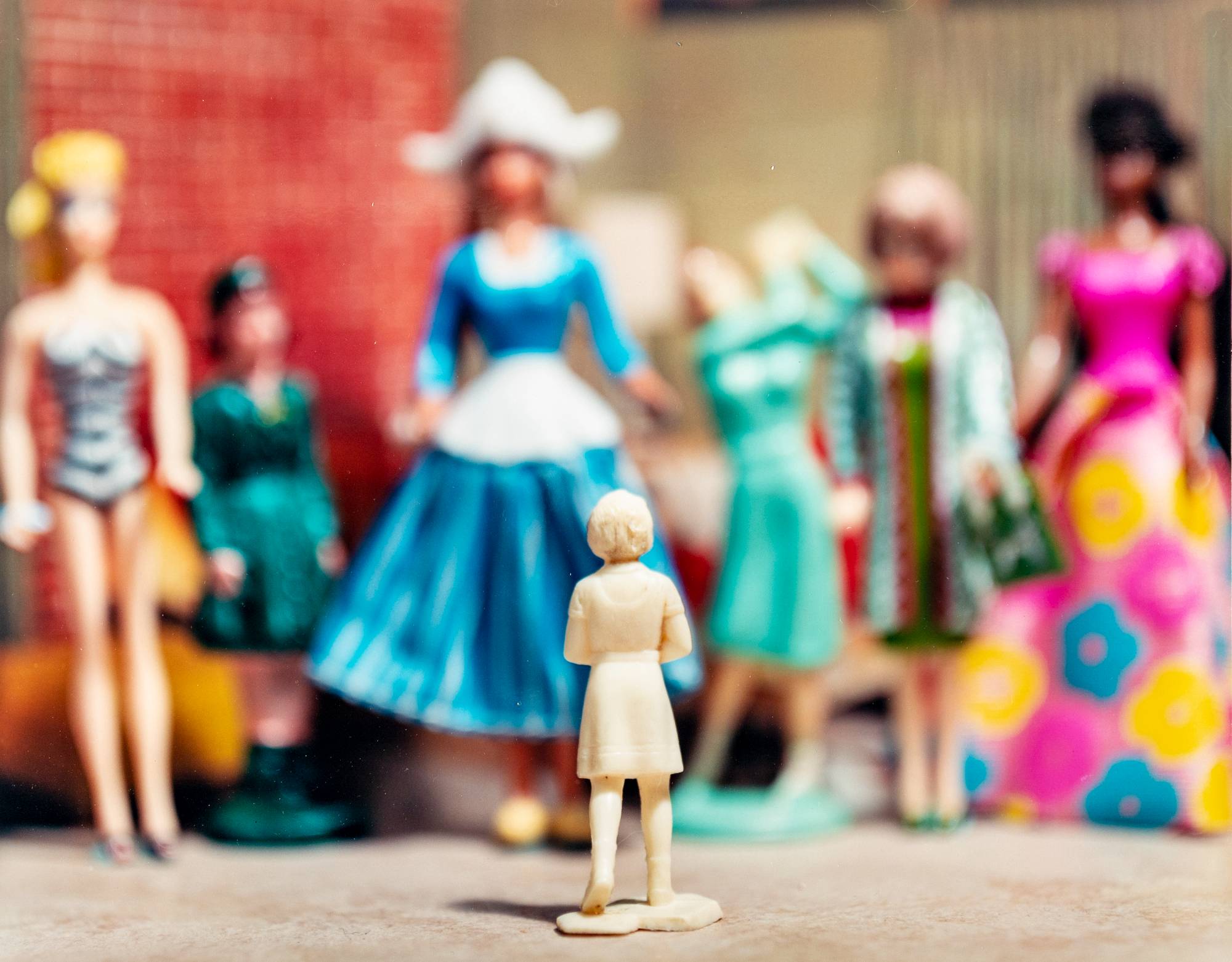
Darlene Kaczmarczyk, The White Family: Big Dutch, 2001, Durachrome Print. 2021.79.36
Claudia S. Liberatore
Paradox has always been of interest for local Grand Rapids photographer Claudia S. Liberatore. Through her photographs she combines close and far, warm and cool, inside and outside, people and place, while playing with what is both familiar and unfamiliar to the viewer. While early in her career Liberatore focused mainly on black and white photography, later she began to add color which gave a new dimension to her work, allowing her to better control the mood of the image. She is experimental with her work through creative techniques in the dark room, creating double images that bring new meanings to her photographs.
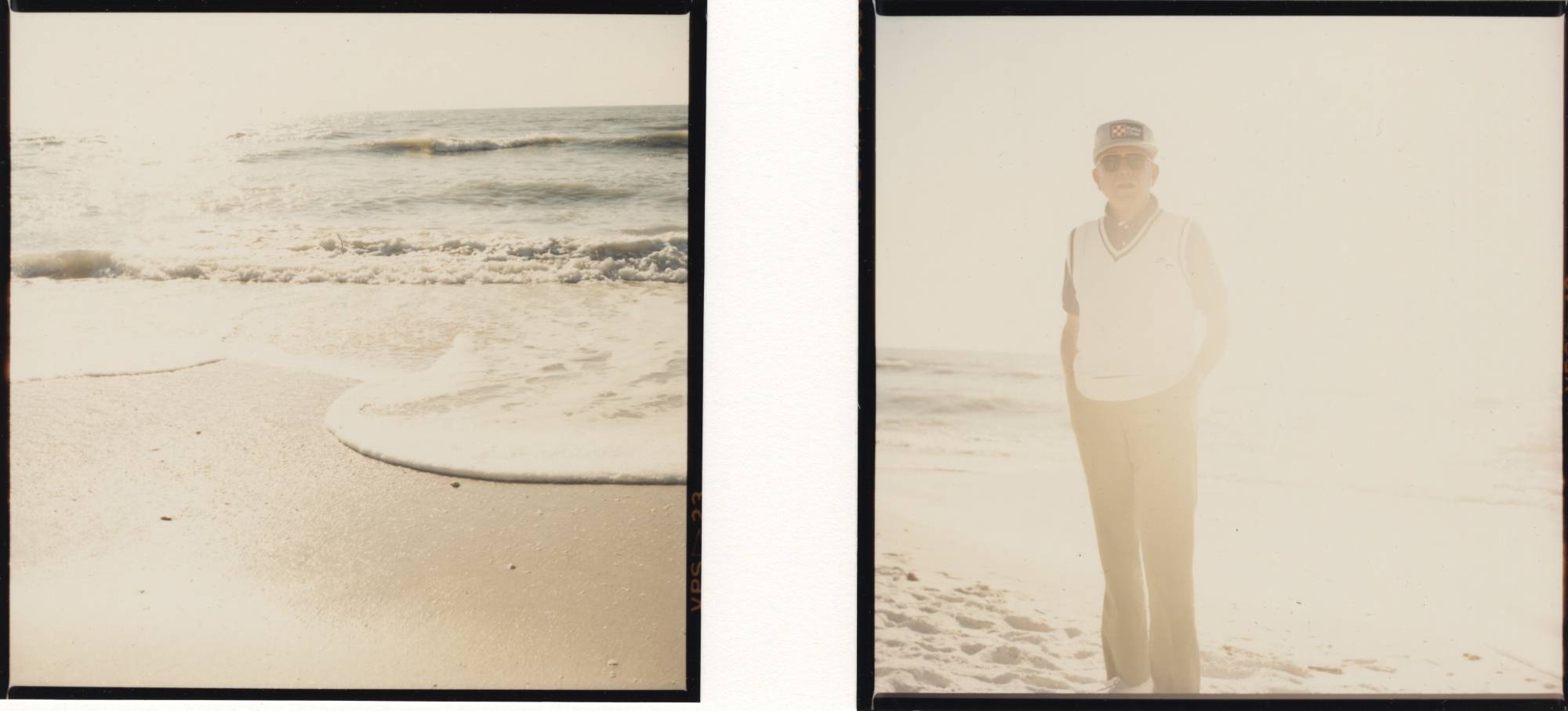
Claudia S. Liberatore, Dad, 1990. 2019.48.95
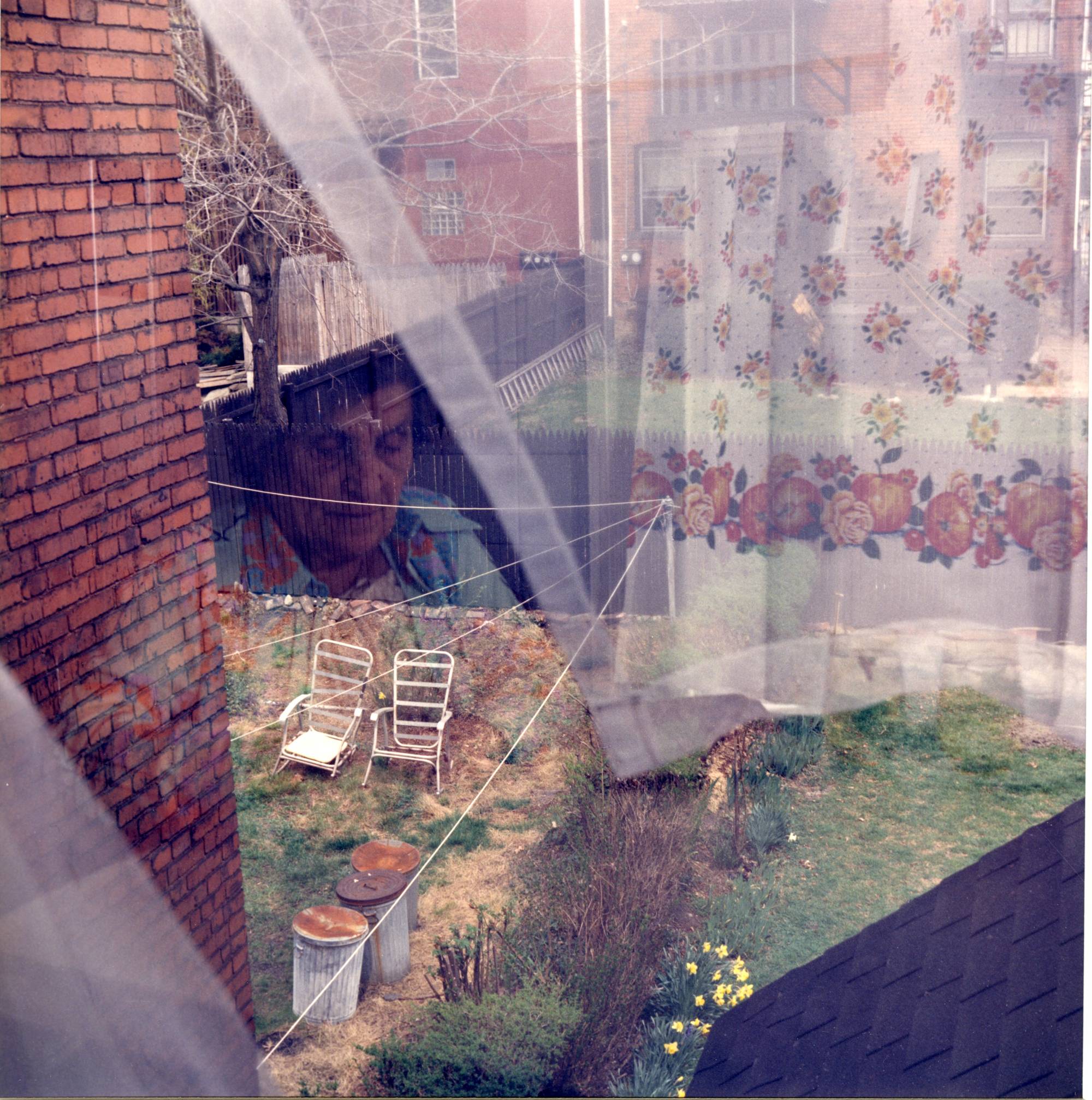
Claudia S. Liberatore, Thyme, 1989. 2019.48.232
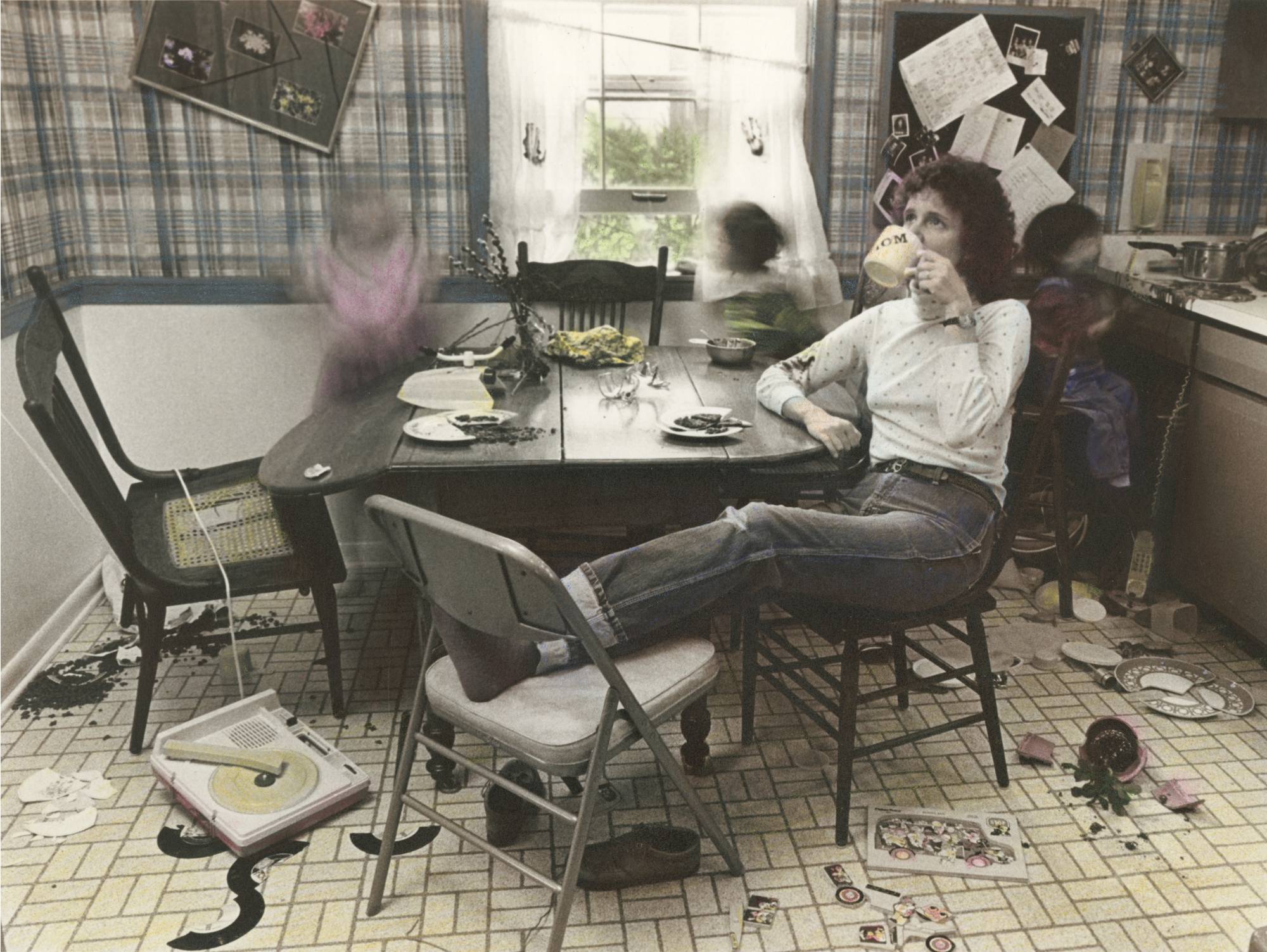
Claudia S. Liberatore, Untitled (Mom), circa 1980. 2020.21.90
Patrick Millard (1981-2011)
Patrick Millard was a photographer from the small West Michigan town of Lamont. His work in photography, new media and sound addressed ideas about media, digital culture, technology, and the interactions that human beings have within their own synthetic environment. In 2008, Millard began to show his work inside the virtual simulation world Second Life, giving his artwork the ability to advance beyond two-dimensional work and expand his ideas of simulation and virtual reality.
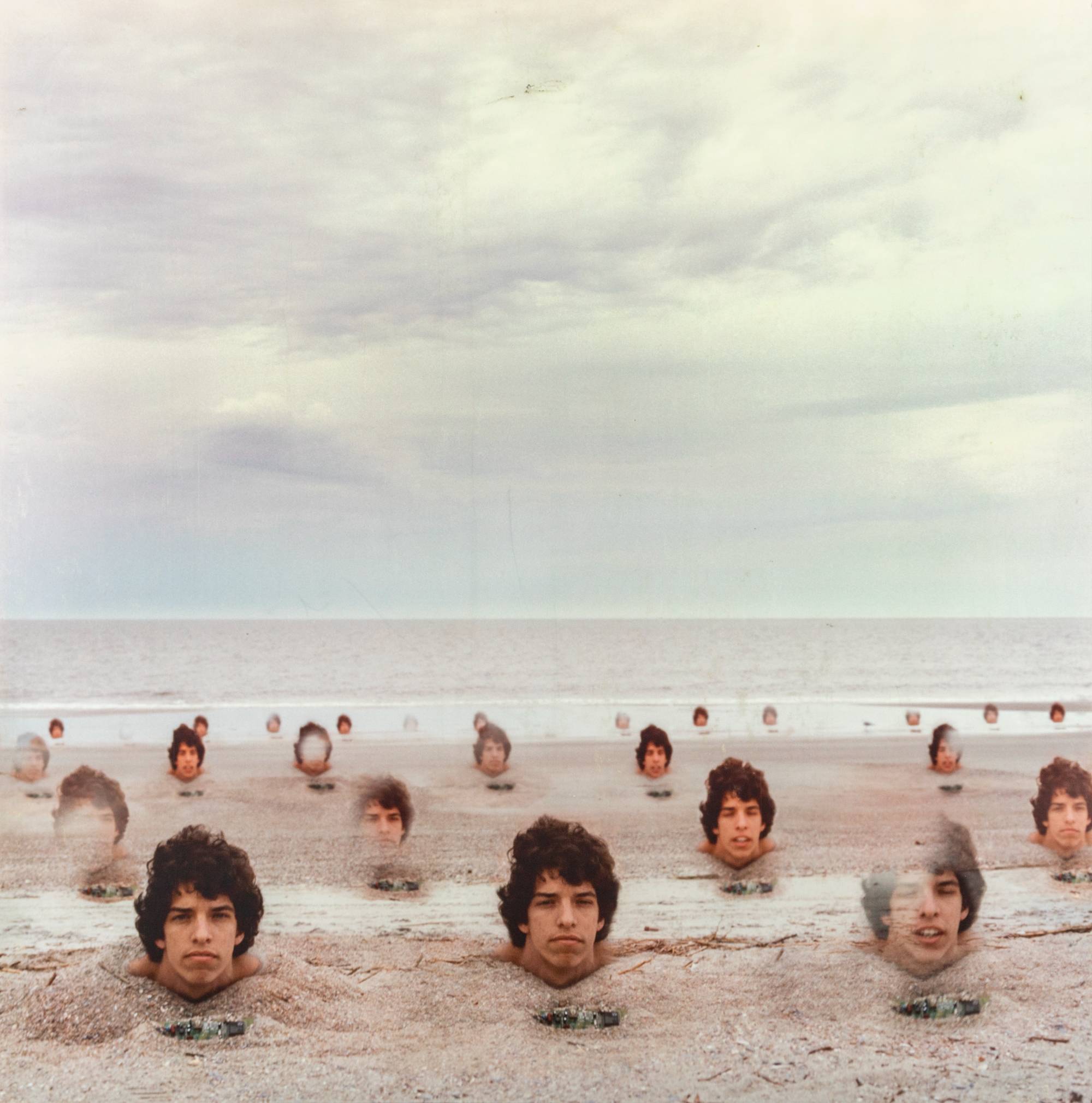
Patrick Millard, Formatting Gaia: Cultivating Minds, 2007. 2021.80.1
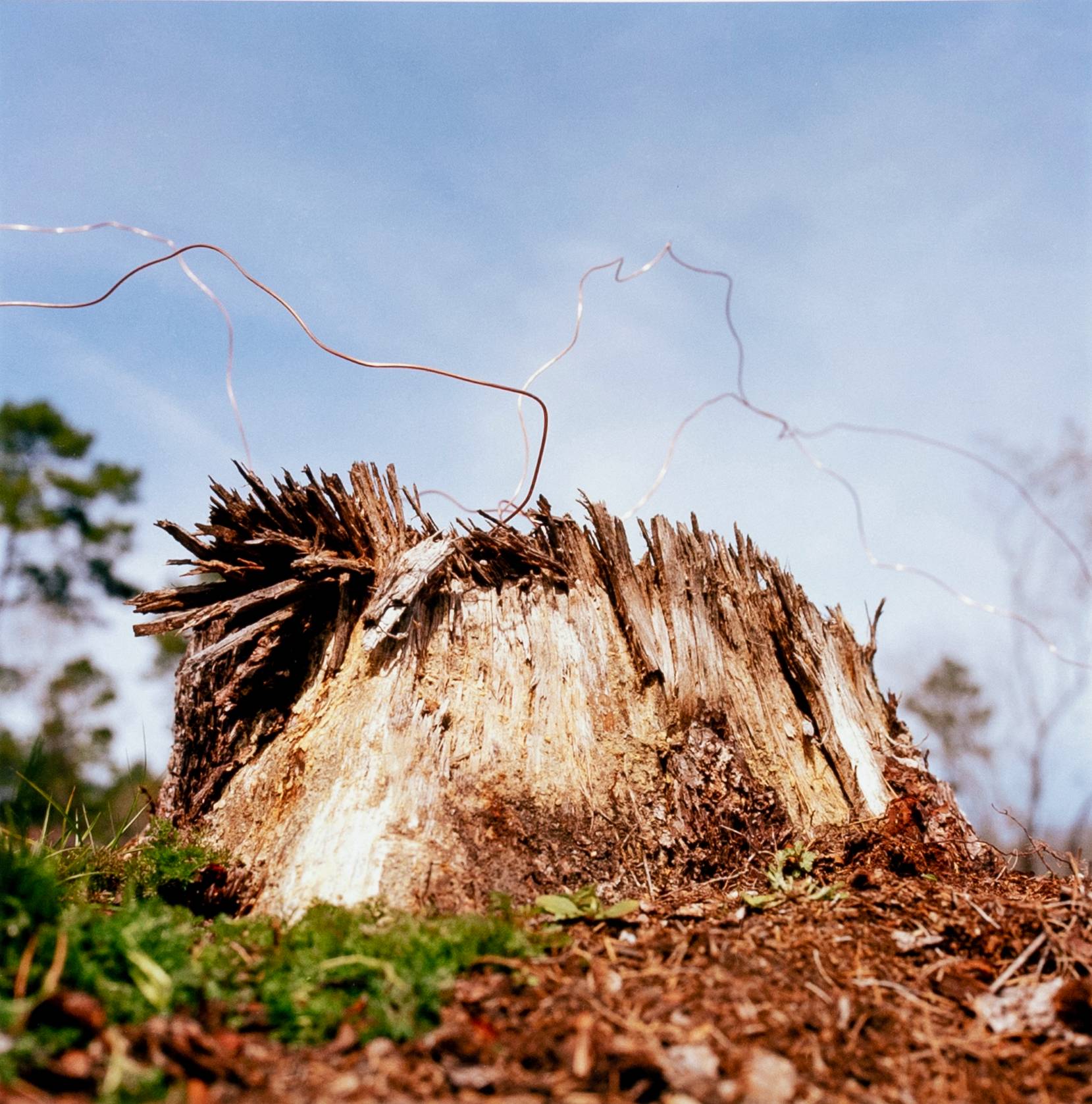
Patrick Millard, Formatting Gaia: Rising Swarm, 2007. 2021.80.14
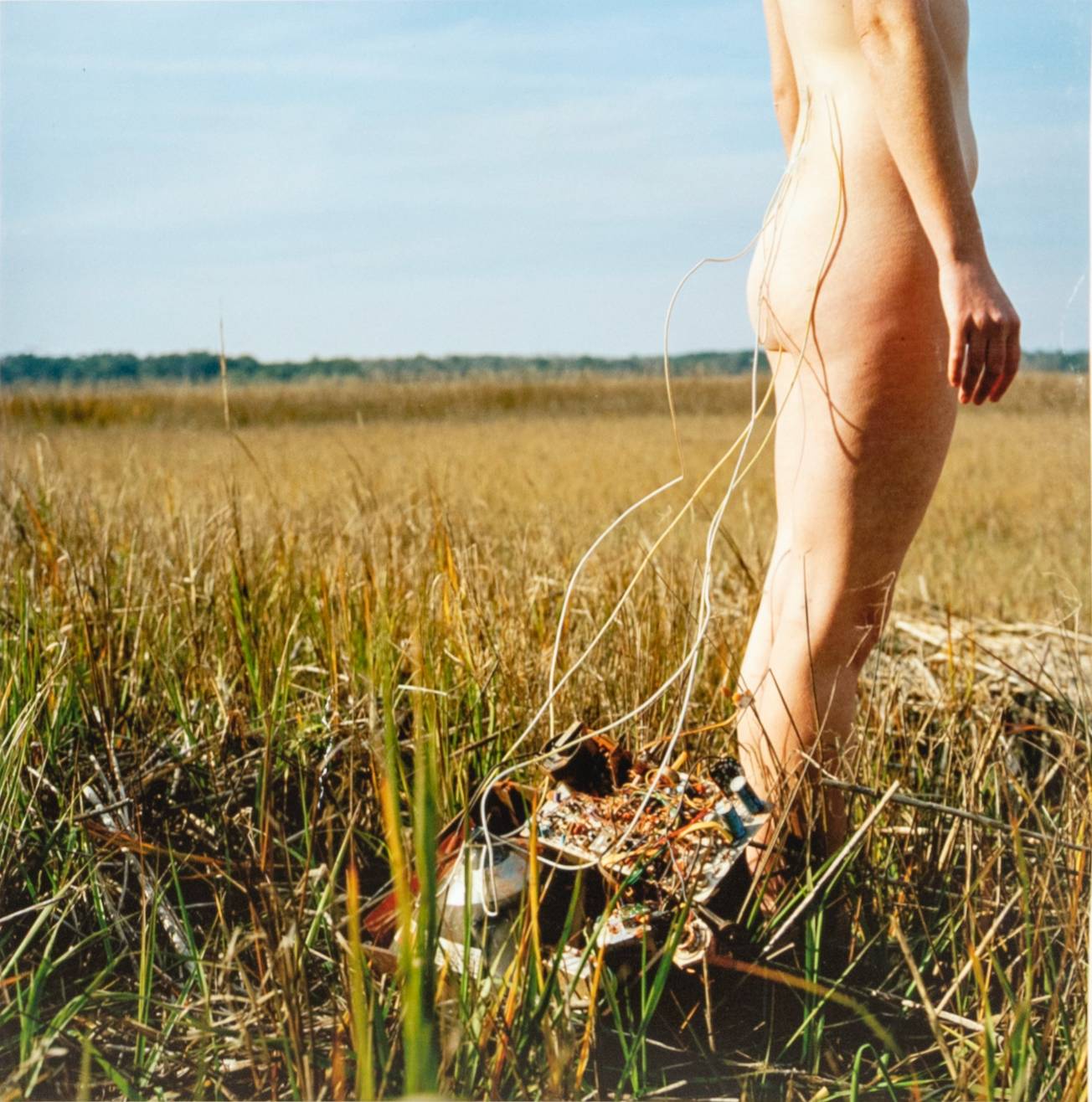
Patrick Millard, Formatting Gaia: Evening Reboot, 2007. 2021.80.24
GVSU Student and Alumni Work
Over the years, the GVSU Art Museum has acquired photographs from GVSU students and alums. GVSU offers Bachelor of Arts, Bachelor of Science and a minor in photography from within the Department of Visual & Media Arts. Studies in photography encompass the history, critical and aesthetic theory, and varied practice of photography as a medium of visual communication and expression in culture and society. The program teaches students to understand the visual language of photography, various techniques, and intellectual curiosity from behind the camera. To learn more about the photography program visit https://www.gvsu.edu/vma/photography-199.htm

Markeyna Jefferson, Taken For Granted: Supremacy Of God, digital photograph, 2018. 2018.82.1
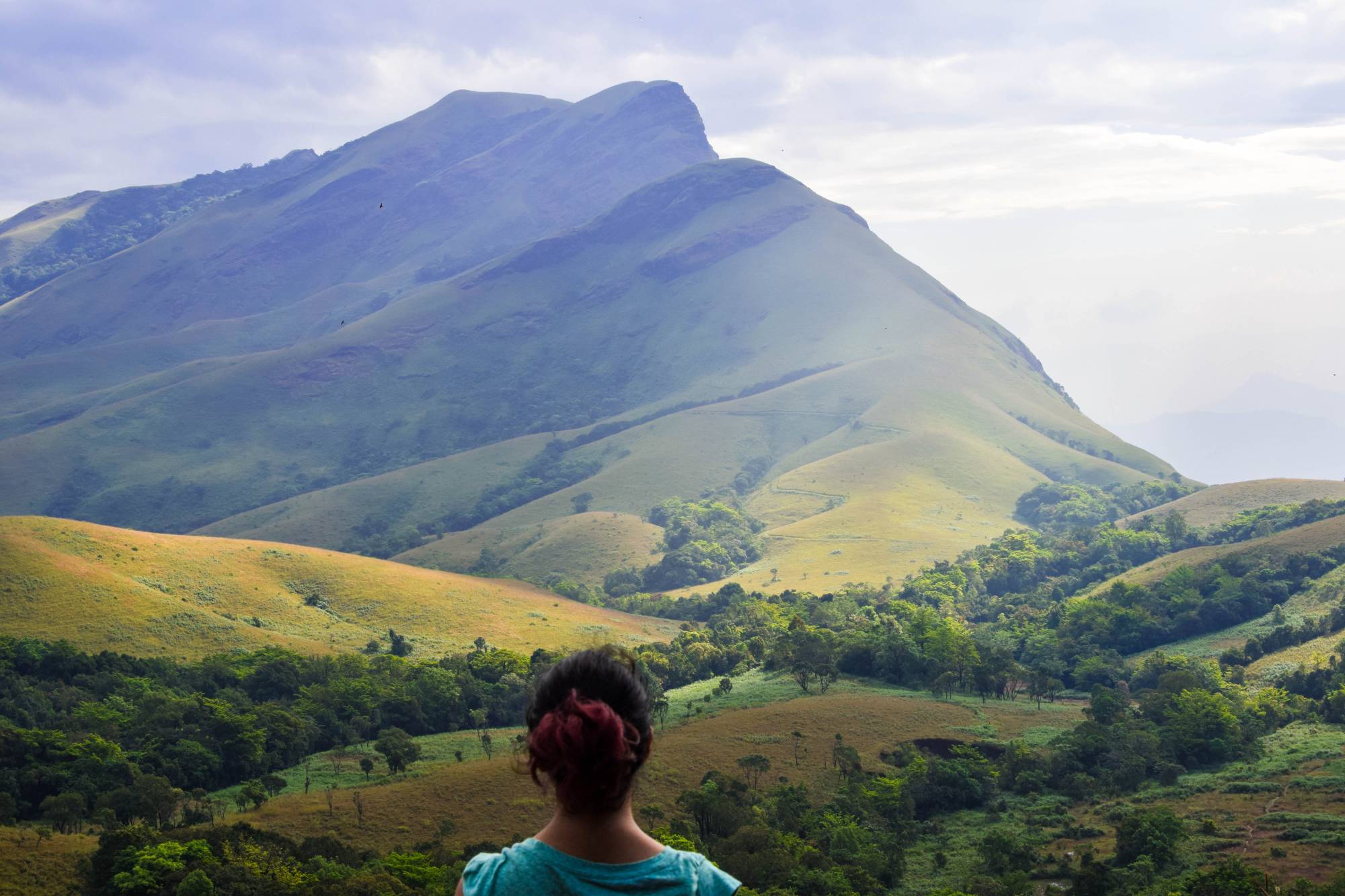
Maya Grant, Devanshi's Mountain, digital photography, 2016. 2018.20.17

Dylan Nelson, Incandescence, digital photograph, 2021. 2021.45.2
Art on Campus
For more information about the artwork selection and installation process at the DeVos Center for Interprofessional Health or other buildings on campus, please contact our Project Manager, Alison Christensen; [email protected].
University Art Collection
For questions related to any artwork in the University Art Collection, in storage or on view, please contact our Collections Manager, Nicole Webb; [email protected].
Learning
For questions about integrating artwork into curriculum, please contact our UX/Learning Manager, Amanda Rainey; [email protected].


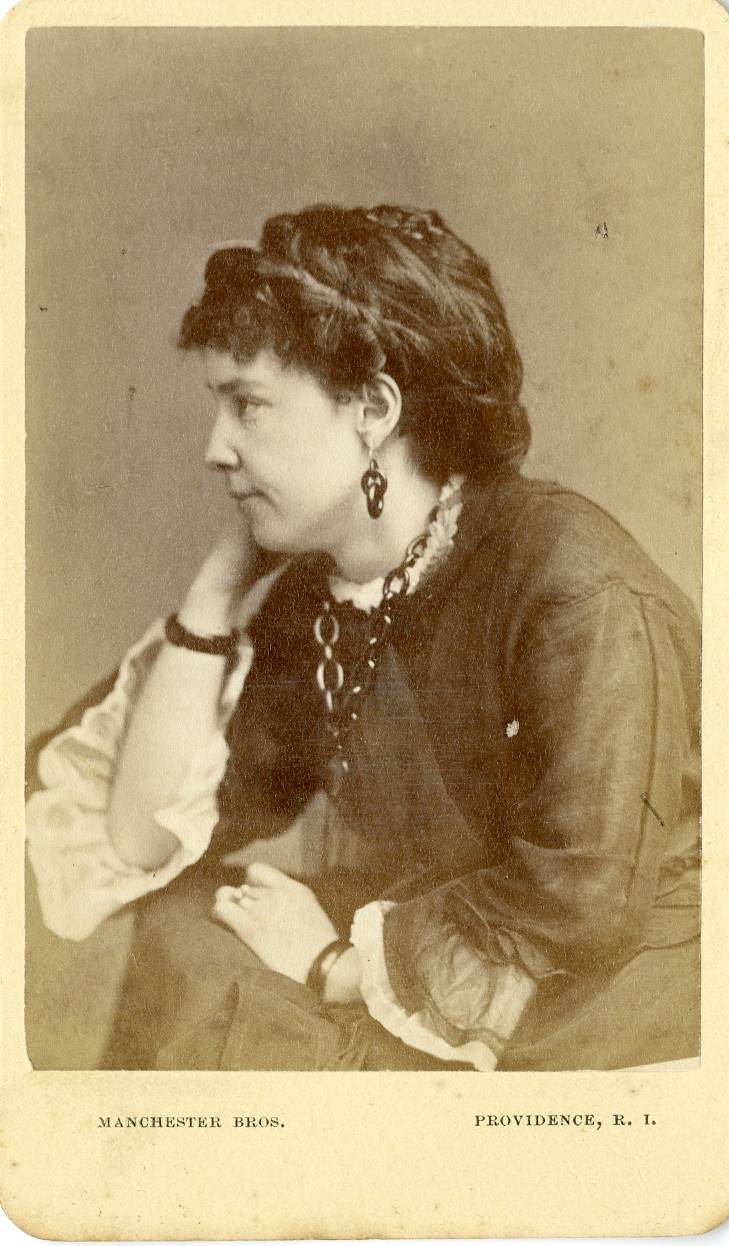
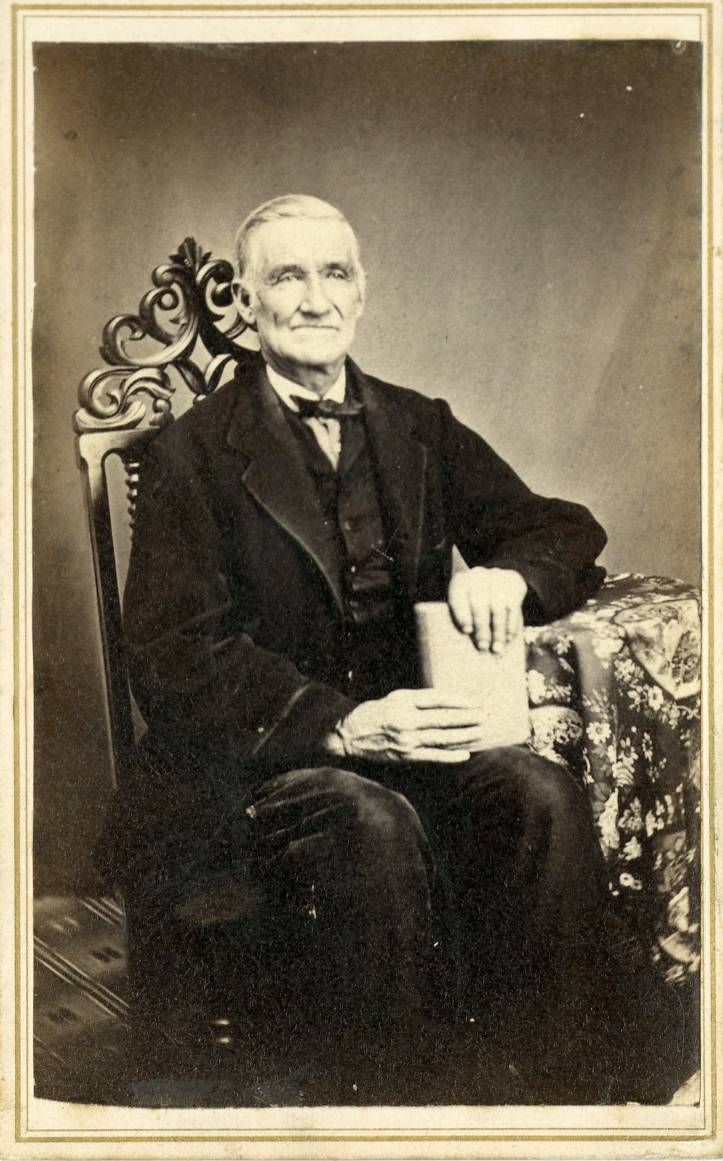
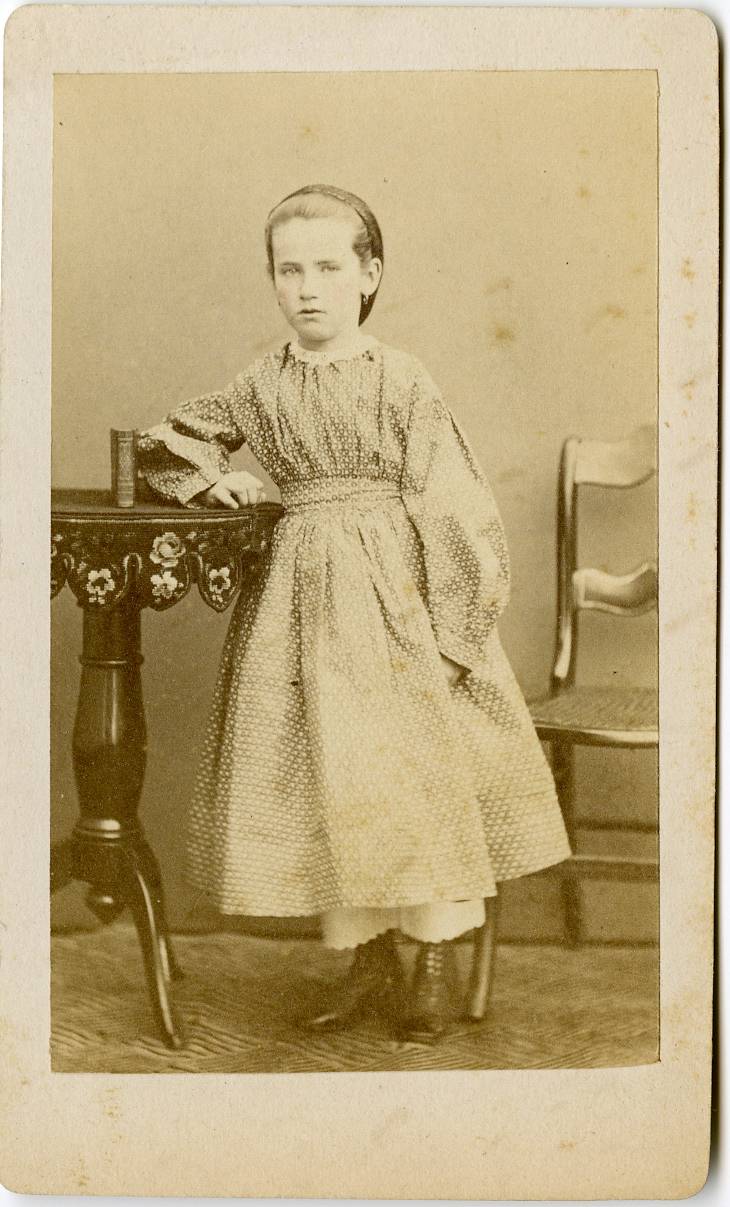
[1647536421].jpg)
[1647536494].jpg)
[1647536569].jpg)
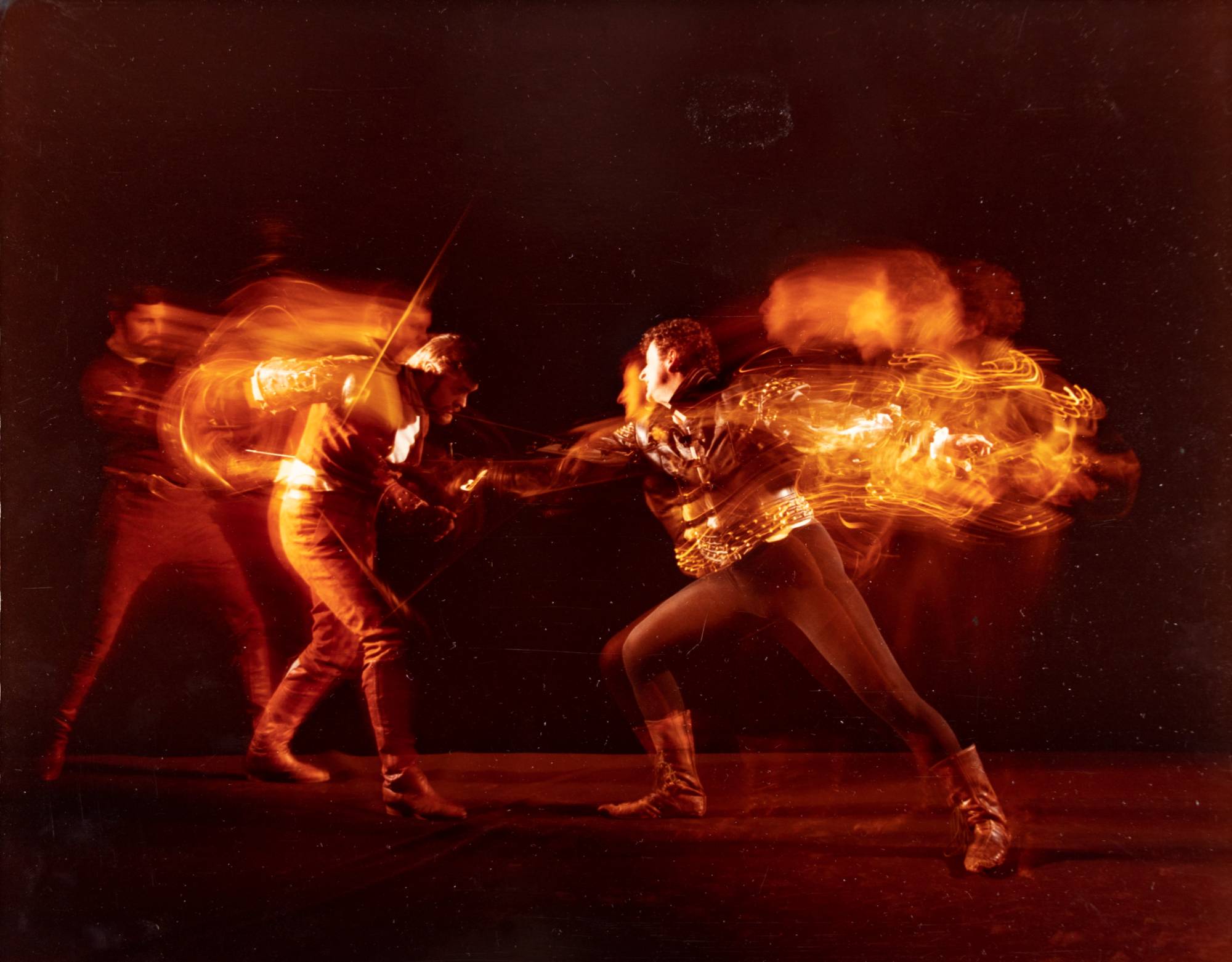
[1647536821].jpg)
